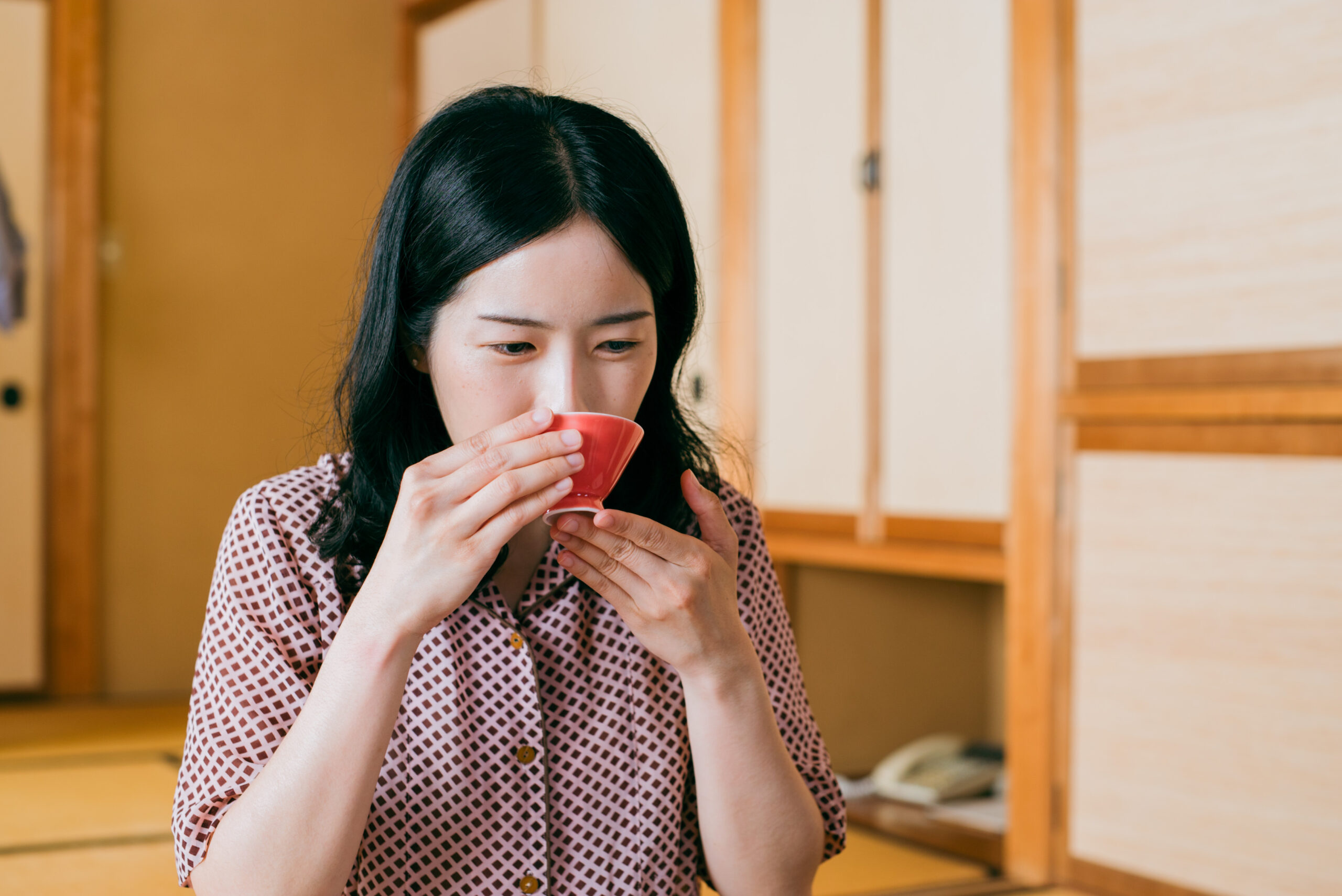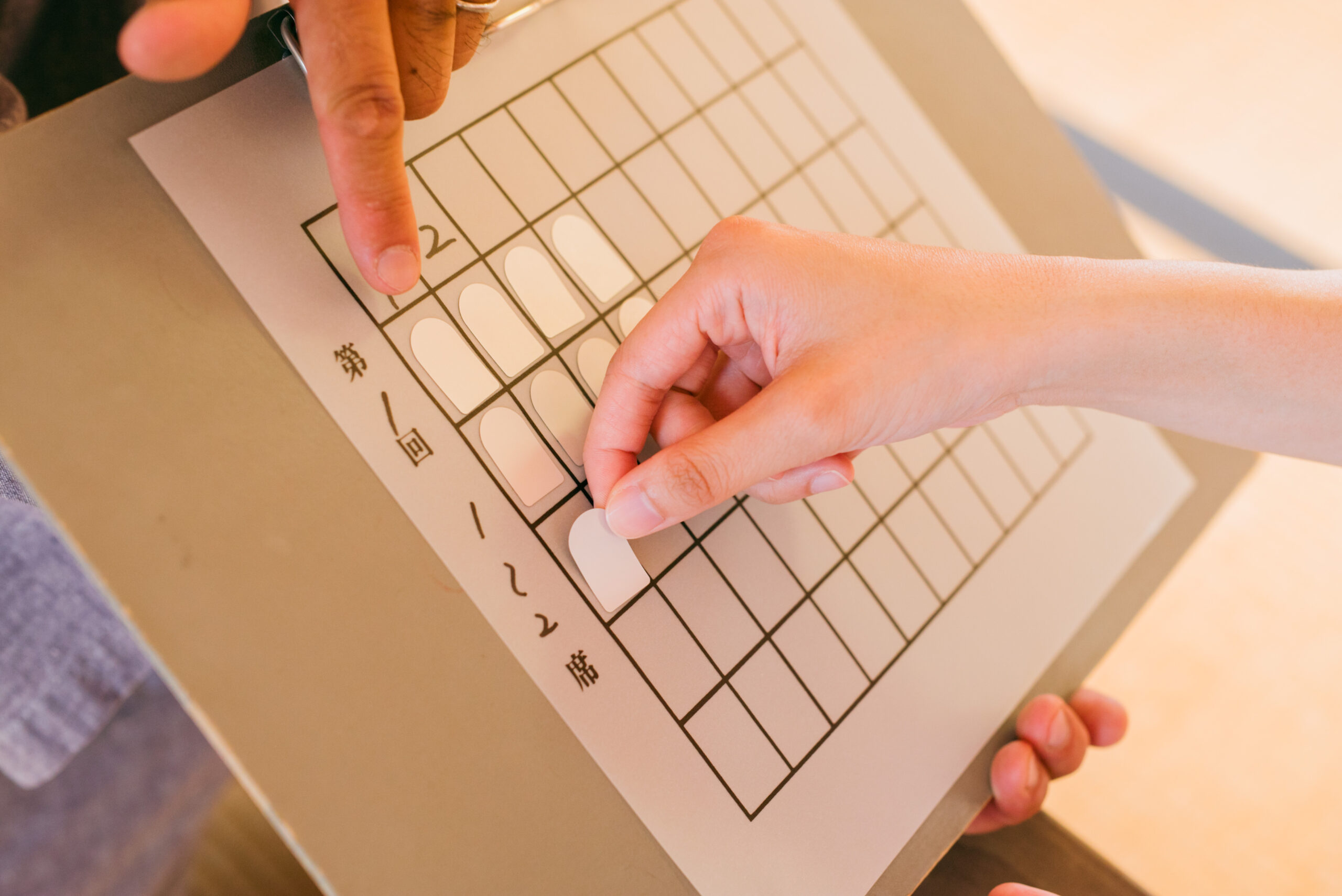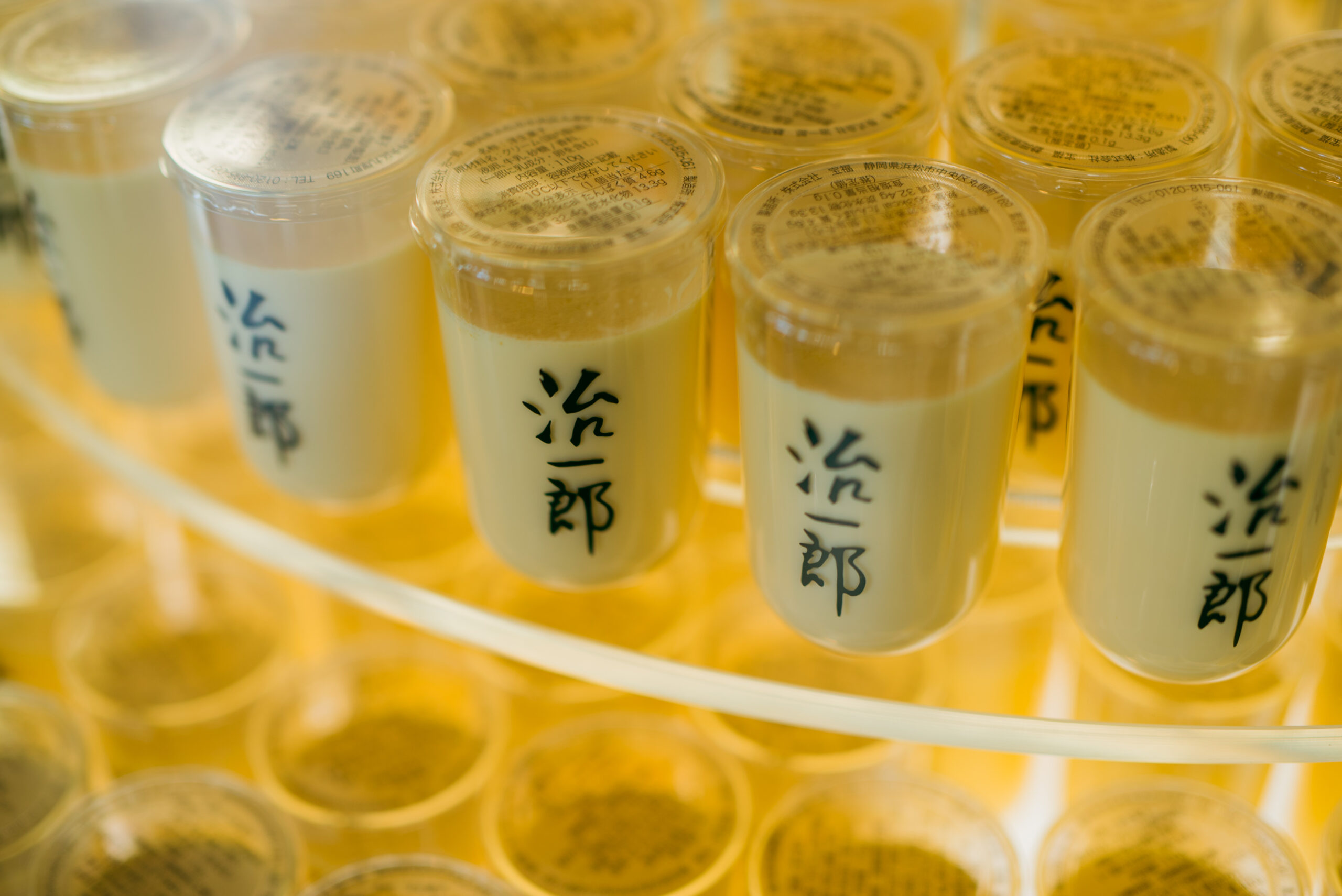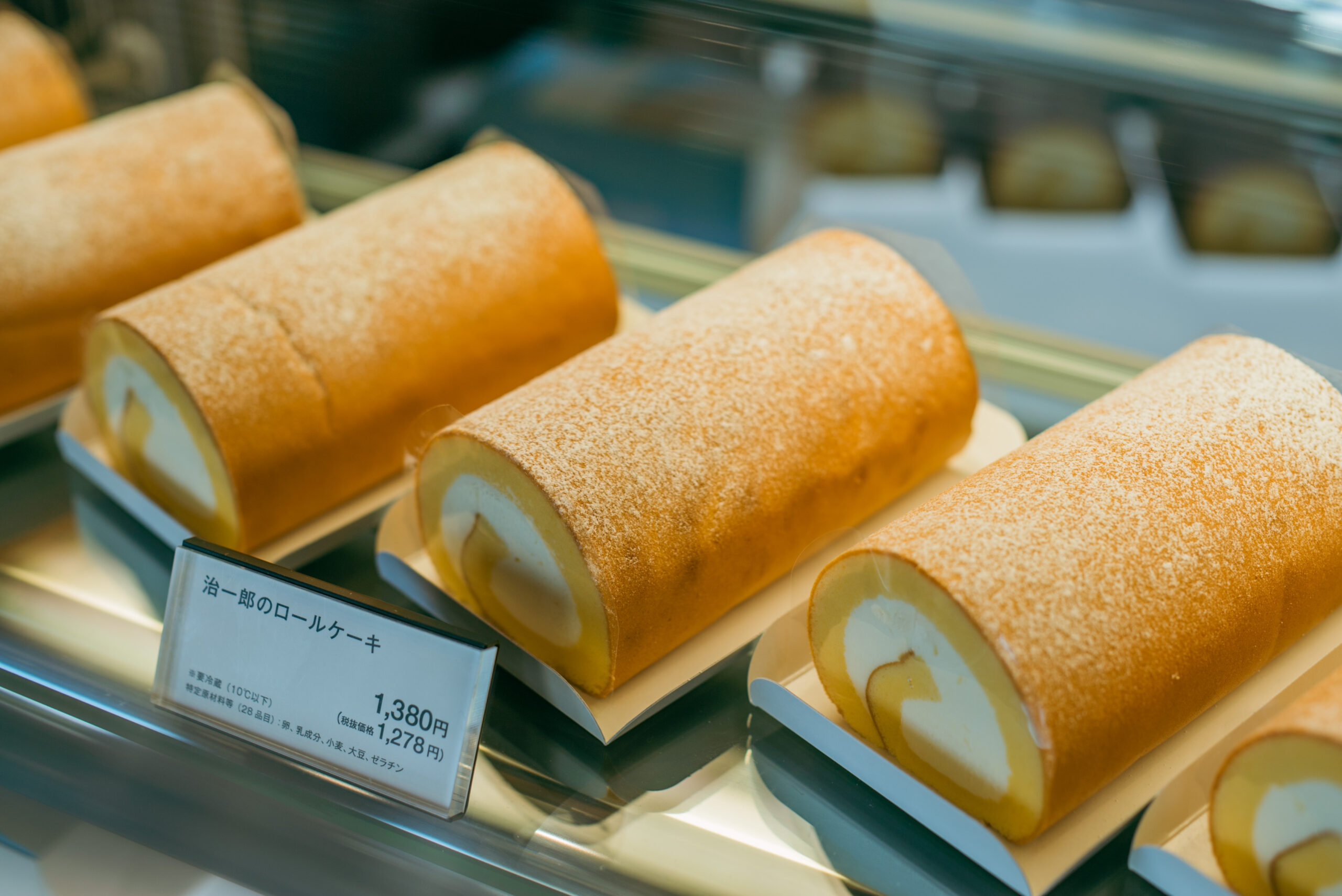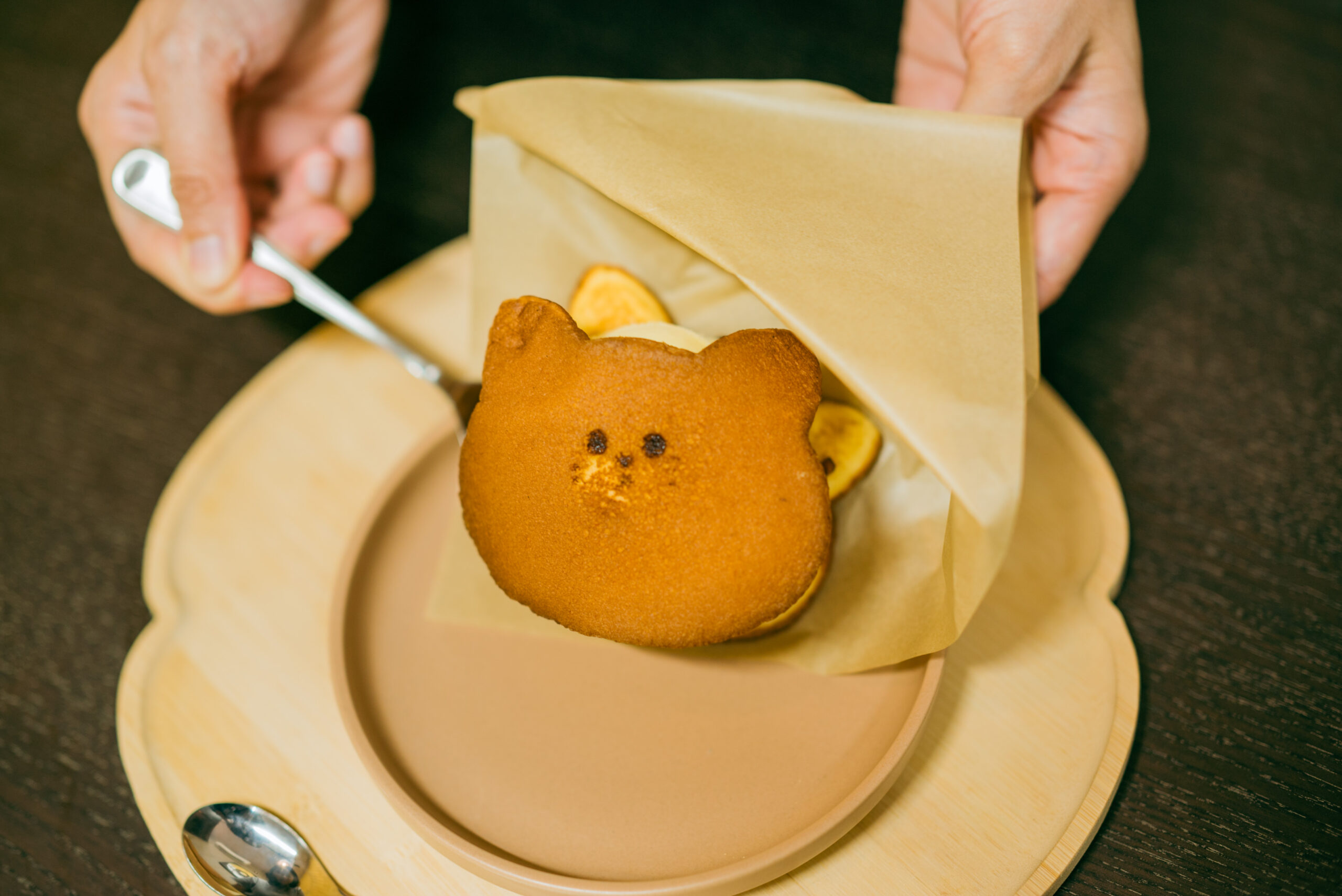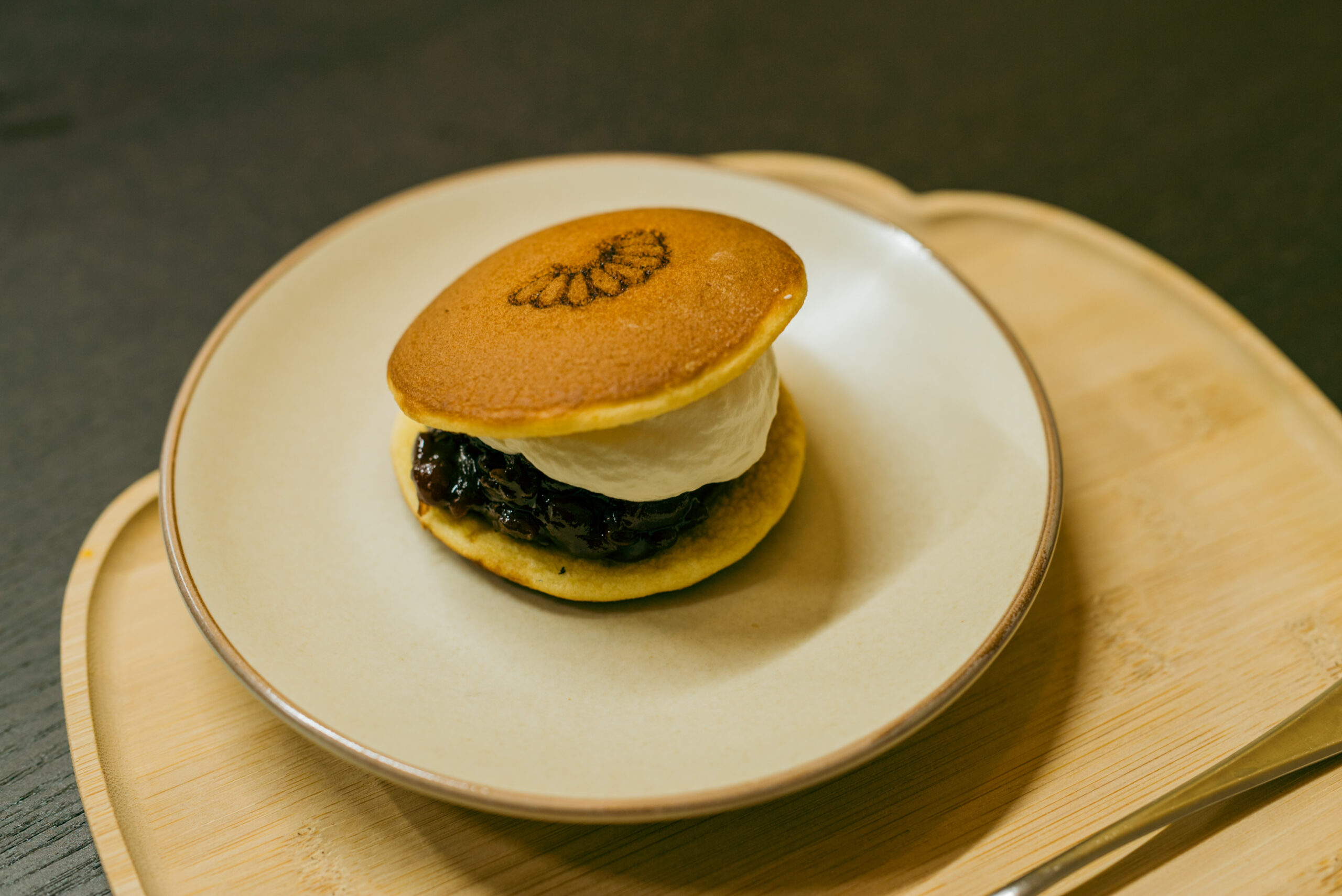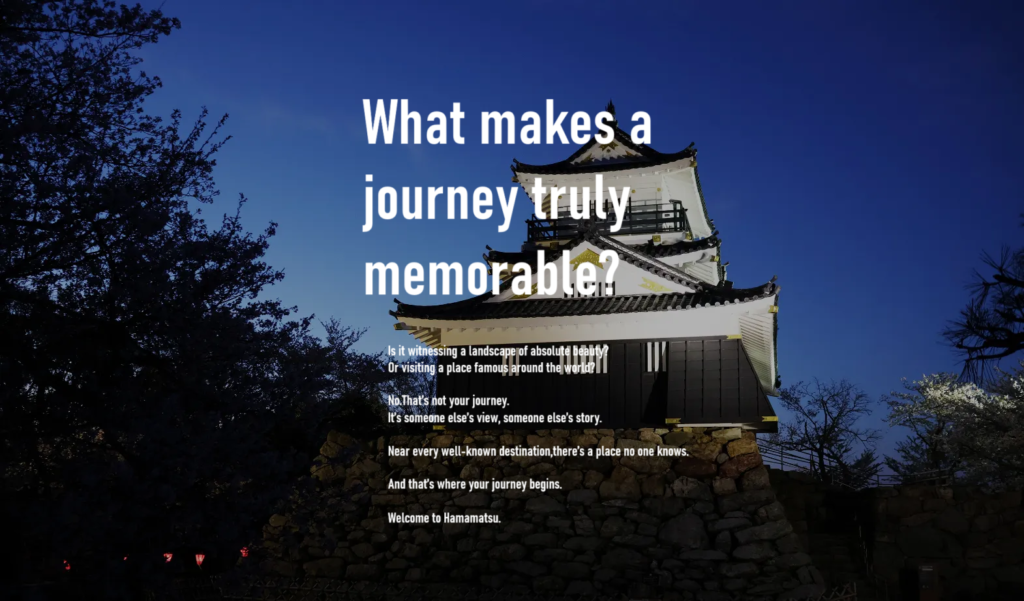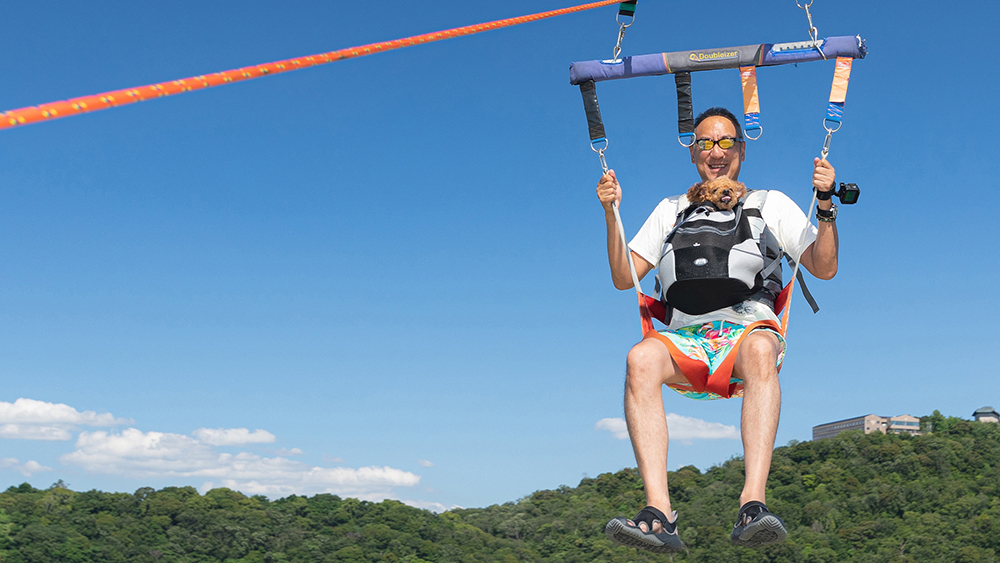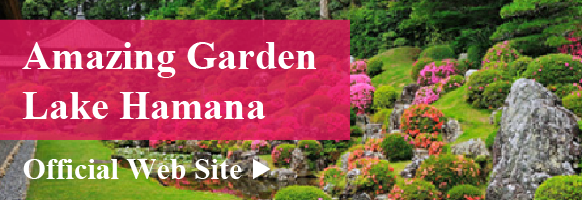Get to Know Hamamatsu
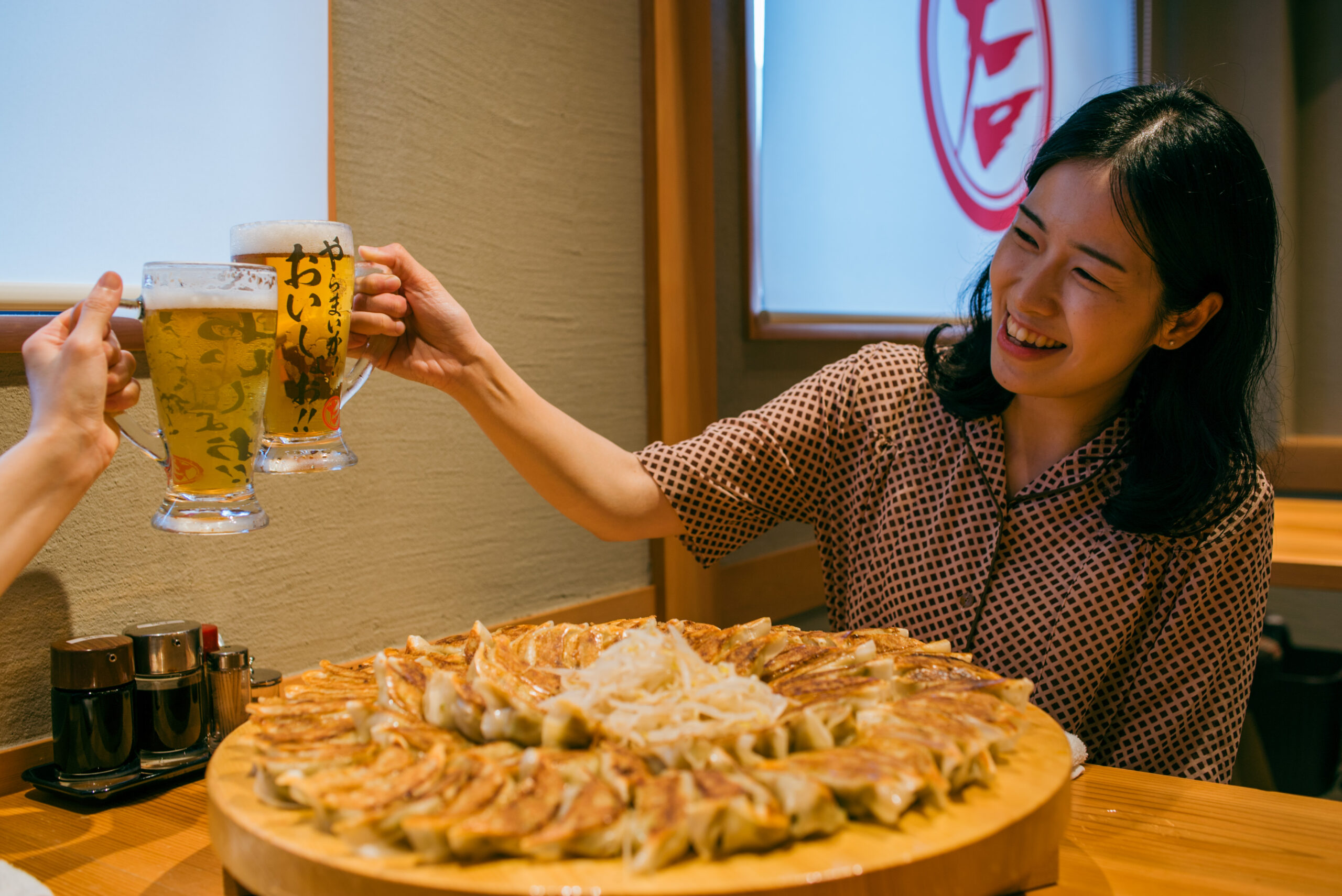
- Eat
3-Day Foodie Adventure in Hamamatsu – Just 90 Minutes From Osaka!
For a Japan itinerary crammed with interactive gourmet experiences, we recommend visiting Hamamatsu. Known as Japan’s “hidden culinary paradise,” Hamamatsu is just a 90-minute bullet train ride from Osaka, and boasts a wealth of local dishes like gyoza dumplings and unagi eel, along with exquisite tea. Join us on a 3-day trip to Hamamatsu’s most unique restaurants and food experiences, and find out why it’s becoming Japan’s next hotspot for culinary tourism!
The Heart of Japan! Where Is Hamamatsu?
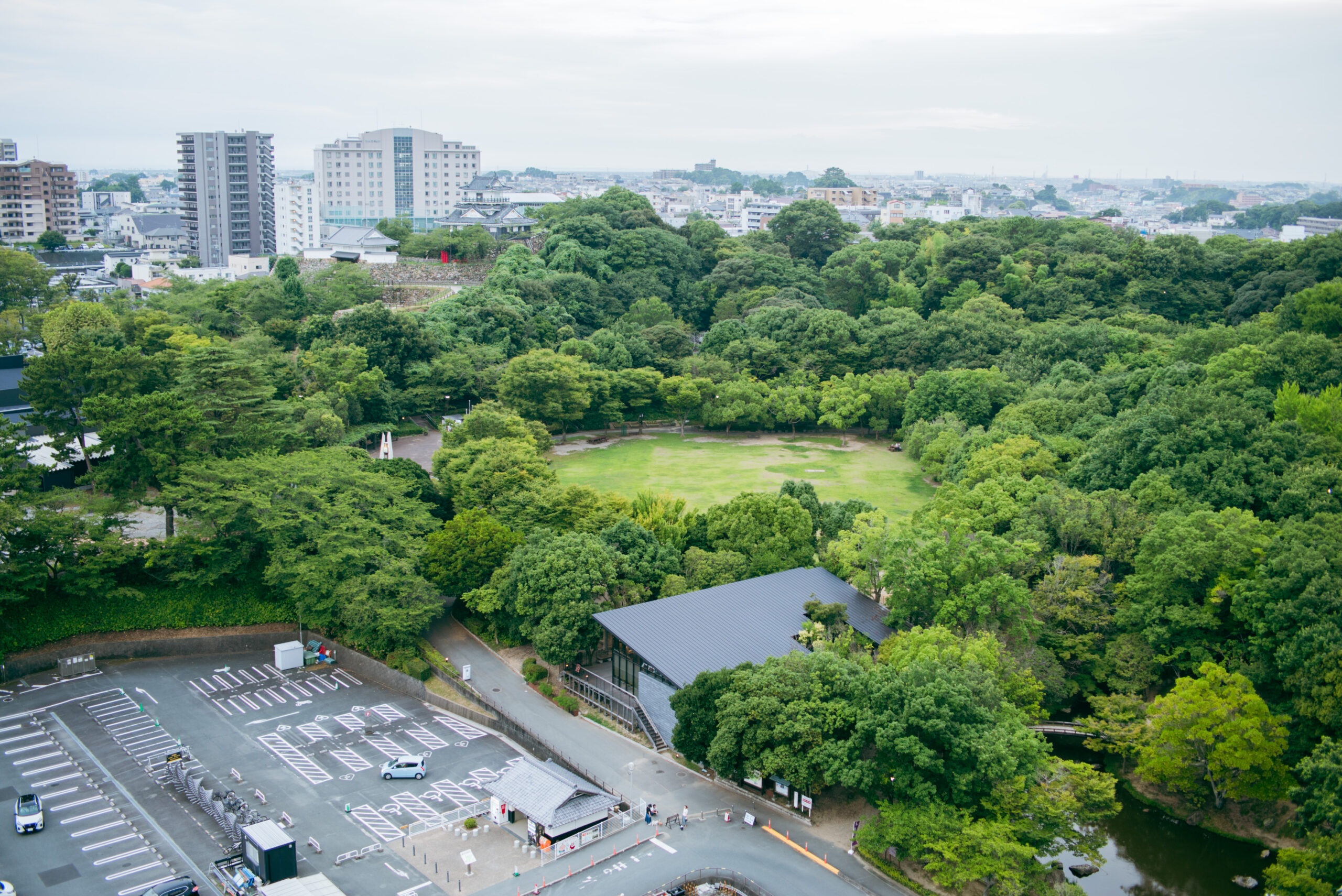
Hamamatsu sits almost in the center of Japan, in western Shizuoka Prefecture. This strategic location has long made it a crucial transportation hub, and it flourished over the Edo Period (1603-1868) as a castle town and post station along the Tokaido highway connecting east and west Japan. Today, the Tokaido Shinkansen bullet train and modern expressways grant Hamamatsu smooth connections to both ends of the country.
Hamamatsu is blessed with a mild climate year-round, and is full of scenic landscapes, historic sites, and world-class companies. It also boasts a diverse culinary scene that truly sets it apart. In this article, we’ll be visiting Hamamatsu to uncover its best restaurants and food experiences.
How to Get to Hamamatsu: Just 90 Minutes From Osaka by Bullet Train
The JR Tokaido Shinkansen bullet train runs directly from Shin-Osaka Station to Hamamatsu Station in 90 minutes, making it easy to stop by Hamamatsu on your way to Tokyo. It’s also a 30-minute ride from Nagoya Station on the same line. For those flying, an airport bus from Chubu International Airport will arrive at Hamamatsu in about 2 hours.
Introducing Hamamatsu’s Culinary Culture
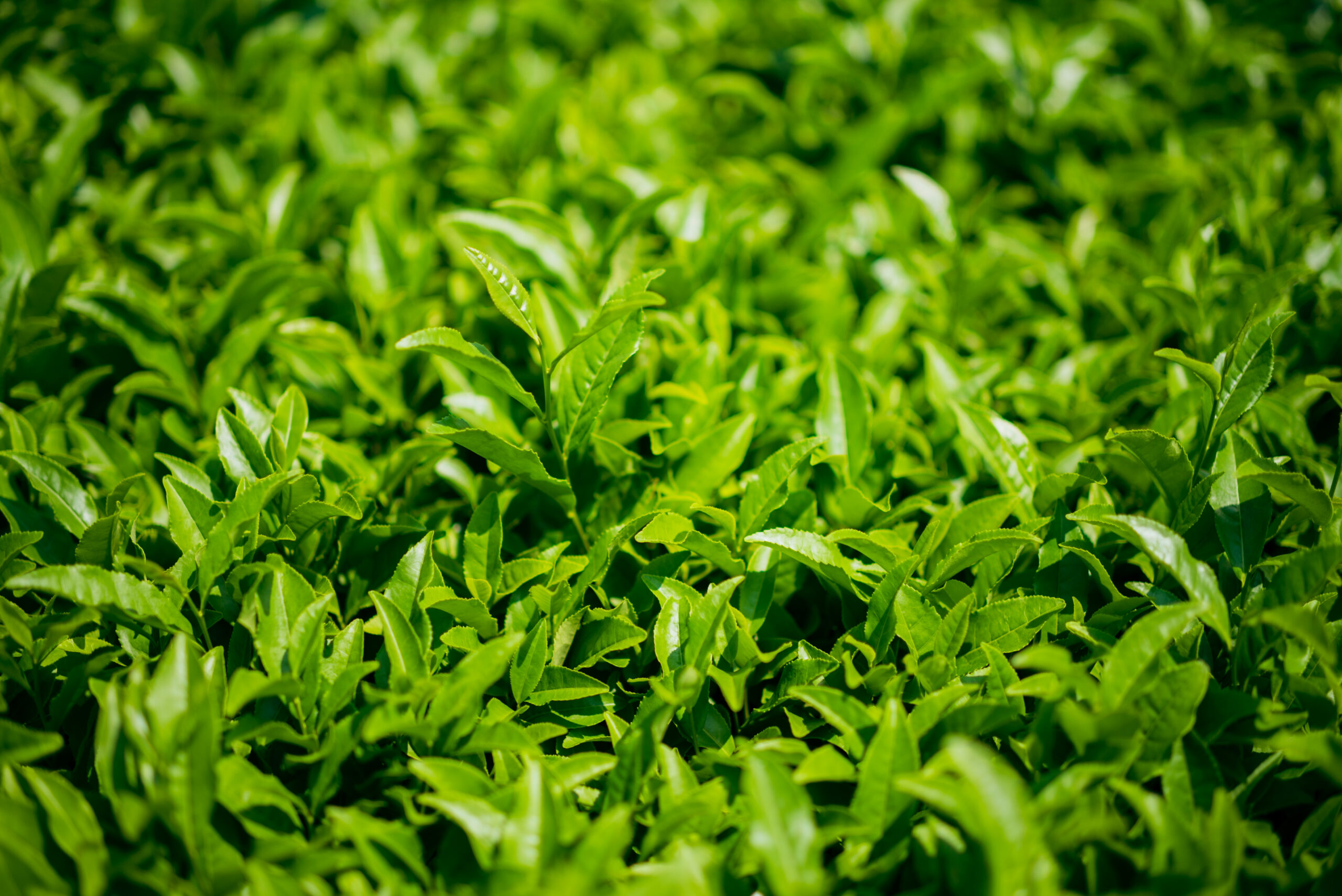
Being a part of Shizuoka Prefecture, one of Japan’s leading tea-growing regions, Hamamatsu is full of plantations, cafes, and tea shops. Shizuoka green tea is loved for its rich aroma and mild flavor, and there are countless opportunities to enjoy it all throughout Hamamatsu.
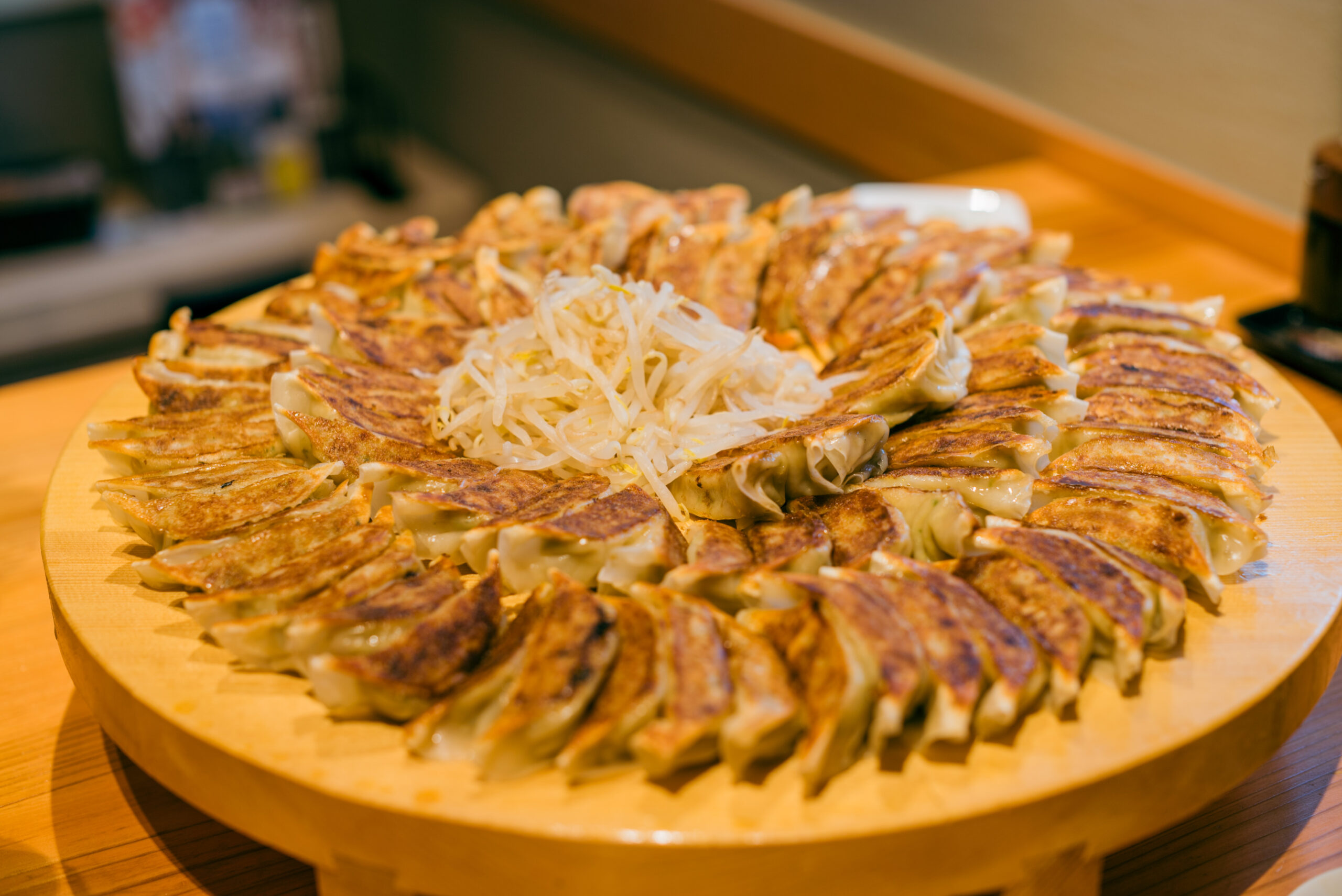
As for food, Hamamatsu is all about gyoza dumplings, which are filled with rich and juicy cabbage and fresh pork covered in a thin, crispy skin. It’s also famous for eel cuisine, with fatty eels raised in Lake Hamana roasted over charcoal and served as “kabayaki” and “shiroyaki.” For sweet tooths, “unagi pie” are biscuits made in Hamamatsu with a crisp crust, sugary taste, and a hint of eel extract.
We visited Hamamatsu to track down the best restaurants and stores to enjoy all these delicacies and more!
Our Hamamatsu 3-Day Gourmet Tour
Day 1: Hamamatsu's Classic Foods
Our gastronomic journey into Hamamatsu kicked off with its go-to foods and drinks, like savory eel, fragrant tea, and grilled gyoza. As night falls, we’ll retire to a hotel beside Hamamatsu Castle Park, with views of the illuminated castle tower. But first, let us show you the best restaurants and shops we found to experience Hamamatsu’s classic cuisine.
While Hamamatsu Station is surrounded by dining options, we rented a car to make the most of our time. As Shizuoka Prefecture’s largest city, Hamamatsu has well-maintained roads and relatively light traffic outside of peak hours, letting international travelers comfortably drive to restaurants off the beaten path.
Lunch: Eel Dishes at Nakanosho
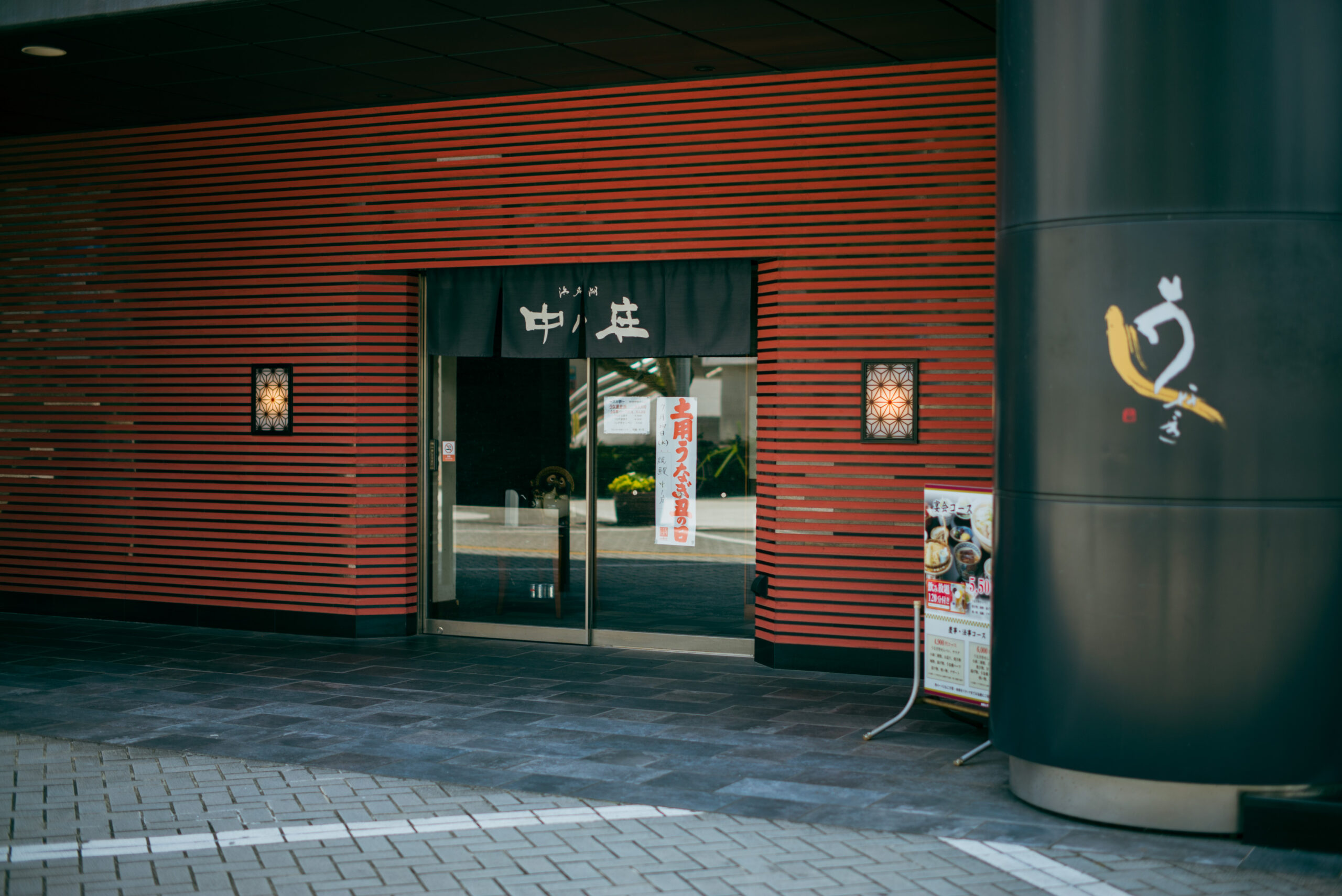
After hopping off the bullet train at Hamamatsu Station, a 6-minute walk brought us to Nakanosho, one of Hamamatsu’s most esteemed eel restaurants.
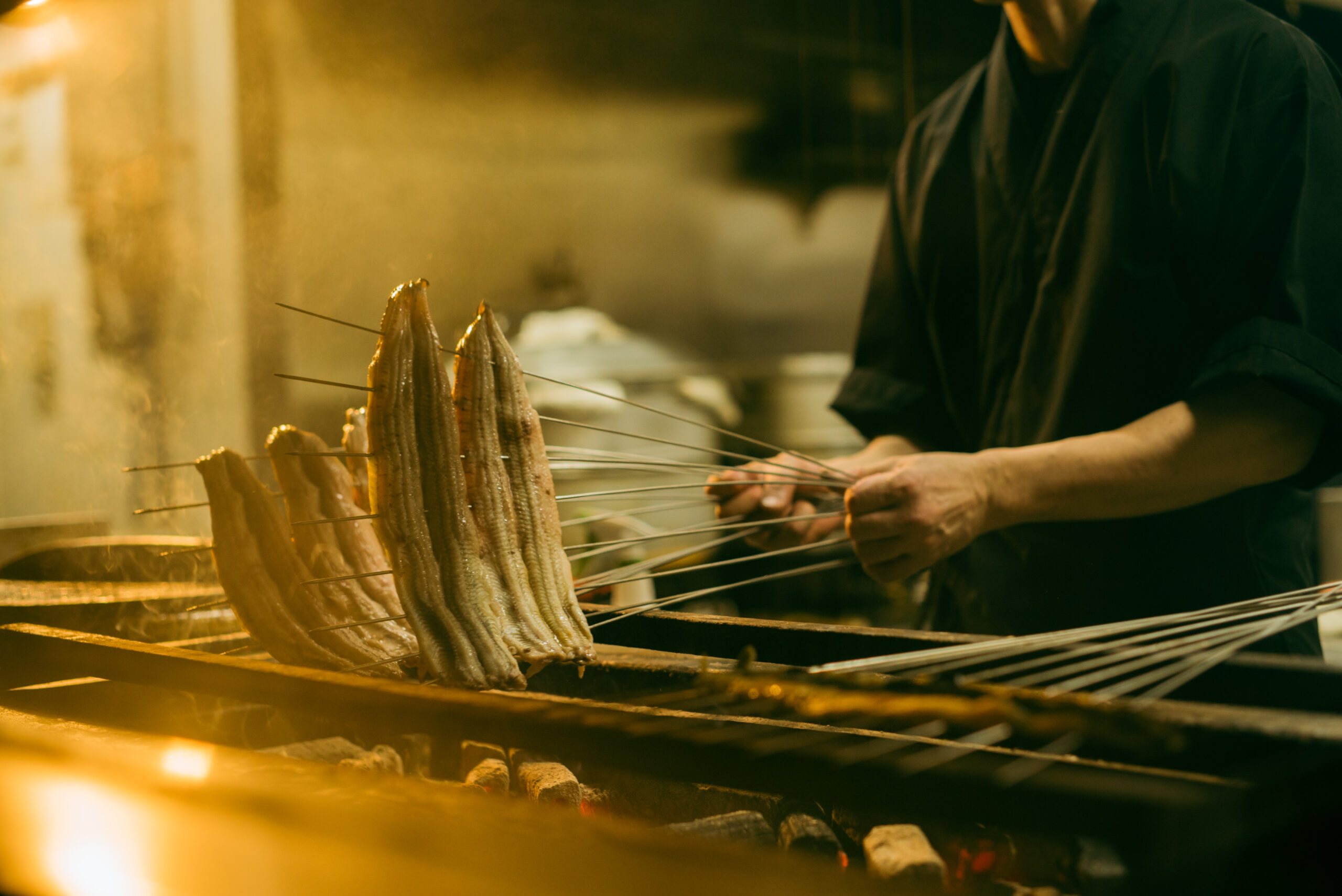
Hamamatsu’s eel farming traditions date back to the late 19th century, when Lake Hamana was picked to cultivate eels thanks to its abundant water and ideal climate. Hamamatsu eels continue to be popular throughout Japan for their succulent meat and distinctive flavor.
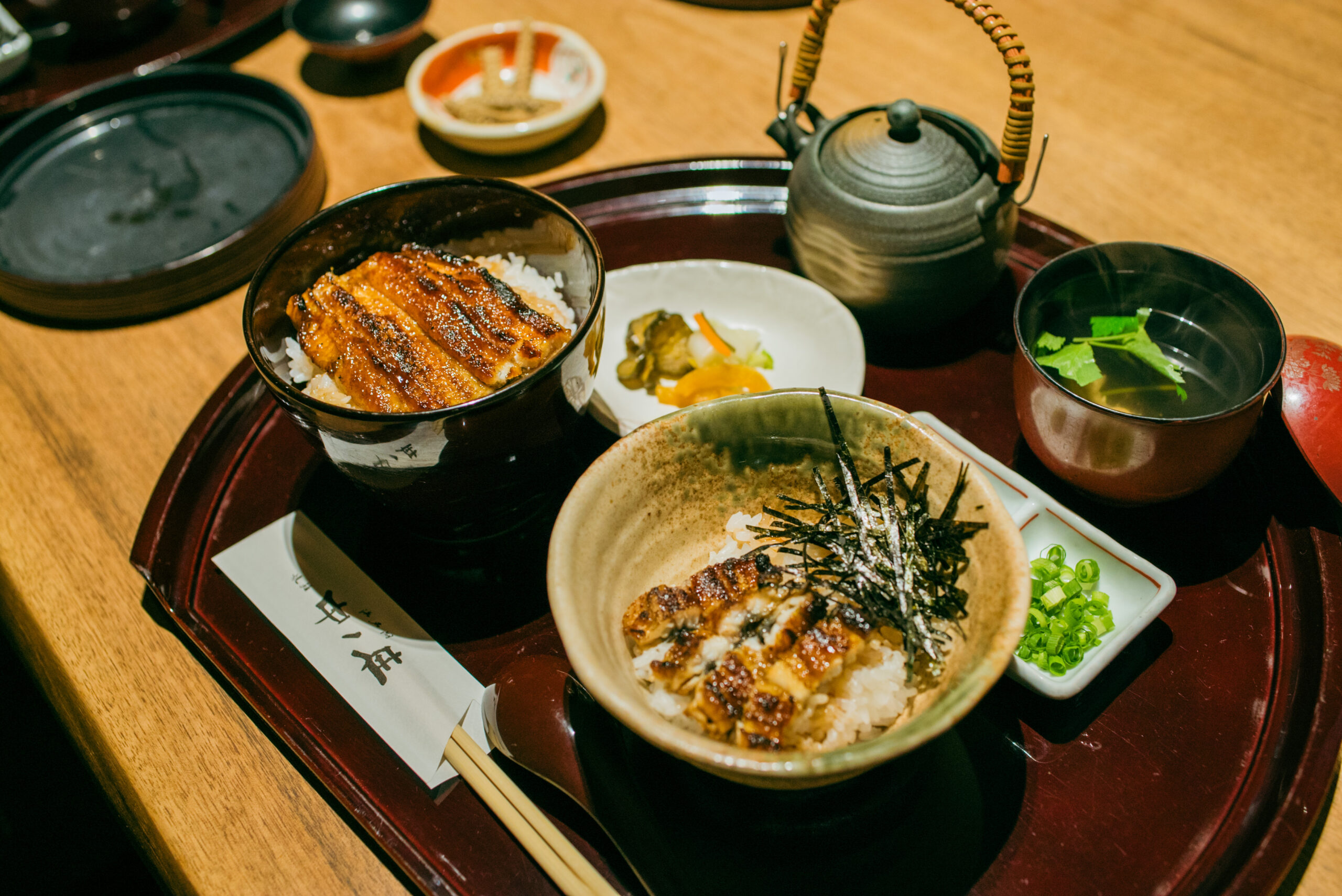
Nakanosho sources their eels fresh each day. The rich, fatty meat is grilled slowly over high-quality “binchotan” charcoal, yielding a crisp outer layer and tender inside with potent aromas.
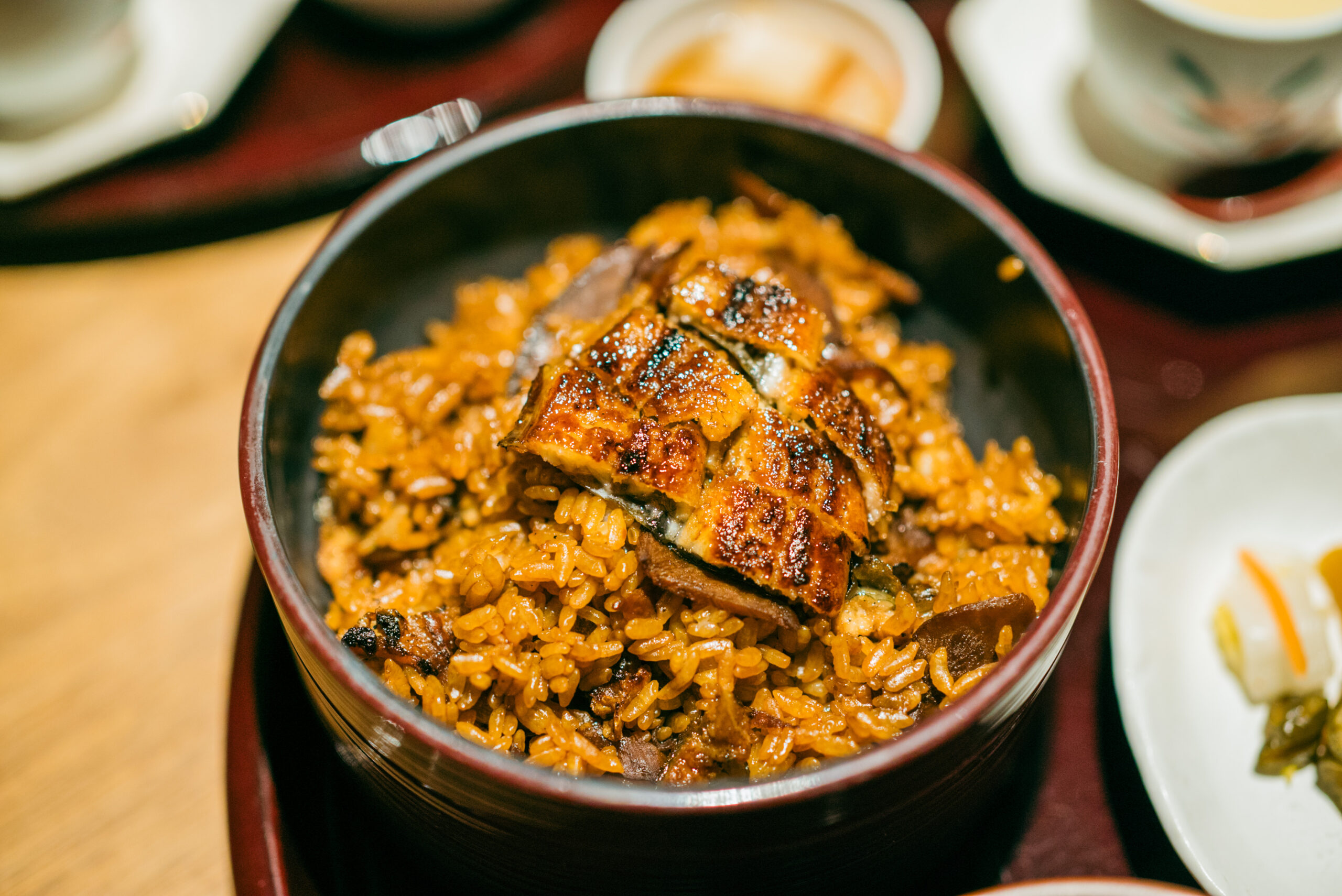
Nakanosho’s menu has both typical Japanese eel dishes like “unaju” (eel over rice) and “hitsumabushi” (sliced eel), along with local versions like “boku-meshi” (eel mixed rice). Boku-meshi was originally eaten by pond keepers working at the eel farms. It uses eels that have grown too large, with added vegetables like burdock root to eliminate the fishy odor.
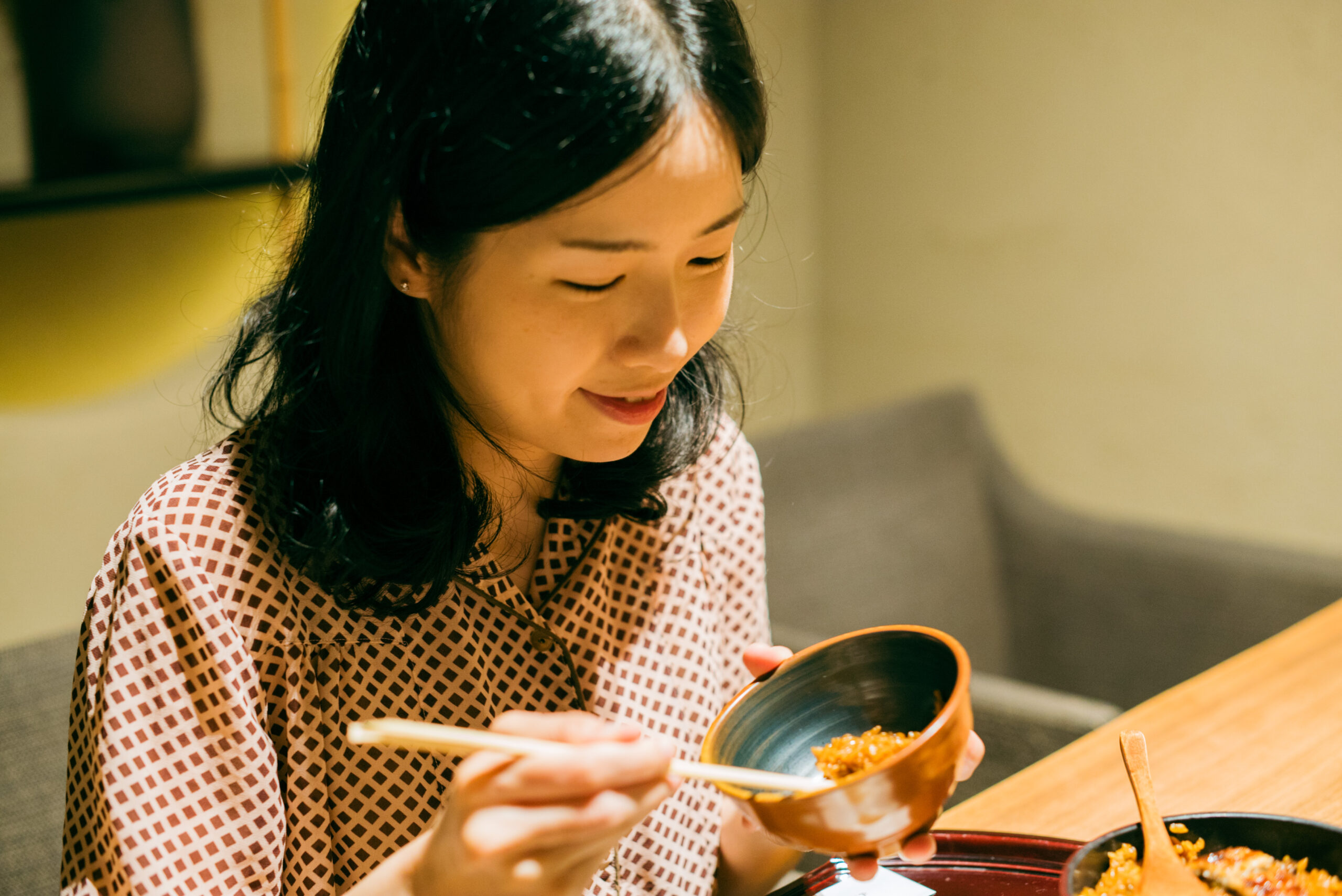
In the local dialect, the poles used in eel farming are called “bokkui,” and the larger eels are known as “boku.” This gave rise to the dish’s name, boku-meshi. It’s a true regional specialty, unavailable elsewhere in Japan, and the rich, savory eel matches well with the earthy crunch of burdock root.
Tea Tasting Challenge at Muramatsu Shoten
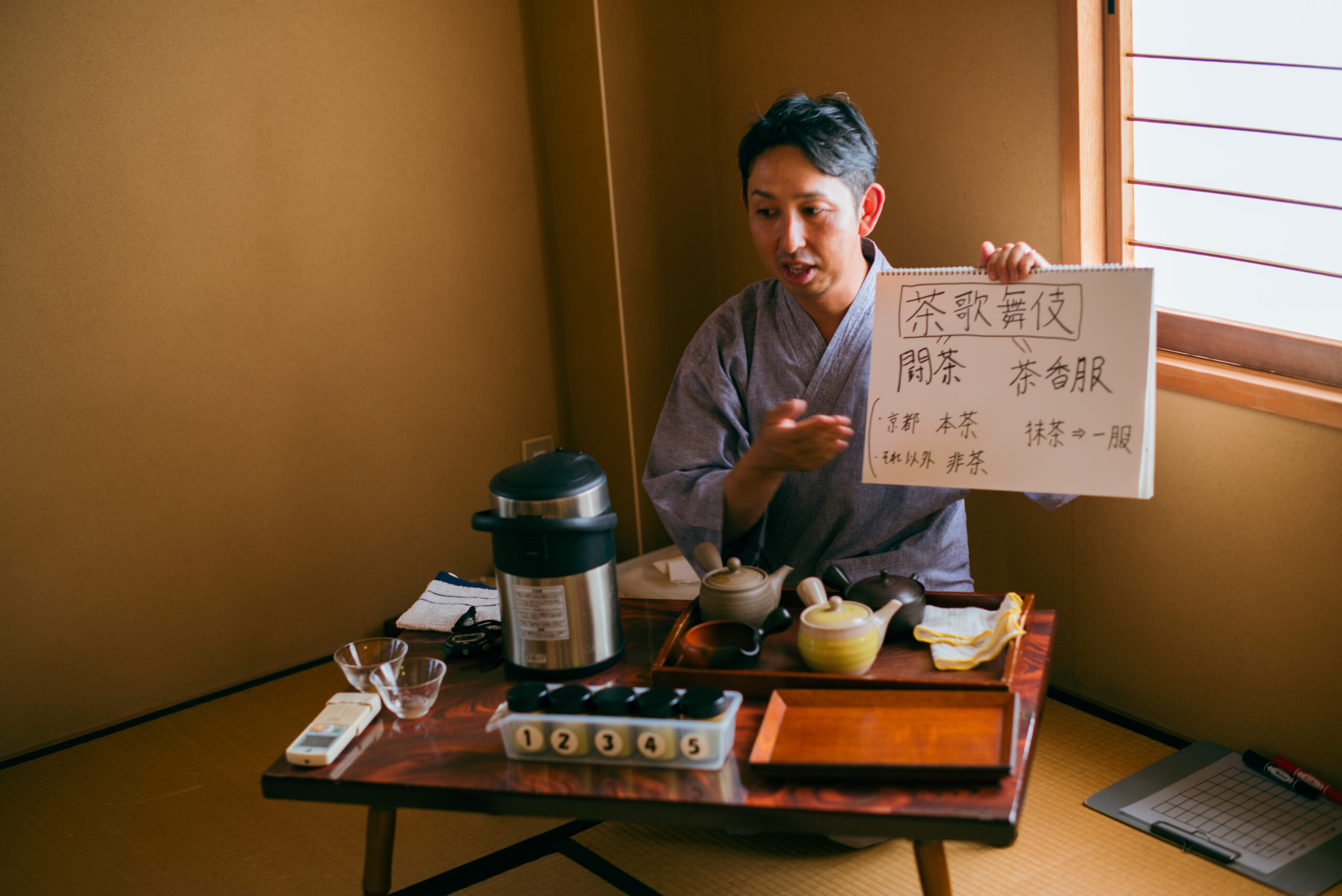
Hamamatsu is renowned for its green tea production, and visitors can engage with its tea culture through the traditional guessing game “cha kabuki.” This pastime, sometimes referred to as “tea battling,” challenges participants to identify teas and their origins by observing, tasting, and comparing the leaves. The practice traces back to the Kamakura Period (1185-1333), when it was a popular form of entertainment among samurai, aristocrats, and Buddhist monks.
The sophisticated nature of the game led to its association with “kabuki,” which connotes novelty and unconventionality. Players will smell five types of tea leaves, labeled “flower,” “bird,” “wind,” “moon,” and “guest,” and then record the characteristics of each in order. The winner is the one who guesses the most correctly.
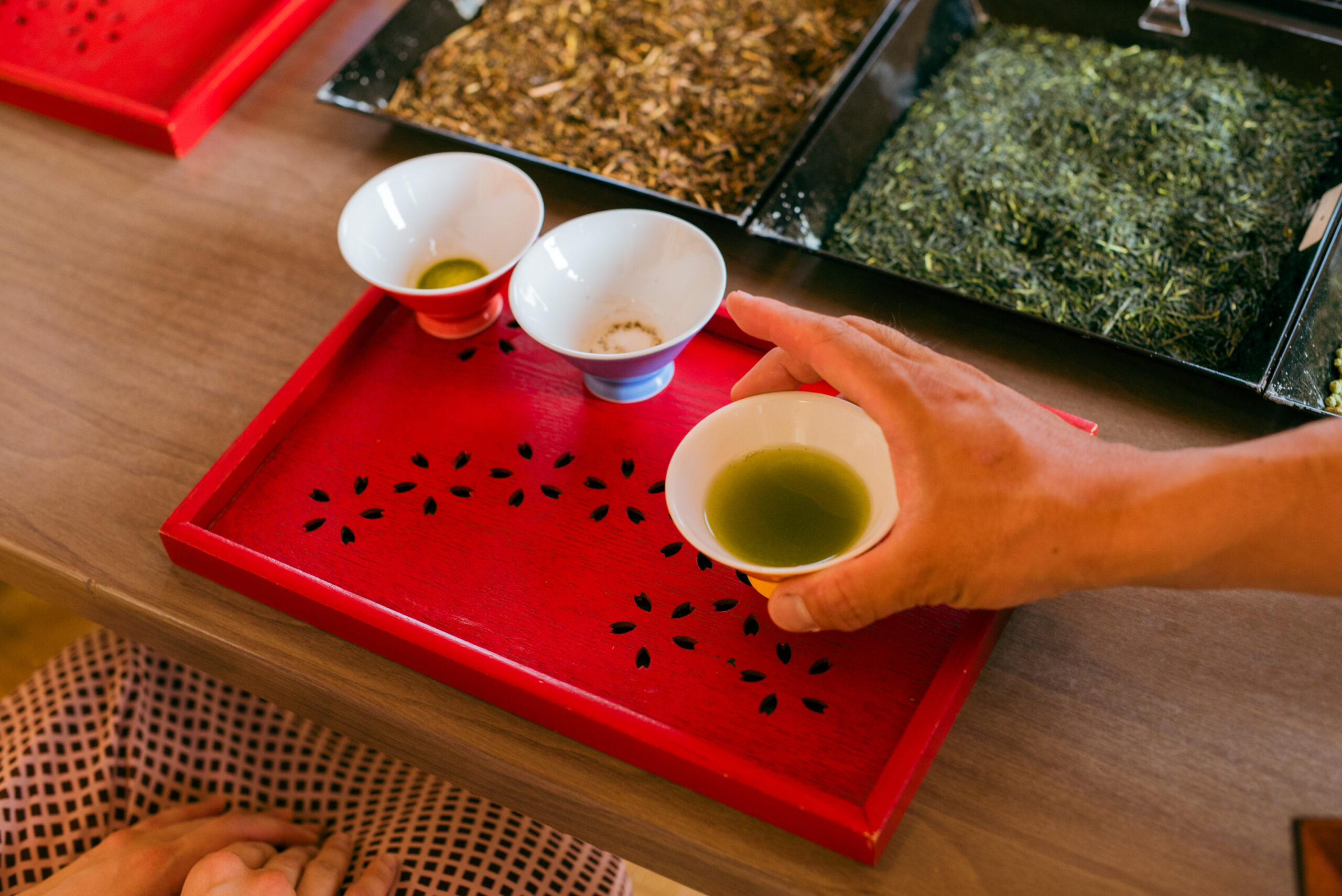
This time, we were given black tea, gyokuro (top-quality green tea), genmaicha (unmilled rice tea) with matcha, high-grade sencha, and hojicha (roasted green tea). After the tea master brewed each cup, we tasted them and guessed the type based on color and flavor. It was a fun challenge that engaged all five senses, and deepened our appreciation of the subtle differences between tea.
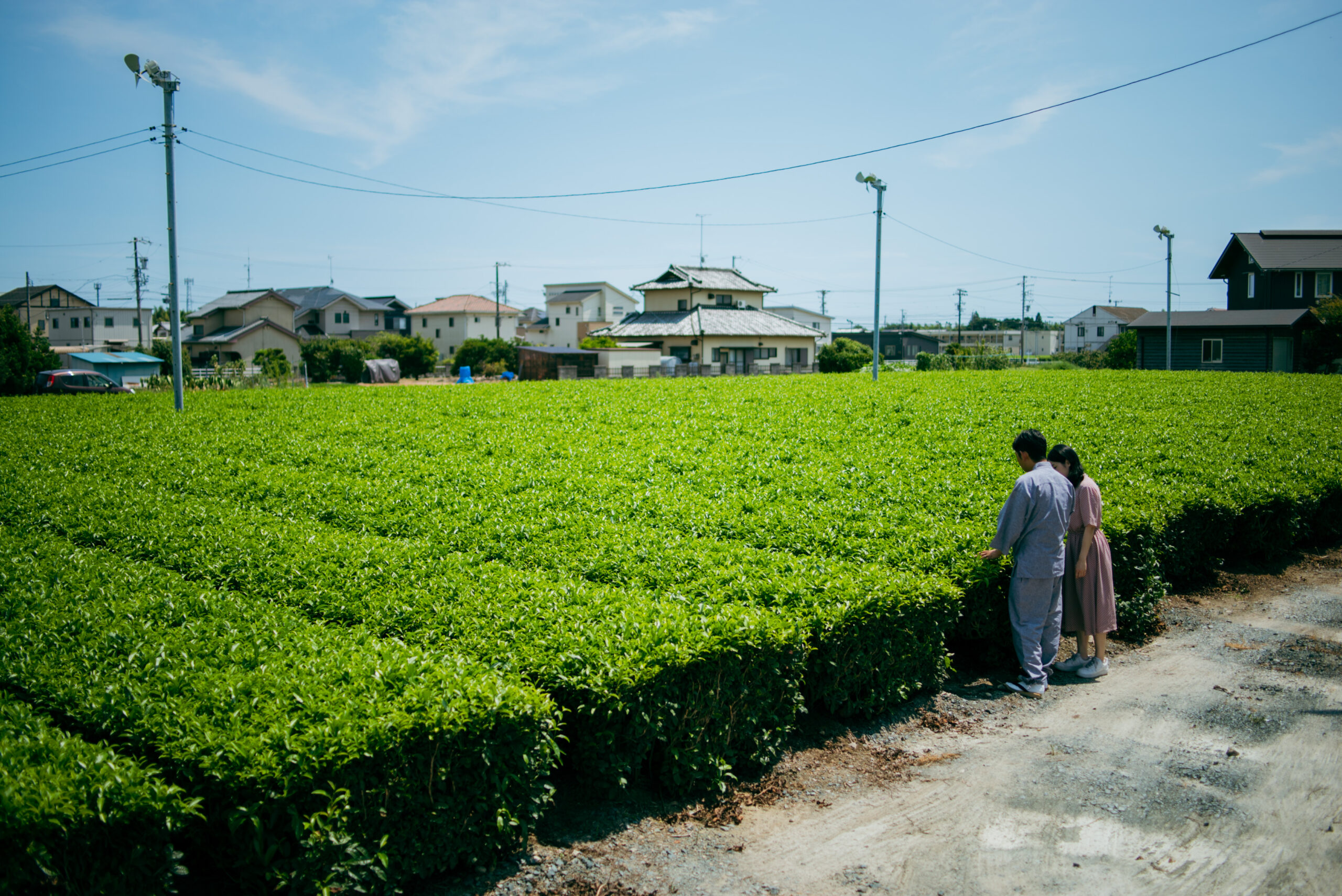
Founded in 1939, Muramatsu Shoten is a Japanese tea store now managed by the third-generation owner. It has several tea fields across Shizuoka Prefecture, and presents picturesque views of tea fields in front. Here, we learnt about tea cultivation and production, and partook in a game of cha kabuki.
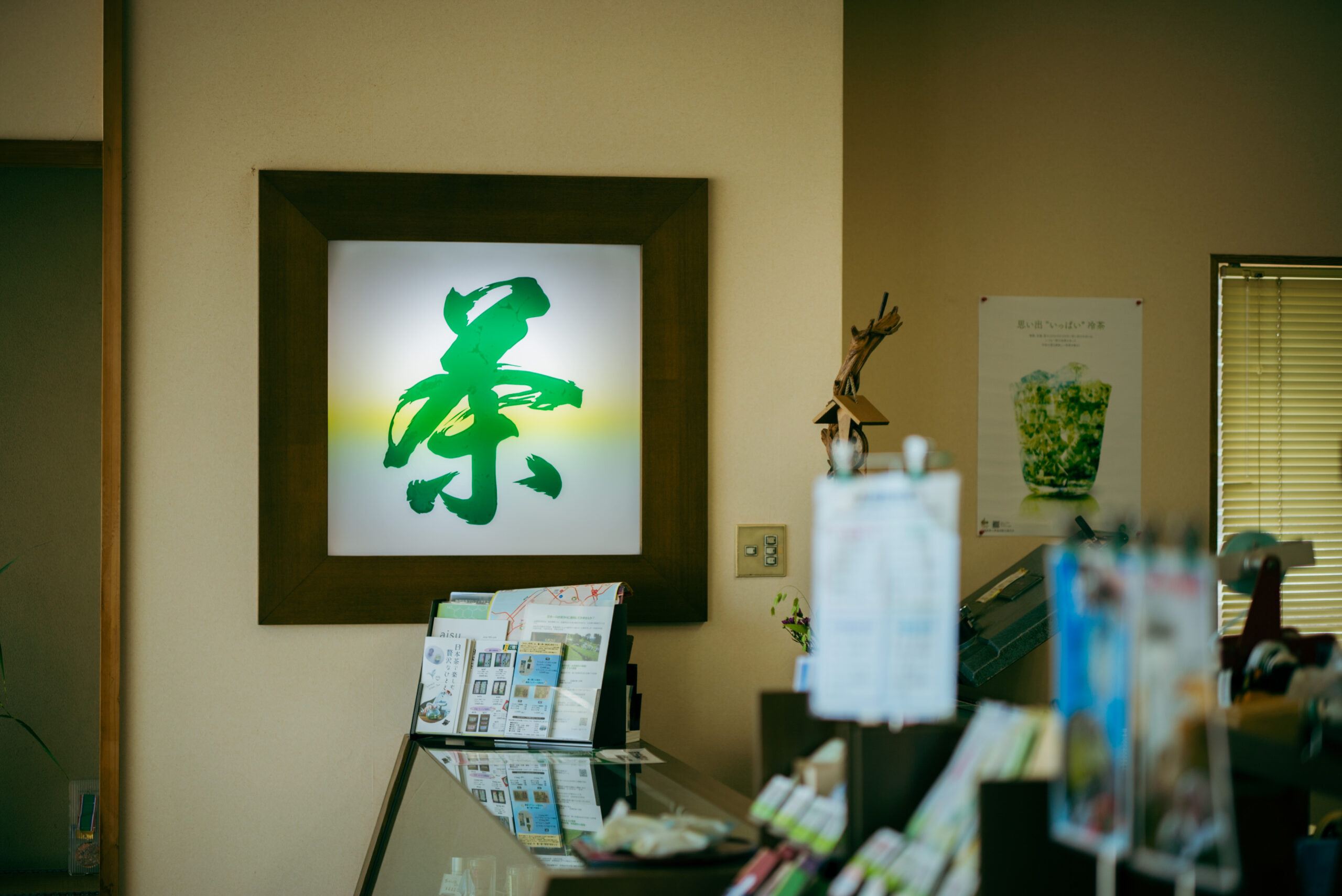
For a souvenir, we suggest Muramatsu Shoten’s premium deep-steamed sencha teas, such as the renowned Yabukita Suikou. There’s also a variety of tea-flavored gelato, perfect for hot summer days!
Dinner: Hamamatsu Gyoza at Tanto
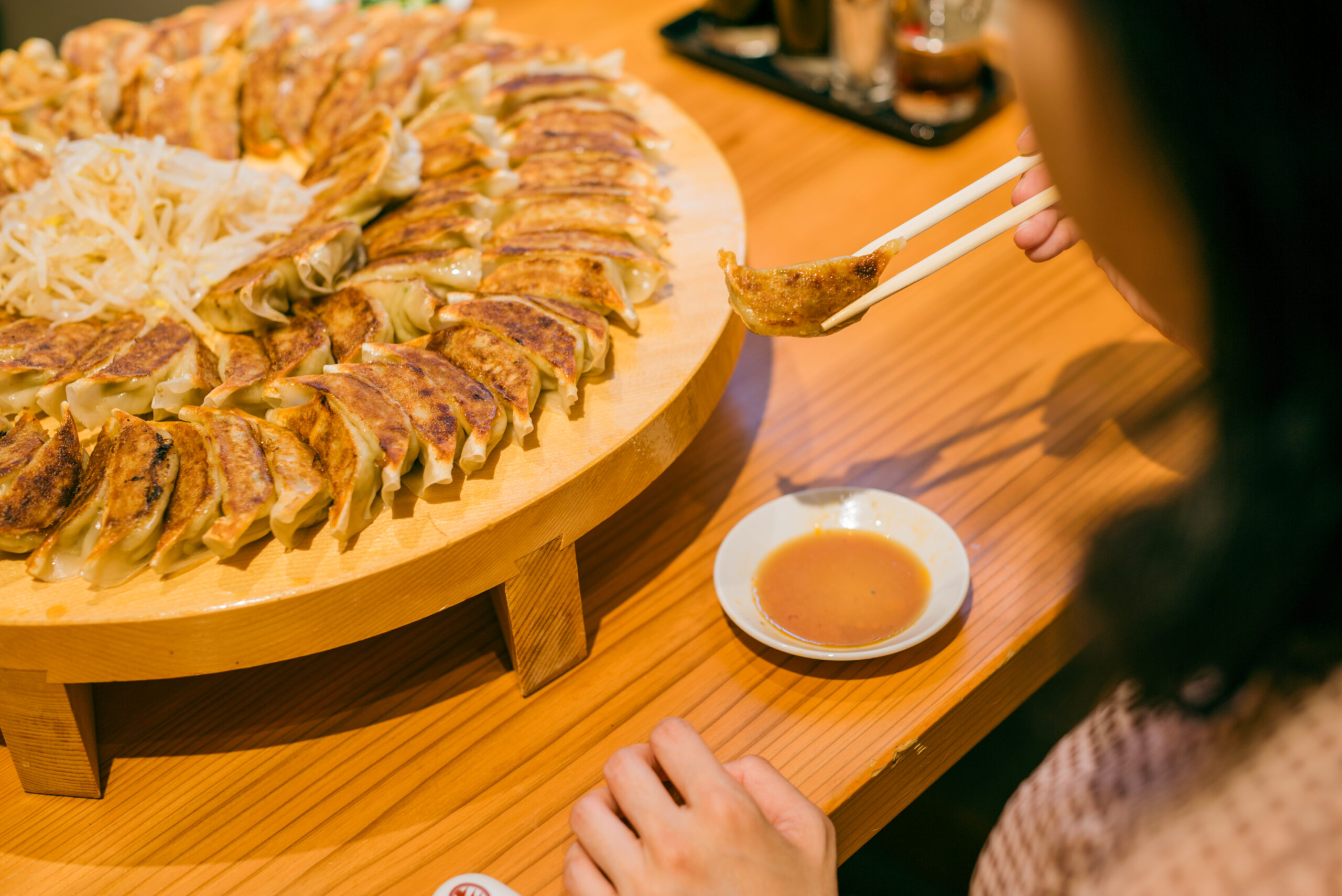
Hamamatsu gyoza are one of Japan’s most popular types of dumplings. They have a unique flavor born from the ample use of cabbage combined with pork, ensuring a light, refreshing taste. They are typically arranged in a circle, with a mound of blanched bean sprouts in the center. Gyoza began gaining popularity in Hamamatsu around the 1950s, and as local restaurants competed, the quality improved, gradually earning nationwide fame.
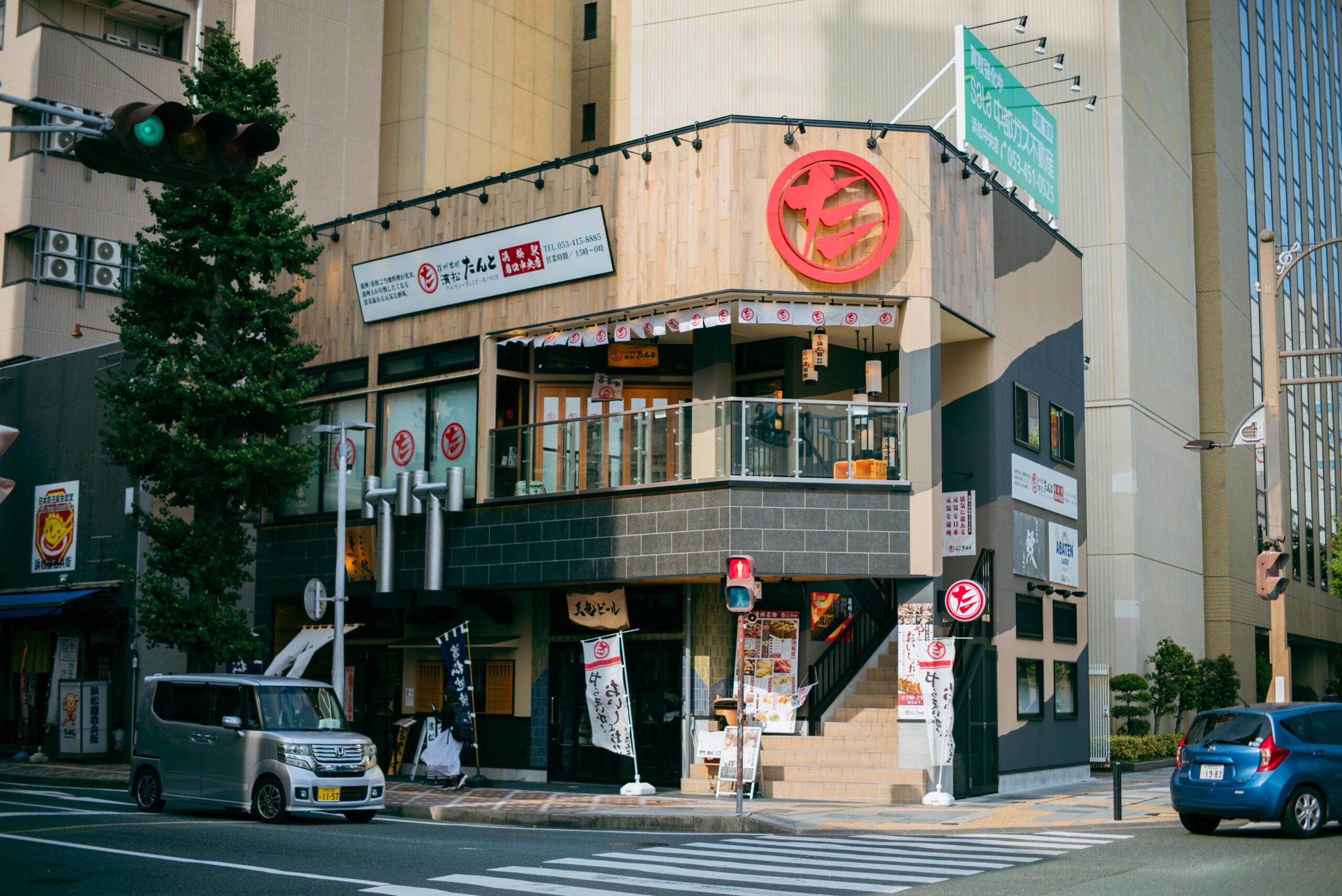
Tanto is a local izakaya that captures the vibrant character of Hamamatsu. It specializes in Hamamatsu fried gyoza, handmade daily by skilled cooks with high-quality Enshu Yumeno Yume Pork, a local brand known for its superb fat, along with fresh cabbage from nearby farms. The crisp exterior gives way to a sweet, crunchy filling, delivering an explosion of taste in each morsel.
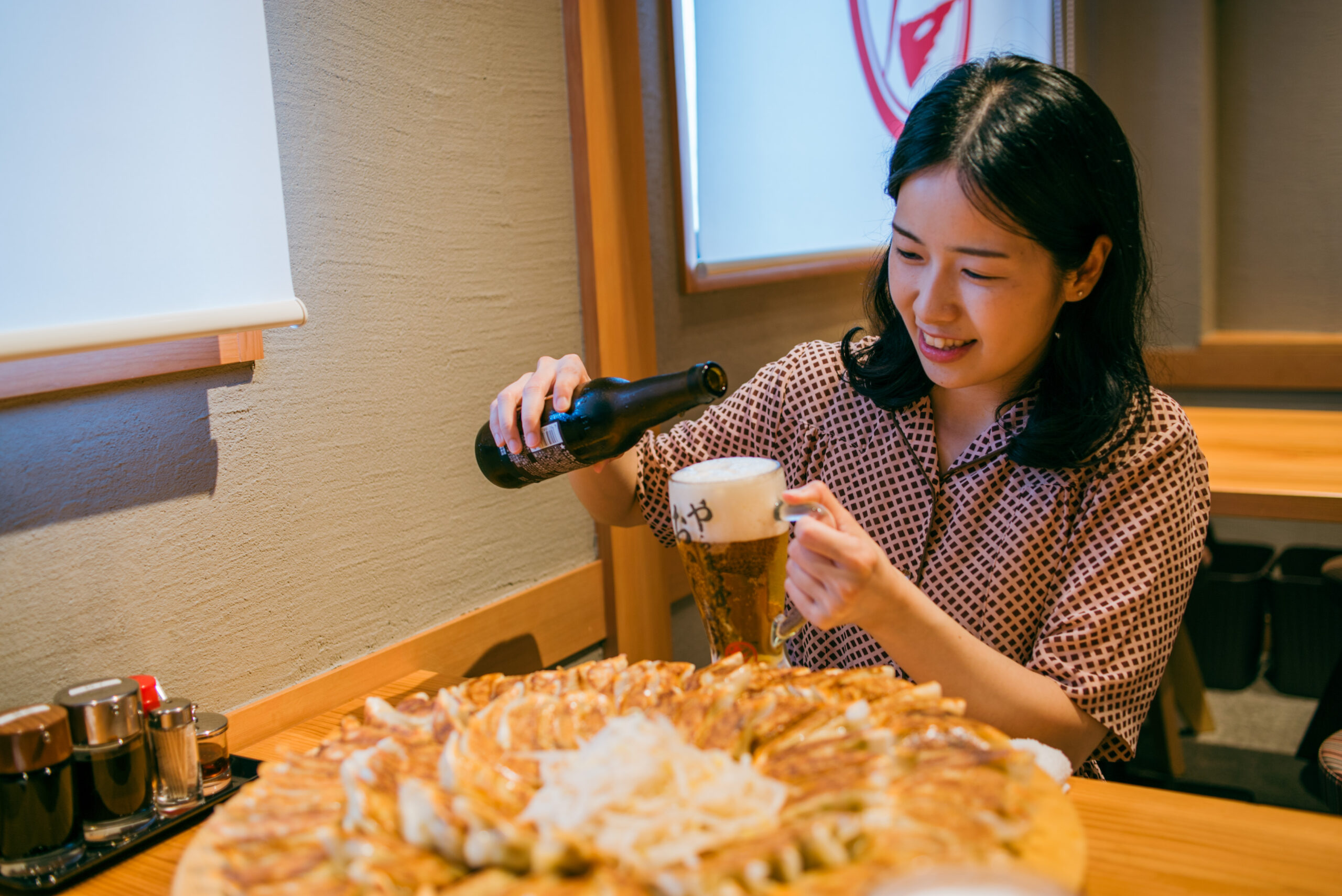
The restaurant’s showstopper is a stunning platter of 100 gyoza, artfully arranged on a wooden board. It was just as fun to photograph as it was to eat, and it paired perfectly with a frosty local brew.

Tanto also serves other goodies like Hamamatsu “horumon” (offal) and “goro-yaki” (fried pork), made of chunky Enshu Yumeno Yume Pork grilled on a thick iron plate to seal in the umami. The piping hot meat delivered a punch of savory richness complemented by the subtle sweetness of the marbled fat.
Accommodation: Hotel Concorde Hamamatsu
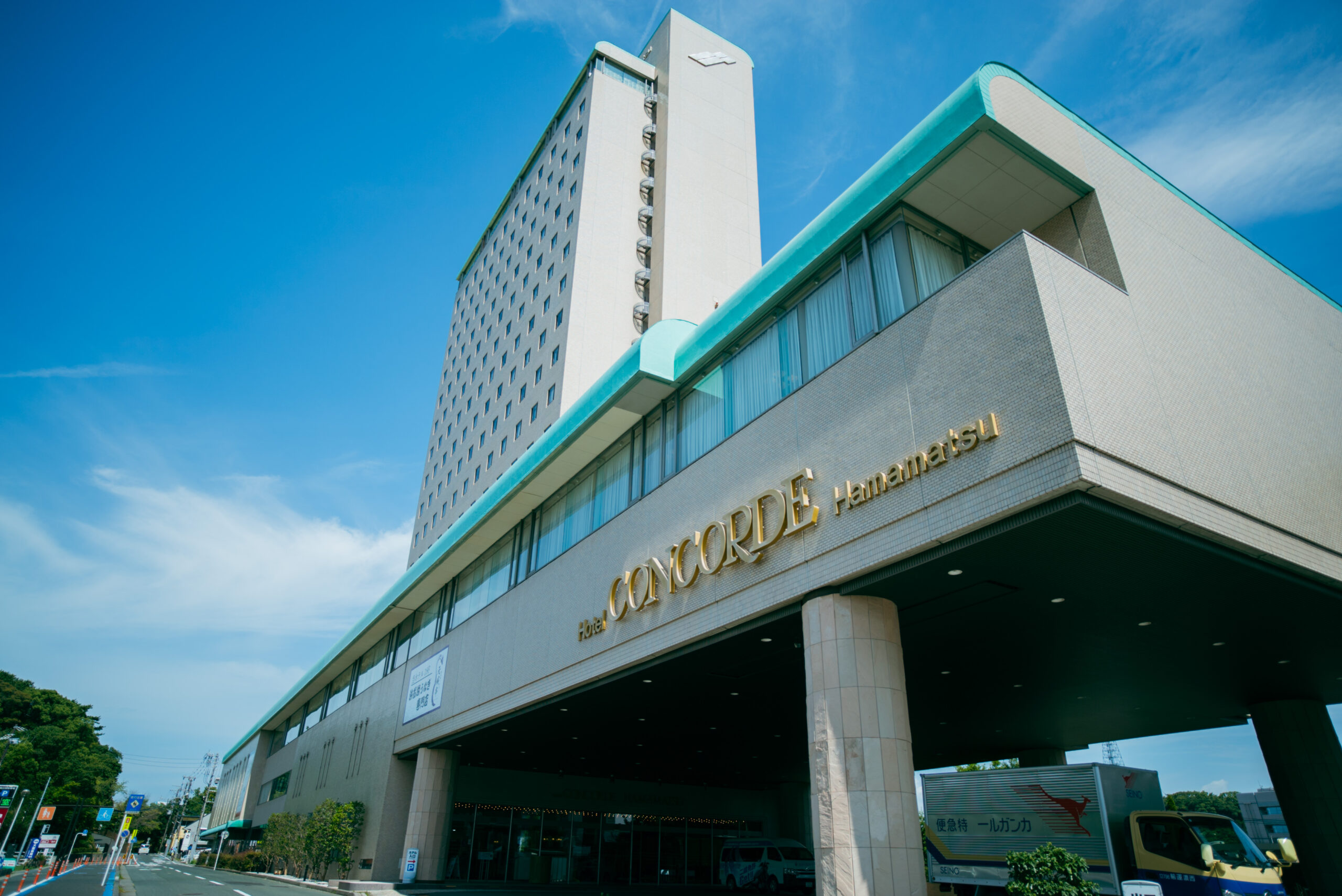
For our accommodation in Hamamatsu, we stayed at the Hotel Concorde Hamamatsu. It’s conveniently located near Hamamatsu’s main attractions, like Hamamatsu Castle Park and its bustling commercial district, and is just a 5-minute drive or 15-minute walk from Hamamatsu Station.
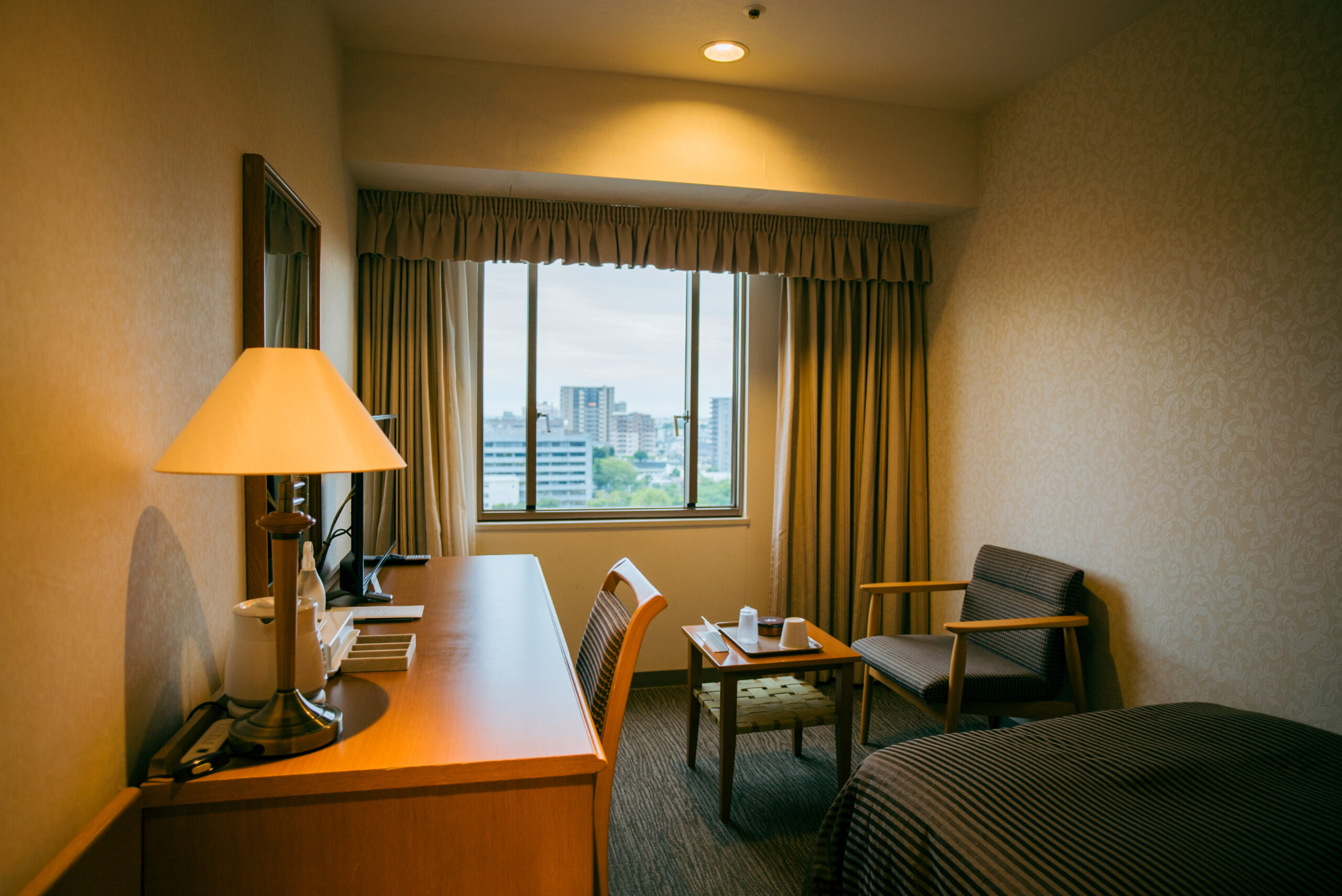
Hotel Concorde Hamamatsu has a range of guestrooms, from single and twins to even triple rooms. Each is well-appointed with amenities to ensure a comfortable stay.
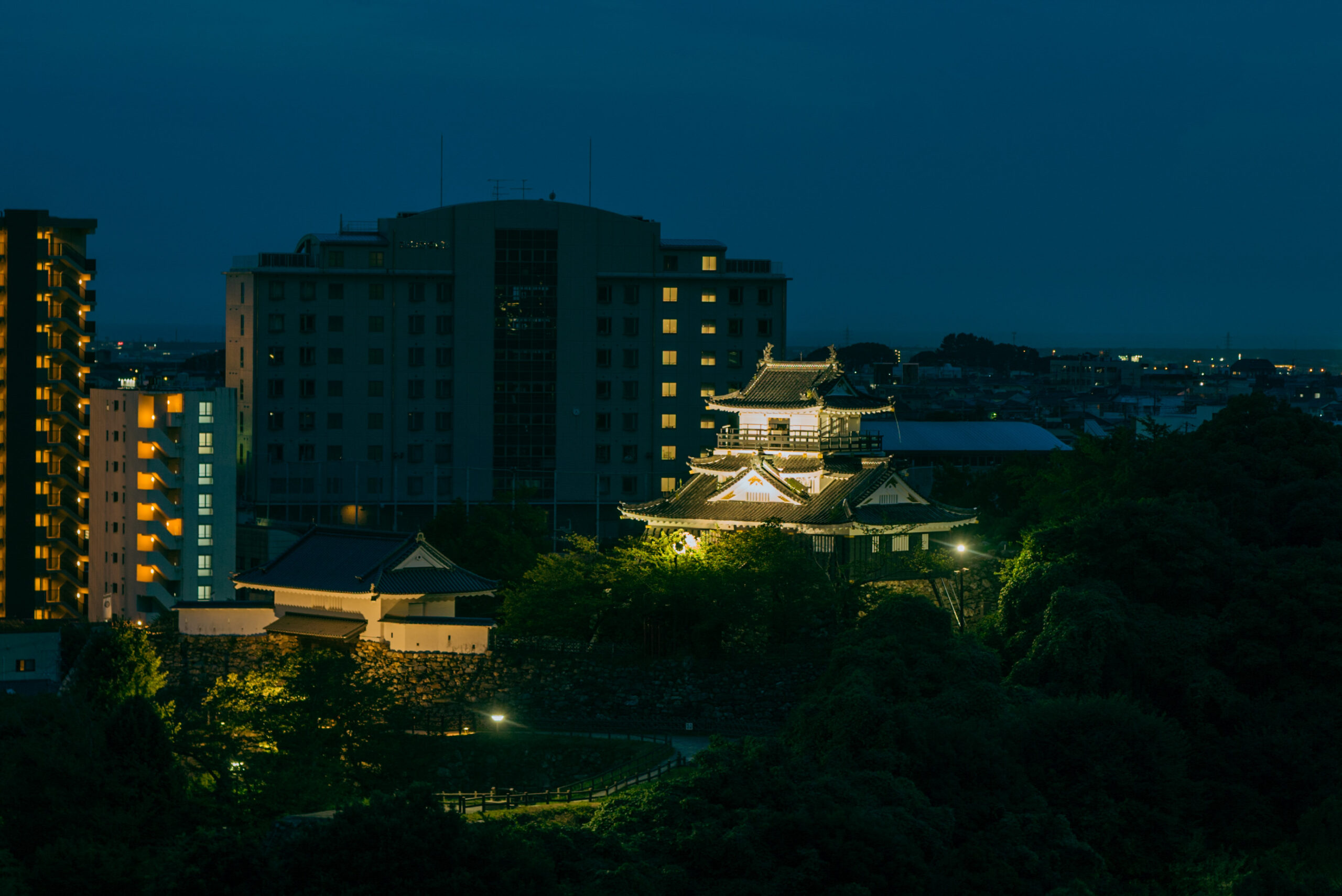
We recommend booking a room overlooking Hamamatsu Castle Park. During the day, you can soak up the vivid greenery, then be treated to the spectacular castle light-up at night.
Breakfast: Beginning Our Day With a Lavish Buffet
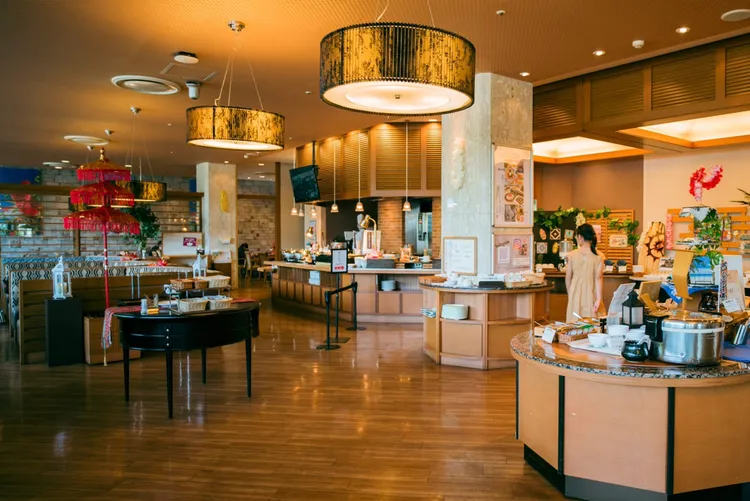
Hotel Concorde Hamamatsu takes pride in its extravagant breakfast buffet, showcasing seasonal ingredients from the region. Held in the first-floor restaurant, Champs Elysees, it also has an open kitchen letting us watch the chefs as they prepared an array of sophisticated Japanese and Western dishes.
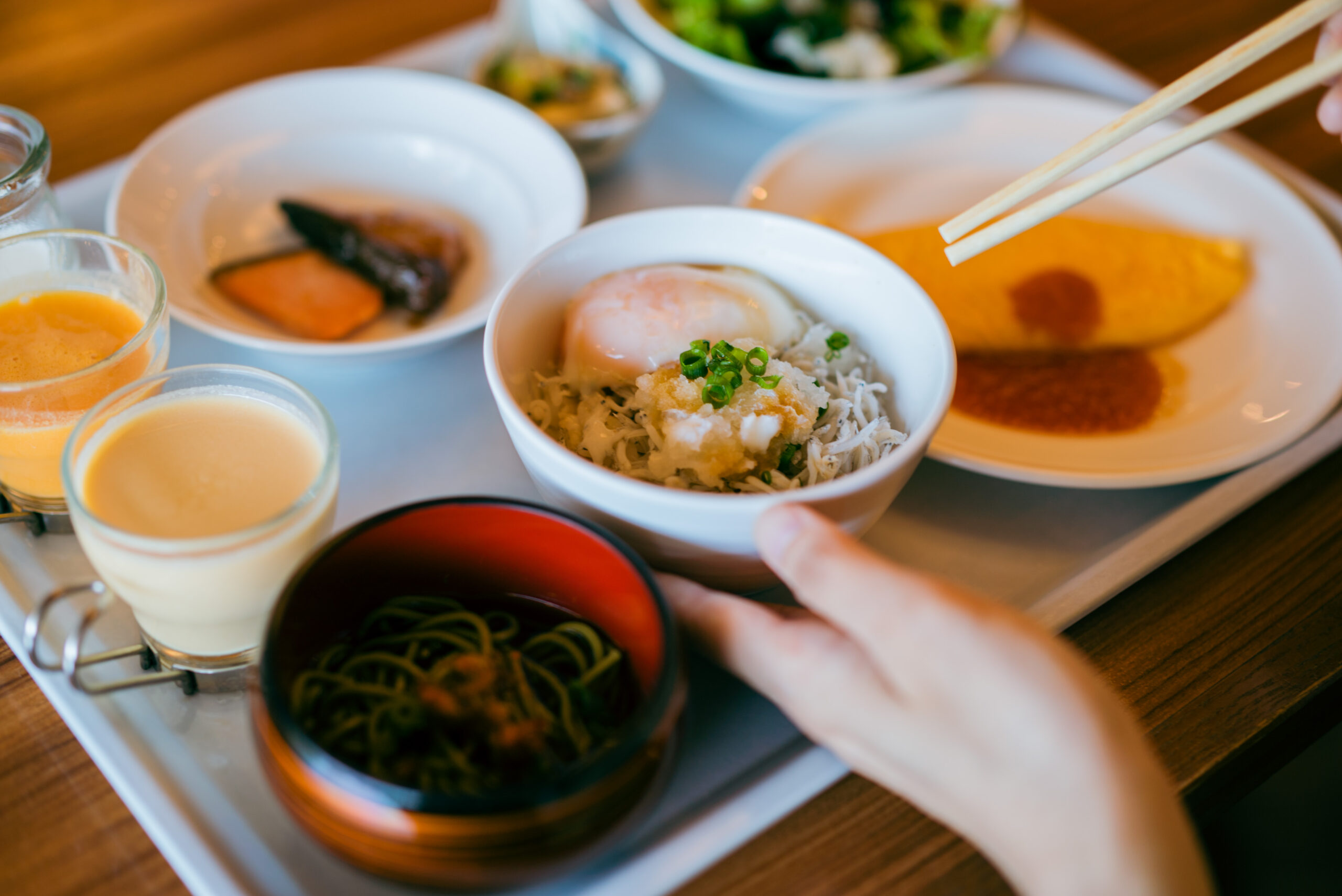
We filled up on a mix of Shizuoka and Hamamatsu specialties, like rice topped with whitebait from the nearby Enshu Sea, an omelet cooked in front of us from a handmade broth of local “aonori” (dried seaweed), along with eel mixed rice, Shizuoka green tea soba, a smoothie of Shizuoka’s Mikkabi mandarins, Inasa milk, and more.
Day 2: Exploring Lake Hamana Through Food and Cycling
On our second day, we ventured out to Lake Hamana, one of Hamamatsu’s main attractions. Here we tried eel catching, lakeside cycling, and gorged on plenty more fresh local ingredients.
Tea Ceremony at Shointei Teahouse
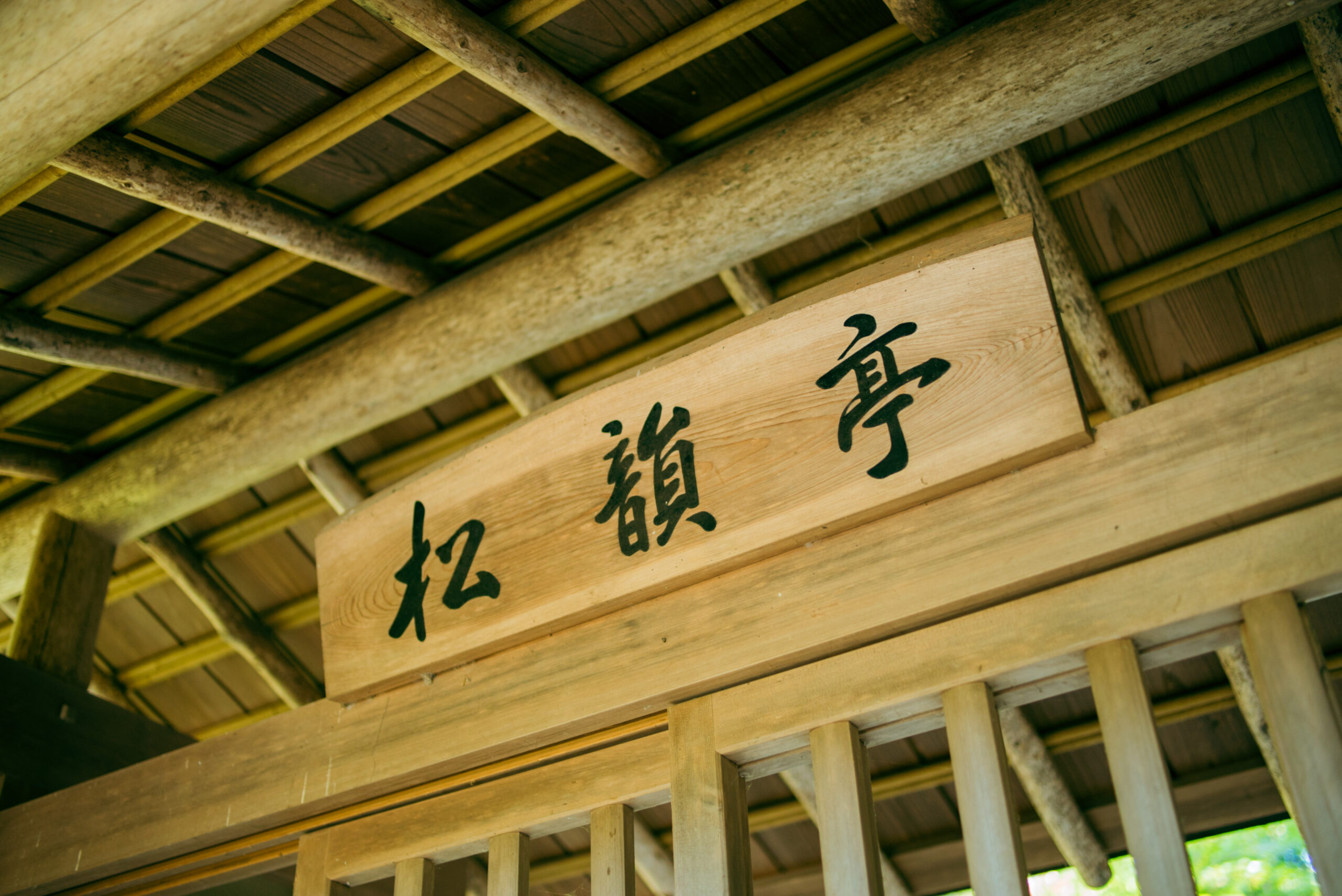
Shointei is a gorgeous traditional teahouse tucked away in a verdant corner of Hamamatsu Castle Park, which we walked to after finishing breakfast.
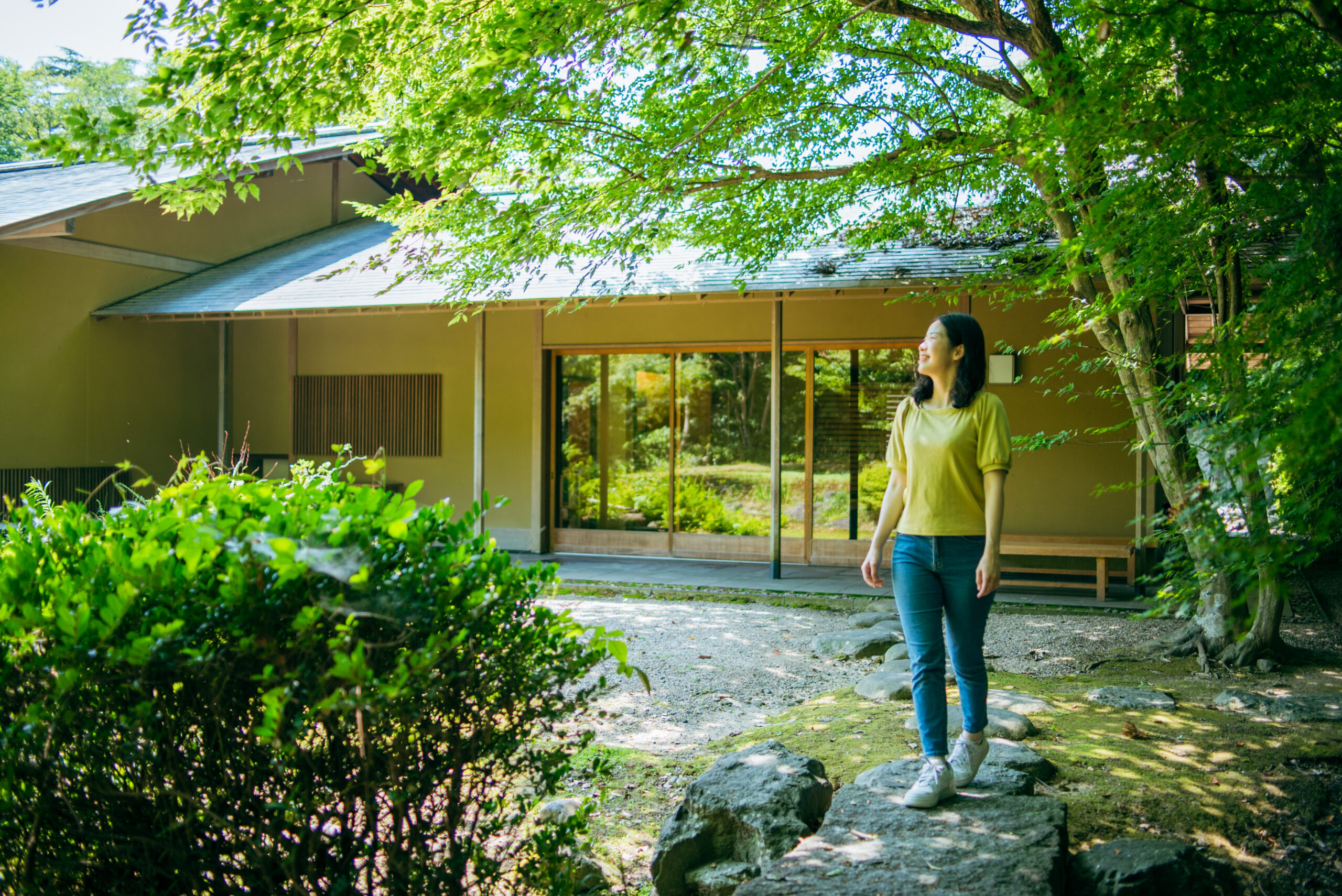
The teahouse itself is built from woods like cedar and chestnut, and enclosed by a traditional Japanese garden. The landscape features a small waterfall, a stream winding between rocks, and a pathway adorned with lanterns and stepping stones. This tranquil setting was the perfect space to wake ourselves up in the gentle morning sunlight.
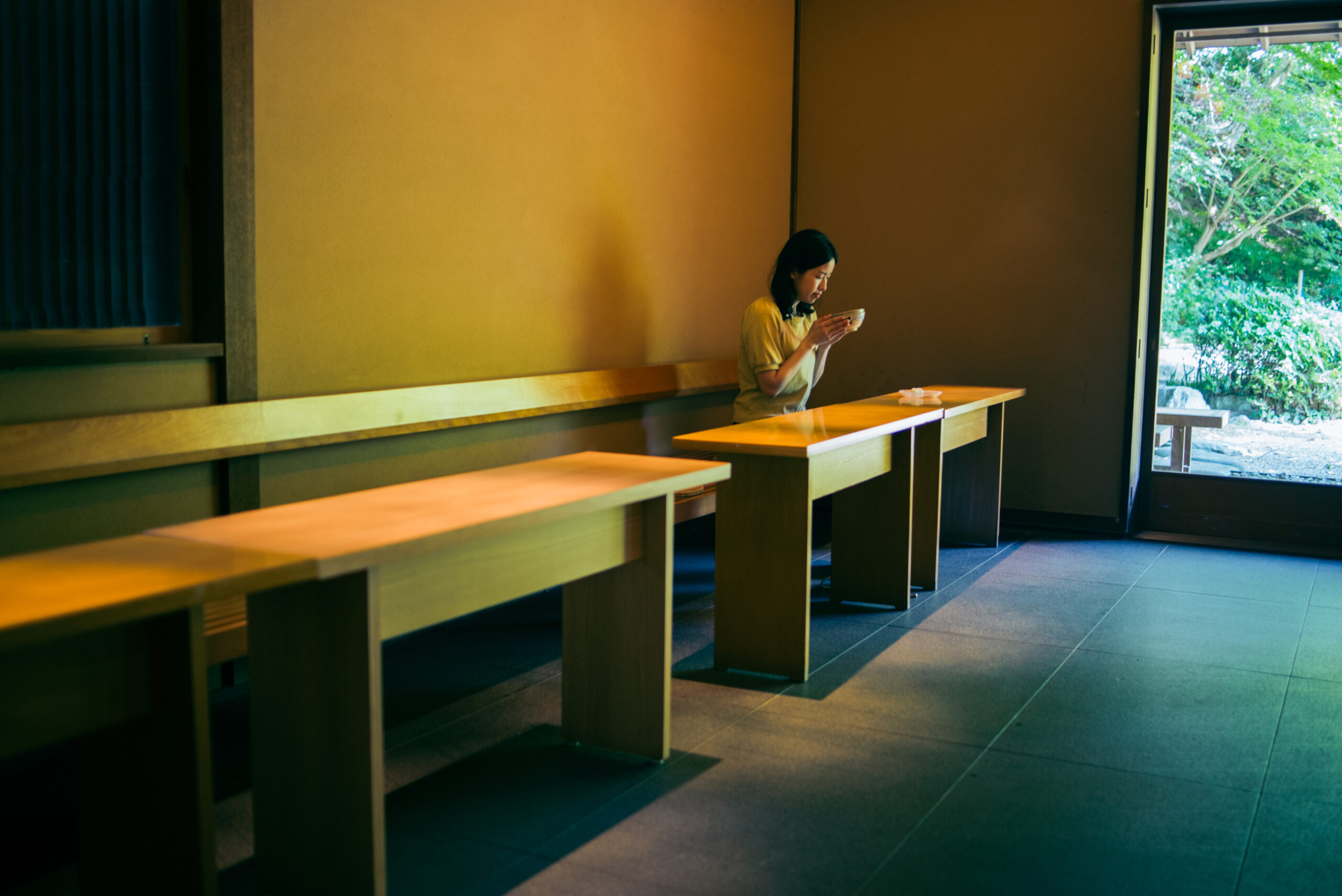
The teahouse uses “ryurei” style chair seating, forgoing the formal “seiza” kneeling position to make it accessible to casual visitors like us. Here, we indulged in matcha and sencha green tea complemented by seasonal “wagashi” traditional Japanese sweets. Whether you’re traveling alone or with companions, Shointei is an excellent space for a breather while continuing your foray into traditional culture.
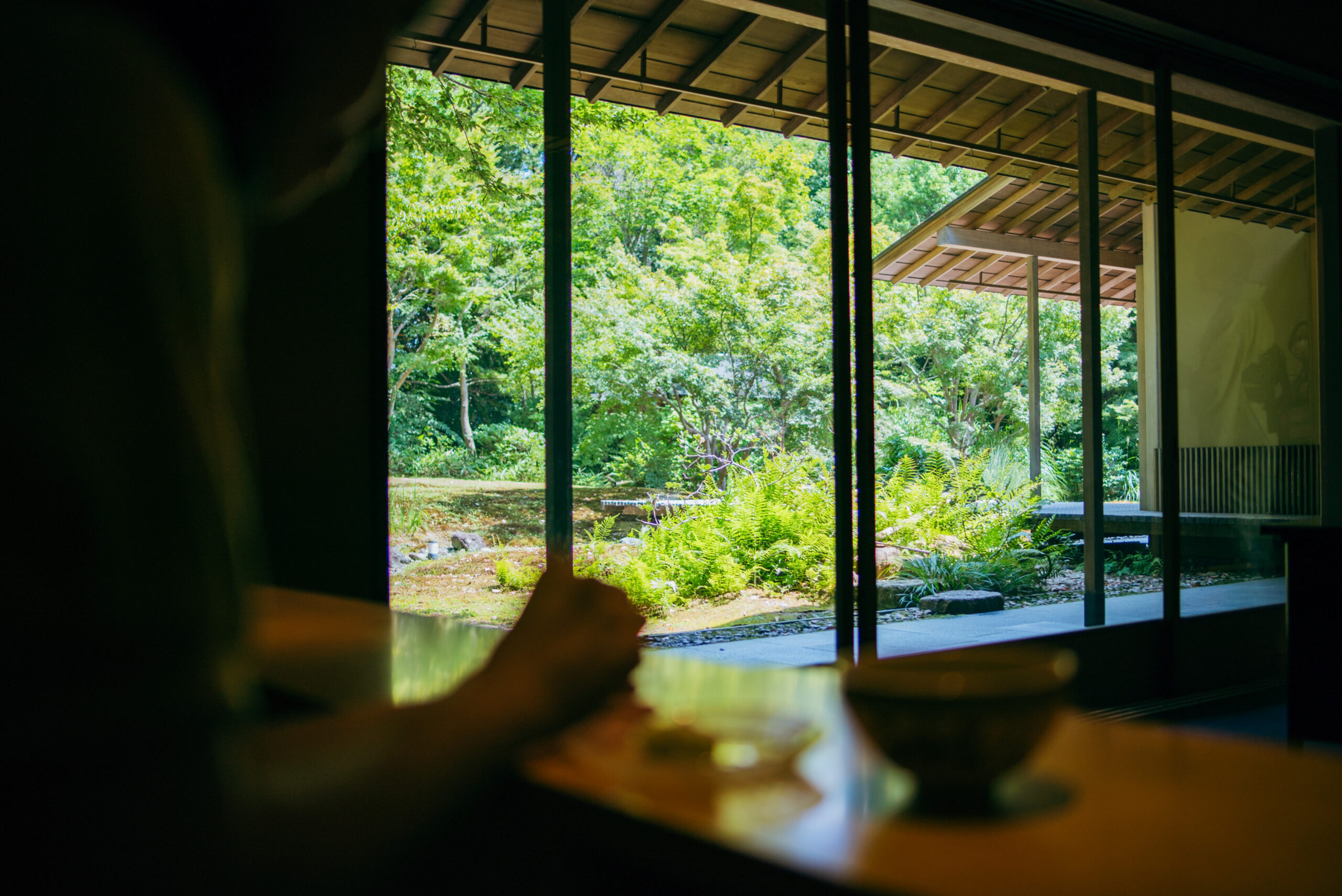
Shointei also hosts a variety of events, like cultural lectures and talks, making it just as suitable for those seeking to get deep into the philosophy behind the tea ceremony.
The Secrets of Unagi Pie
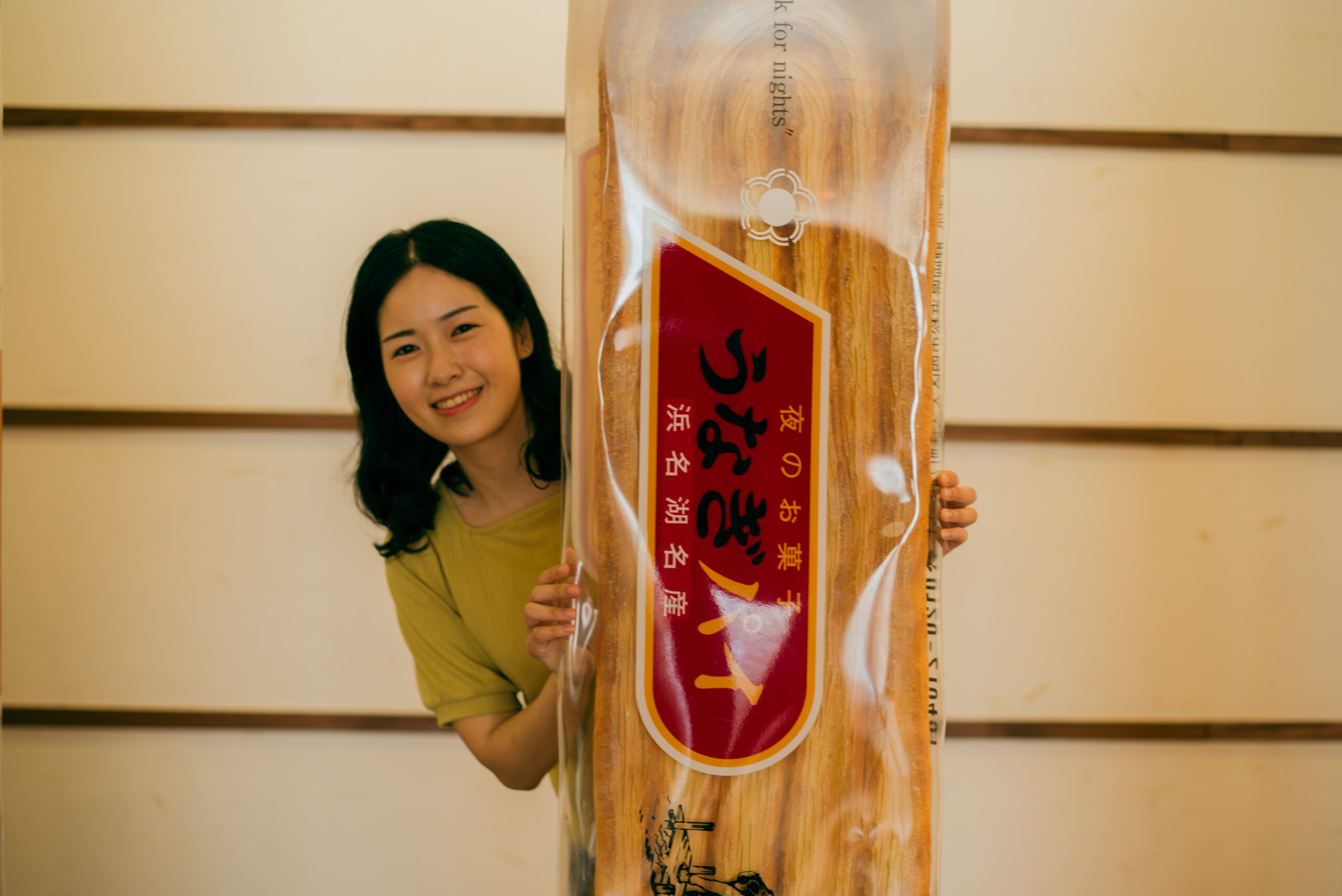
For Japanese people, the quintessential Hamamatsu souvenir is “unagi pie,” from confectionery company Shunkado. Rather than a pie, this is a sweet biscuit that has been made since 1961 using simple but high-quality ingredients like butter, granulated sugar, and flour, accentuated by a touch of eel extract. The biscuit dough is painstakingly folded into thousands of layers before being baked and coated with a special sauce.
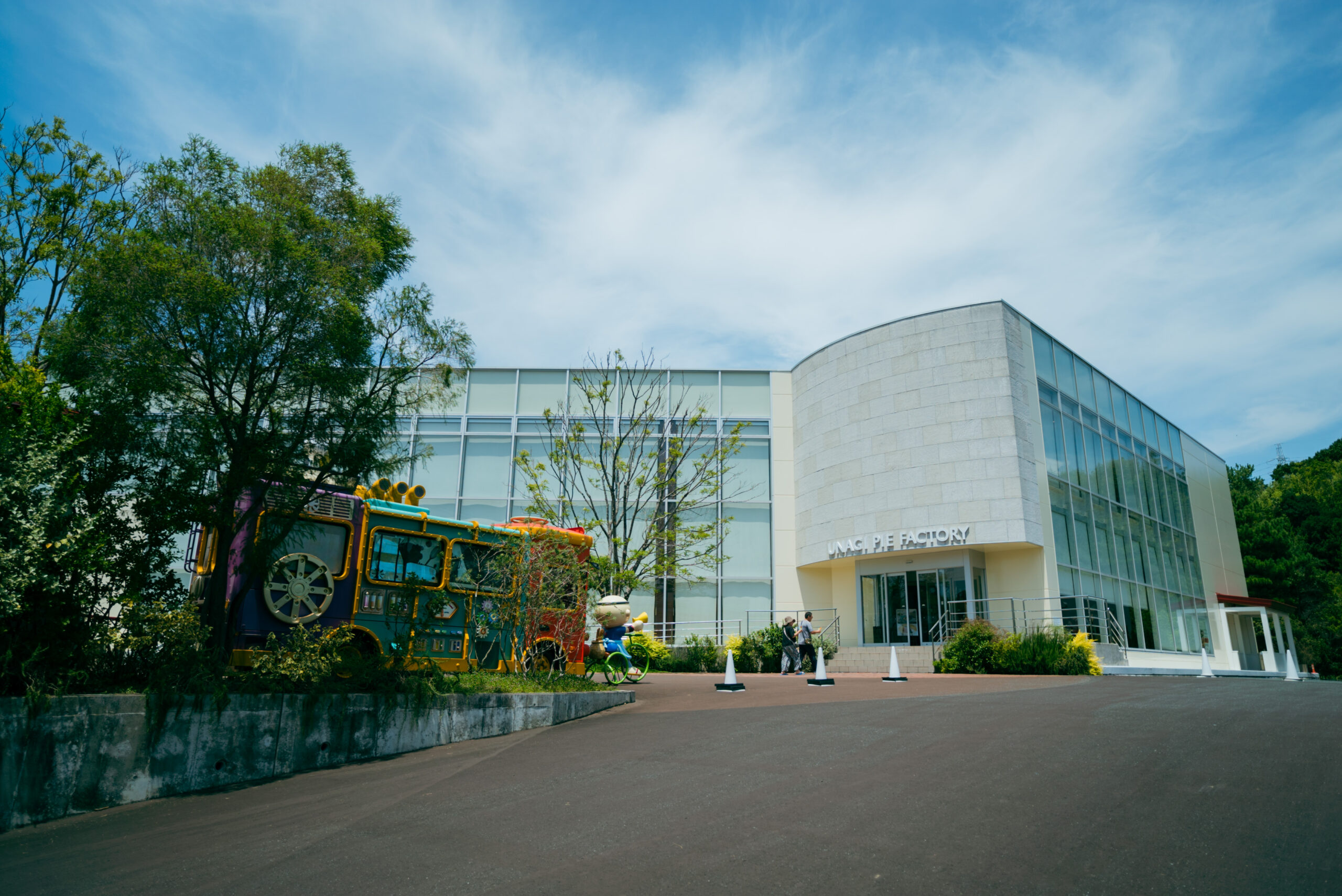
The Unagi Pie Factory is a popular destination for Japanese tourists, particularly families, keen to see how this beloved snack is made.
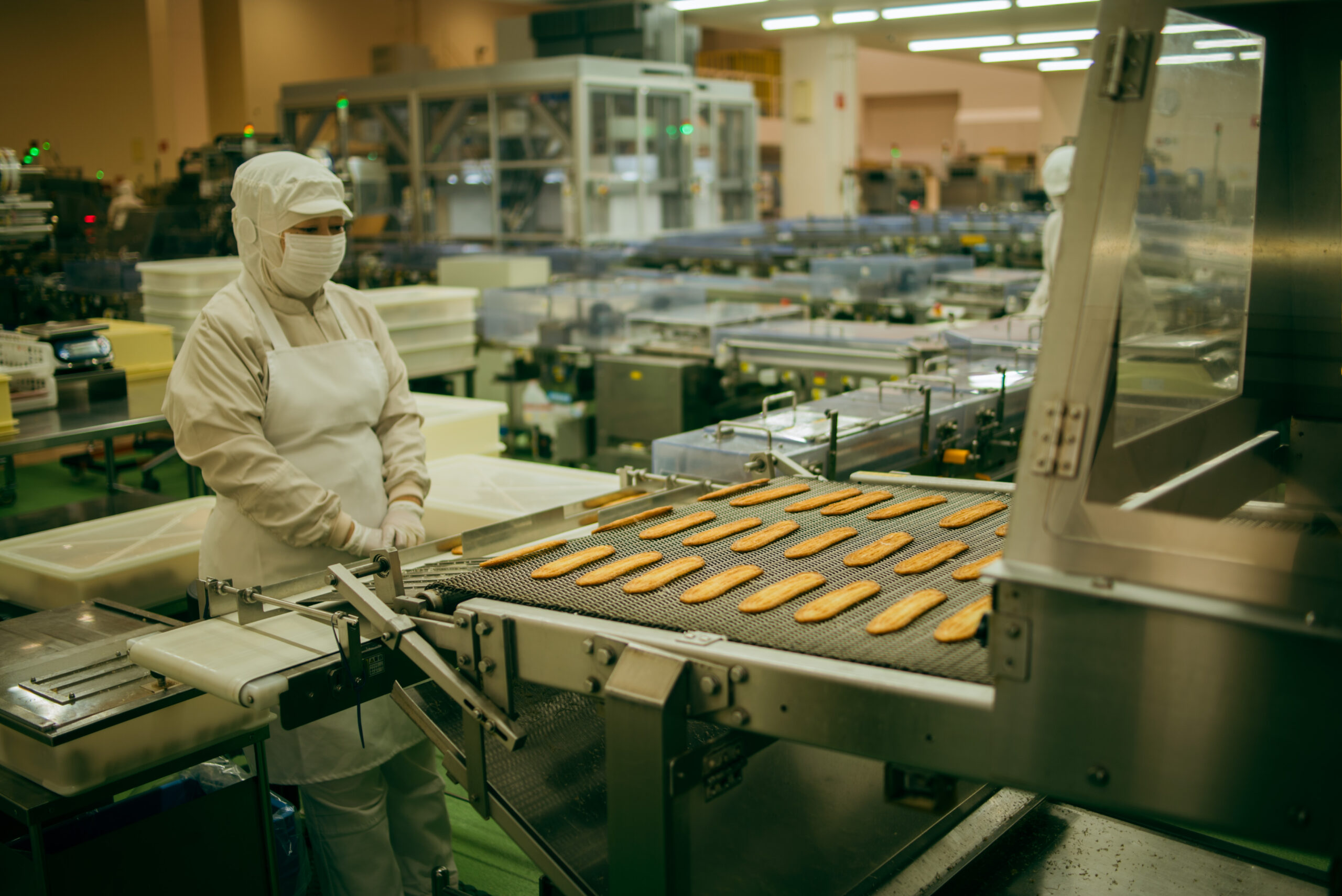
The factory offers a free, no-reservation tour granting a close-up view of the unagi pie production process through windows, highlighting each meticulous step.
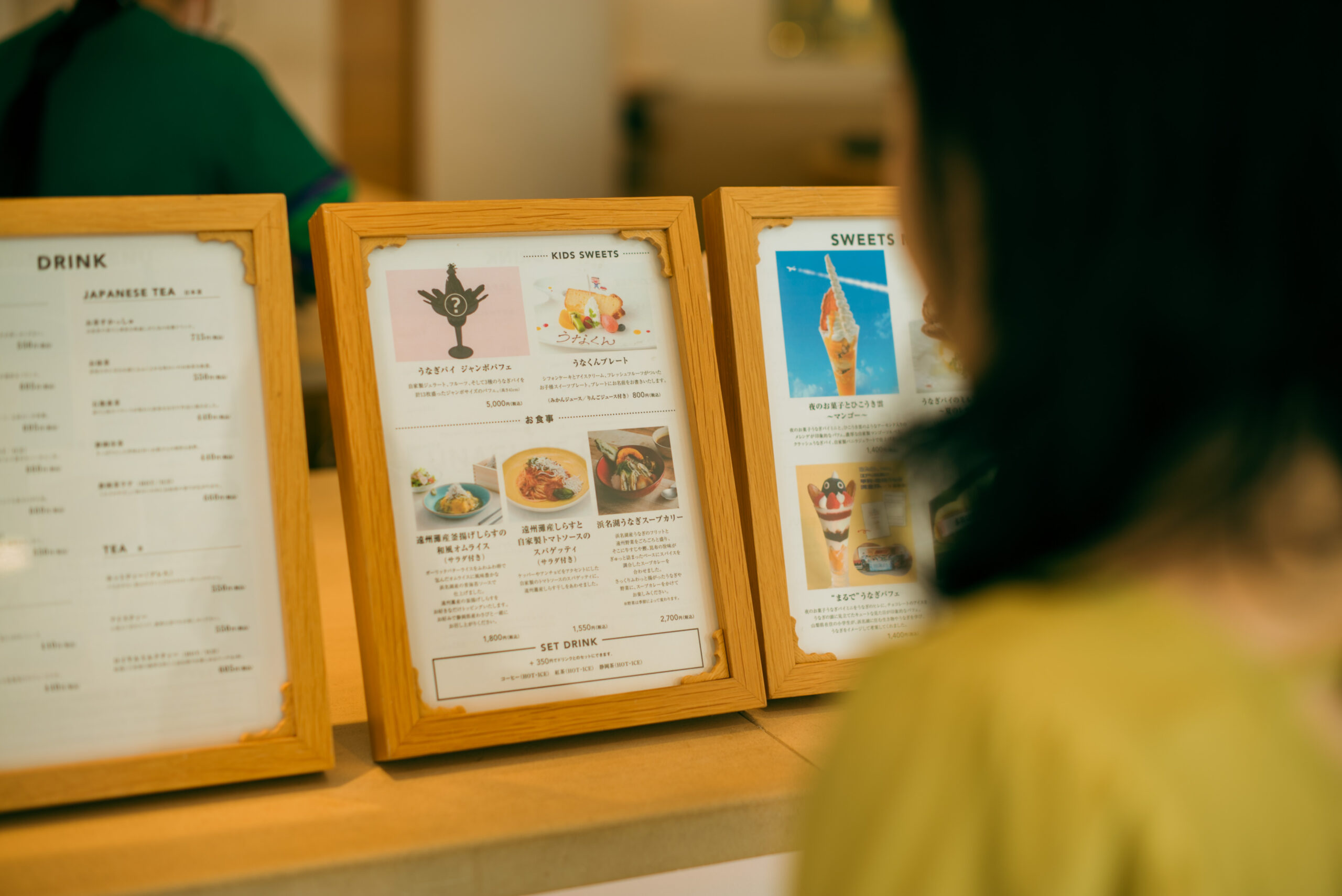
On the second floor is a charming cafe serving exclusive sweets available only at the factory. There is also a shop on the first floor, stocking an impressive array of beautifully packaged sweets, perfect as souvenirs for family and friends back home.
Lunch: Eel Catching and Kabayaki at Imakiri Taiken no Sato Kaikokan
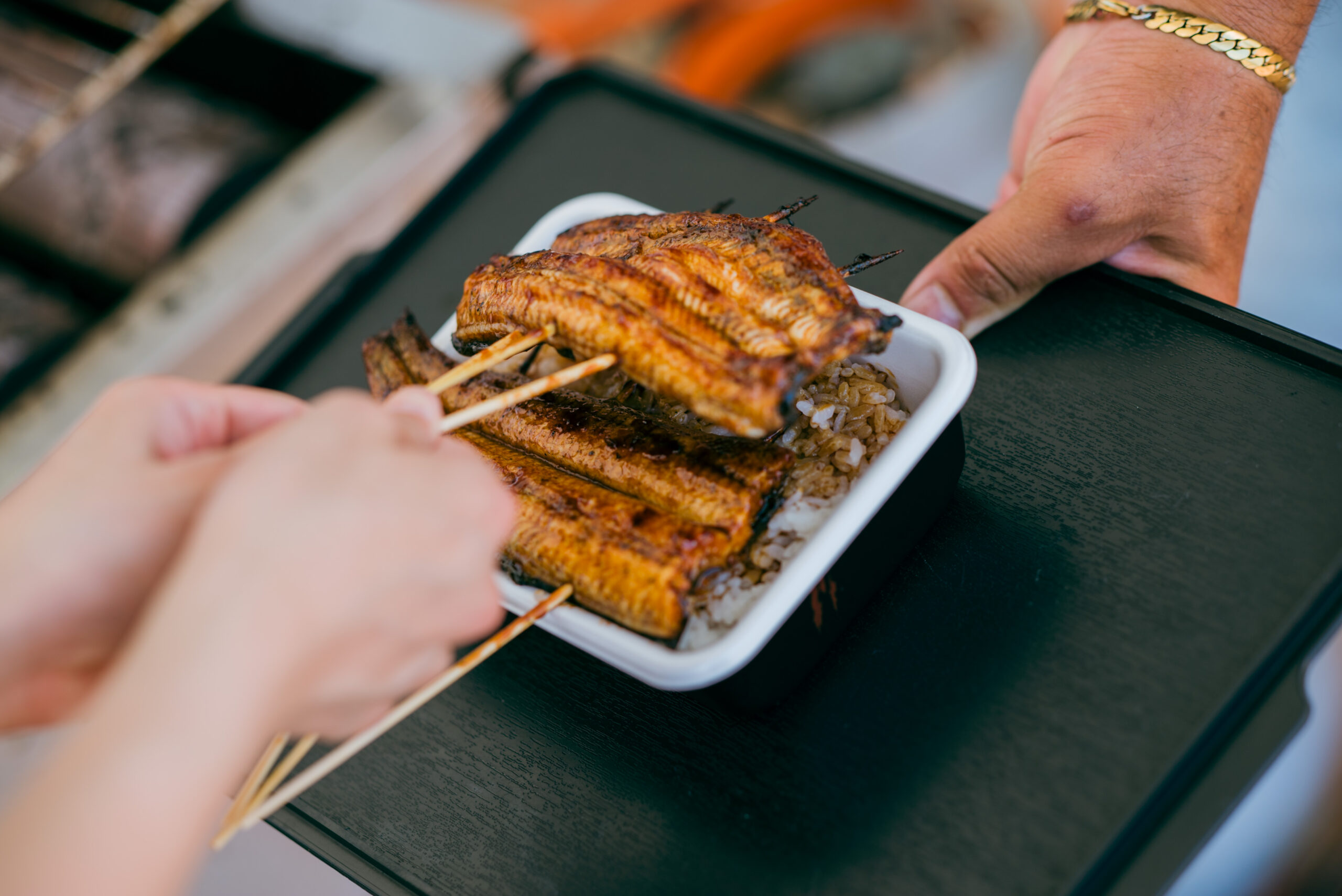
While we’d already treated ourselves to delicious eel, we decided to go the next step by catching our own in Lake Hamana!
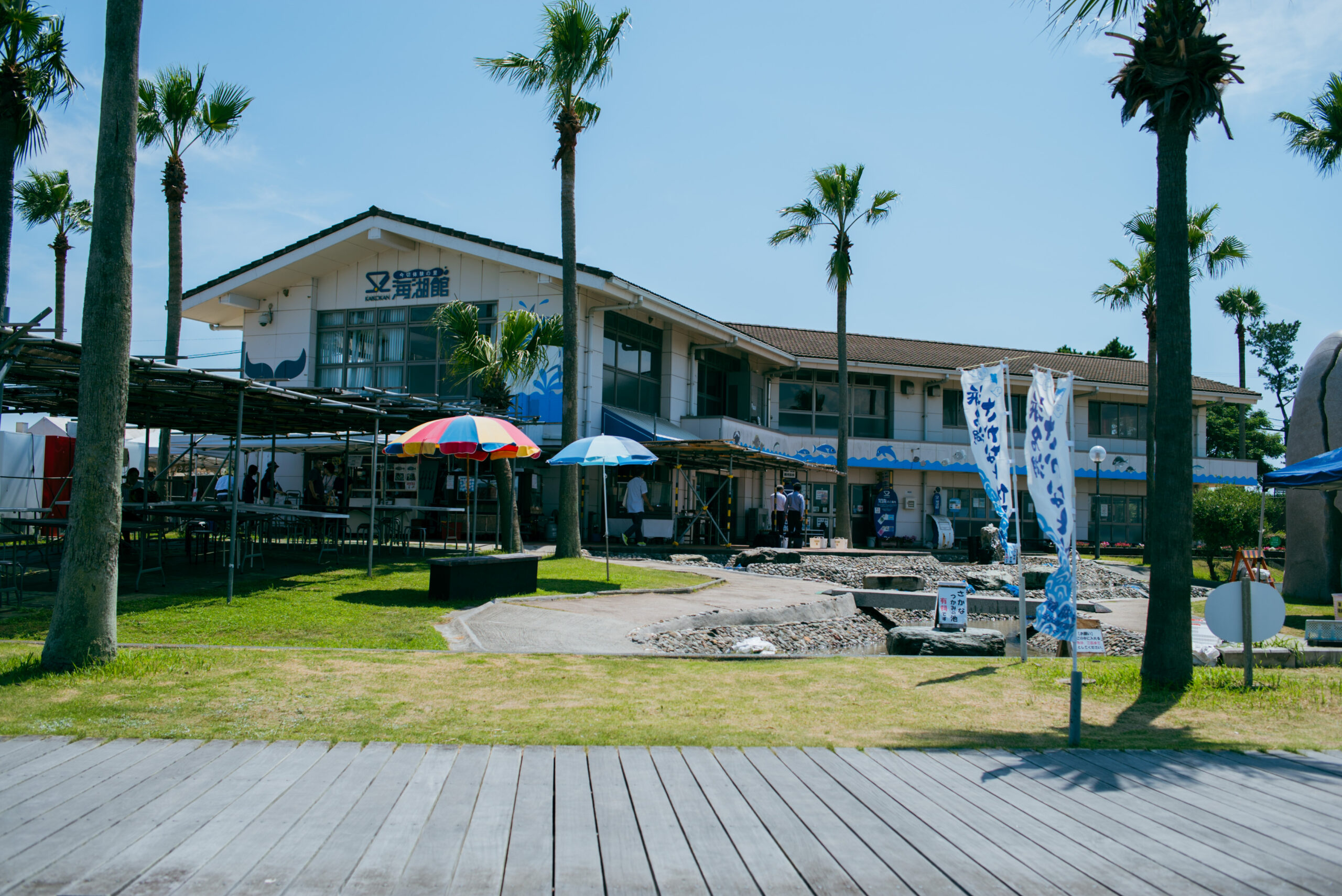
To do this, we visited Imakiri Taiken no Sato Kaikokan, a facility located at the confluence of Lake Hamana and the Pacific Ocean. It hosts a bunch of hands-on experiences aiming to bring visitors closer to the lake’s ecosystem, including fishing and more. Over summer, their Kirakuichi Restaurant runs the one-of-a-kind “eel catching & kabayaki experience,” which is what we joined!
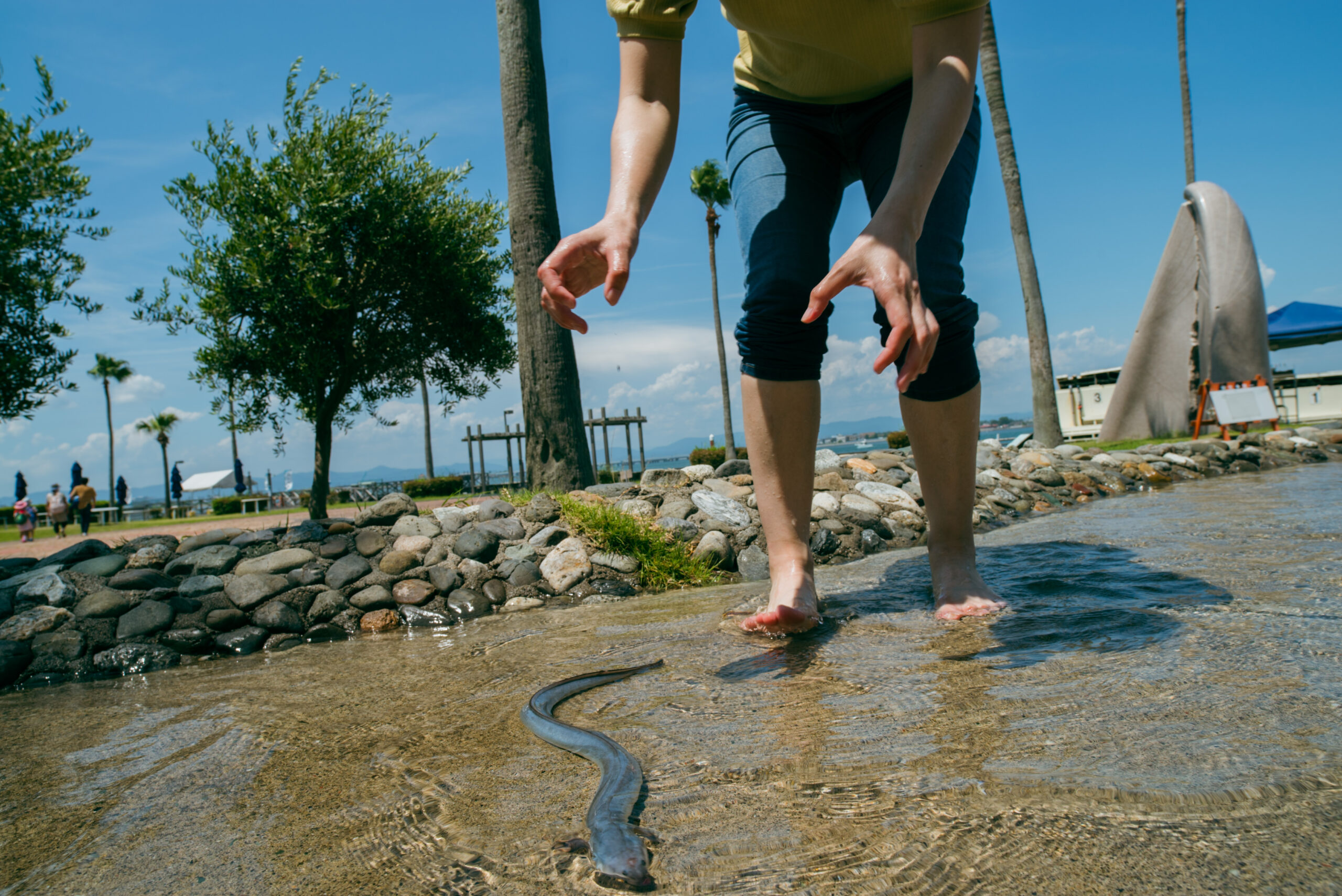
The experience began with a lecture on eel anatomy and catching techniques. Then, we kicked off our shoes and socks and waded into the shallow pond. Catching these slippery creatures is no easy feat – it’s like wrestling with a living bar of soap! The eels darted around at lightning speeds, their slick bodies incredibly hard to grasp. You’ll need quick reflexes, pinpoint accuracy, and a good deal of strength to snag one.
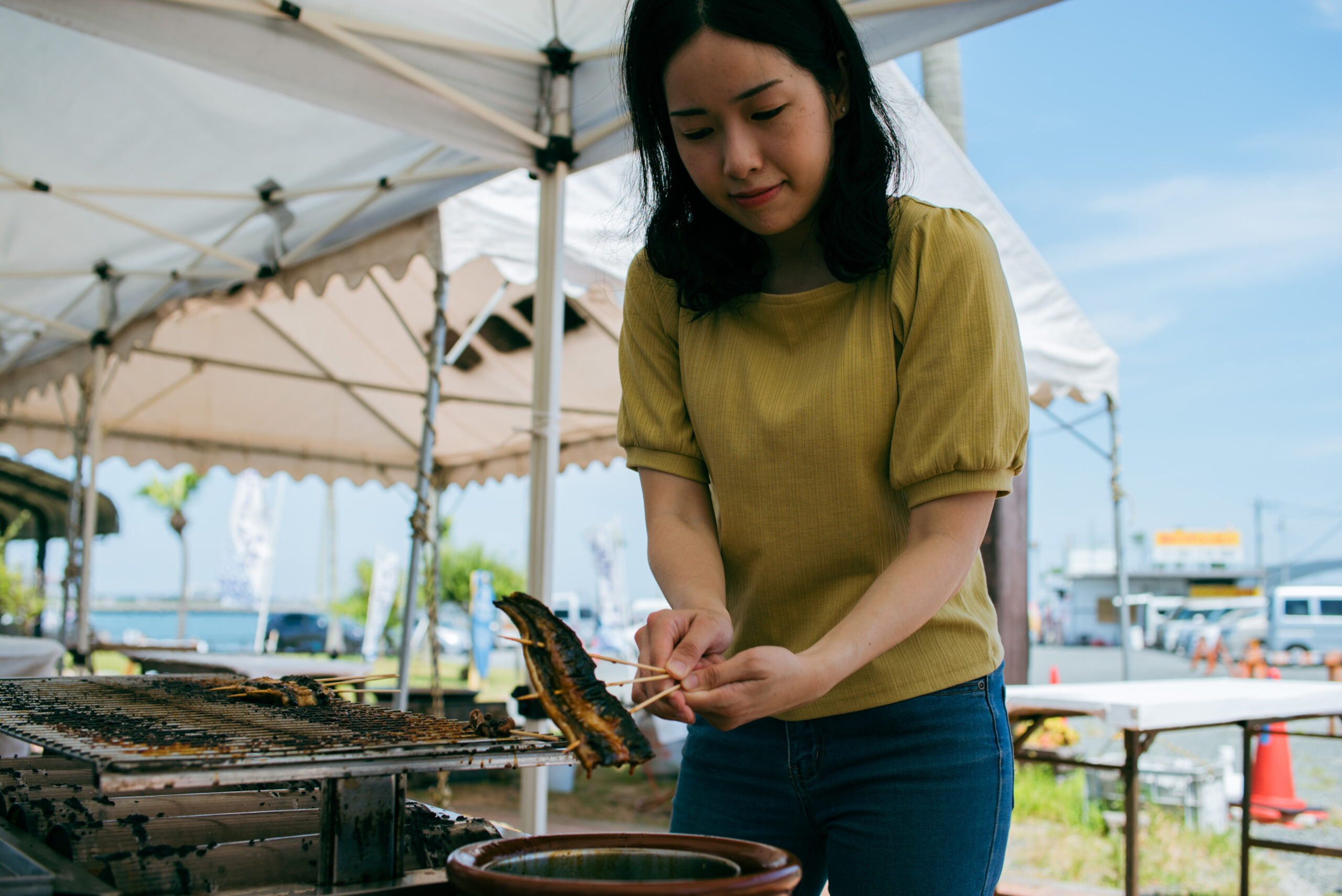
Thankfully, we were able to catch one off guard, which was then prepared and grilled up by the staff. It was dipped three times in a secret sauce as it cooked, releasing a mouthwatering aroma. After 20 minutes, our piping-hot eel rice bowl was ready for us to tuck into!
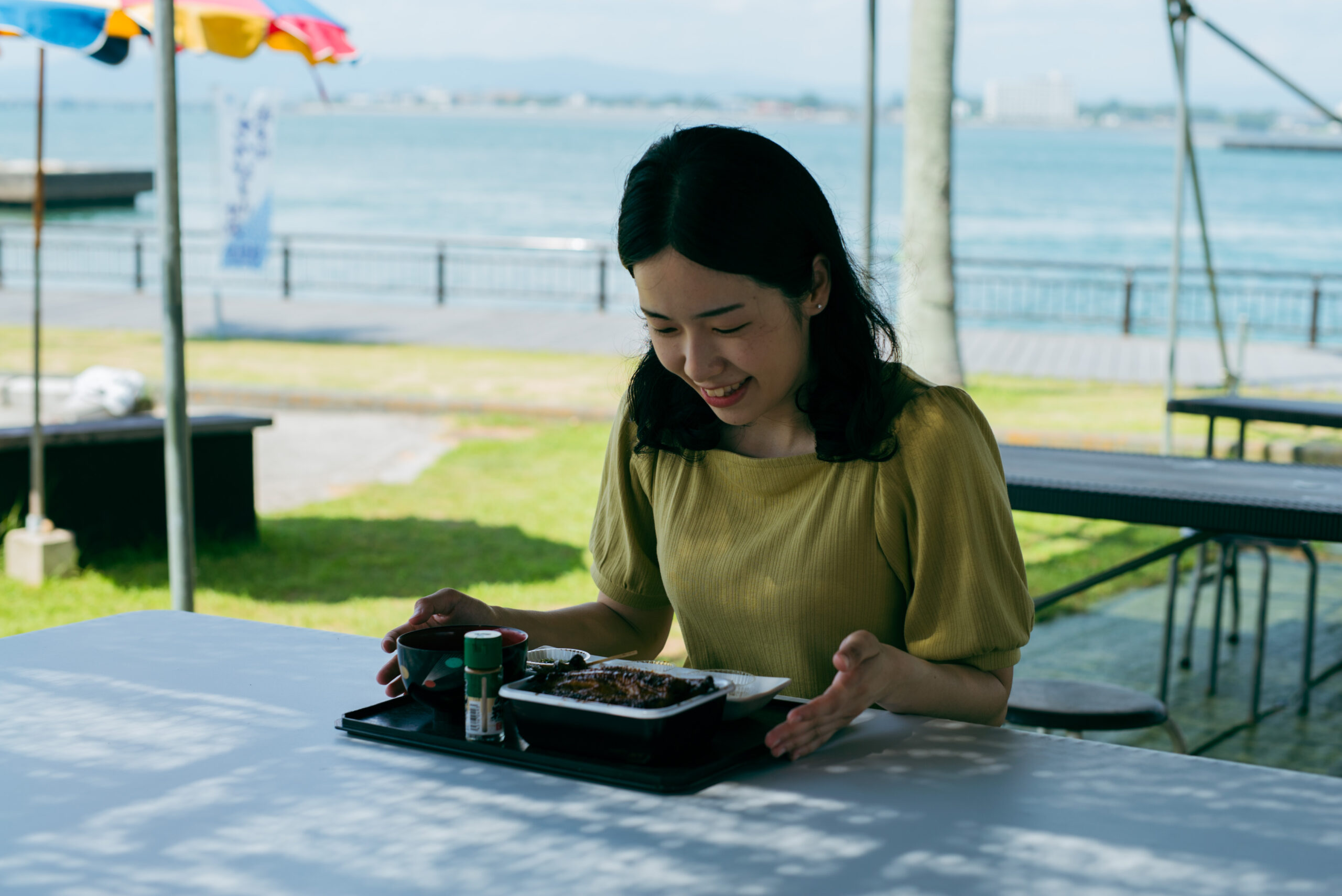
Our hard work under the sun was worth it as we relished the flavor and freshness of our own hand-caught eel. While eating, we noticed that the Seaside Fishing Park next door was also full of fishermen making all sorts of catches, proving just how much of a seafood haven this nook of Japan really is.
Cycling Along the Scenic Lake Hamana
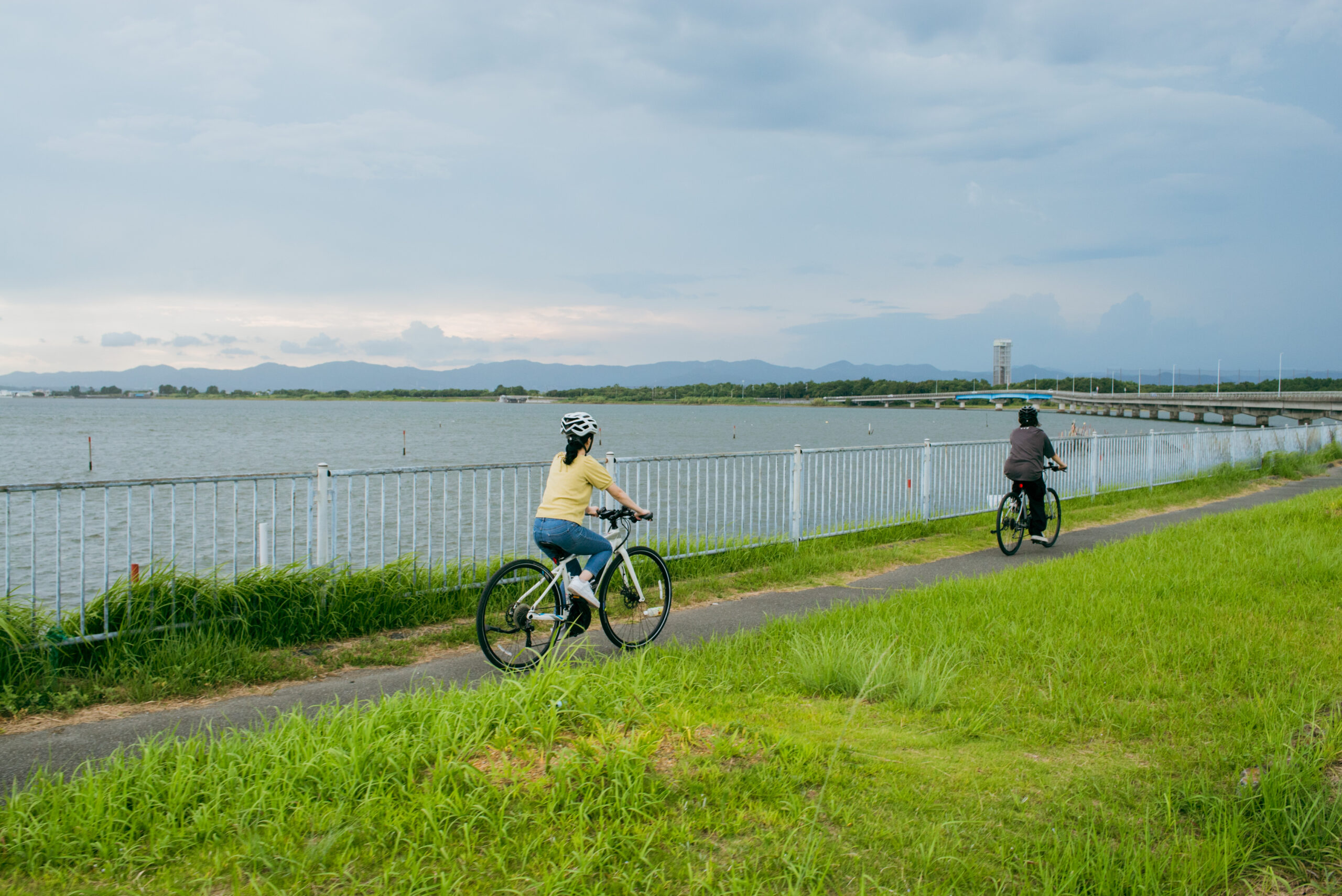
Stretching across both Hamamatsu and Kosai cities, Lake Hamana is not only a hub for eel farming, but is also a premier cycling destination. It has a palm-like shape with numerous inlets, and is the 10th largest lake in Japan and the largest brackish lake.
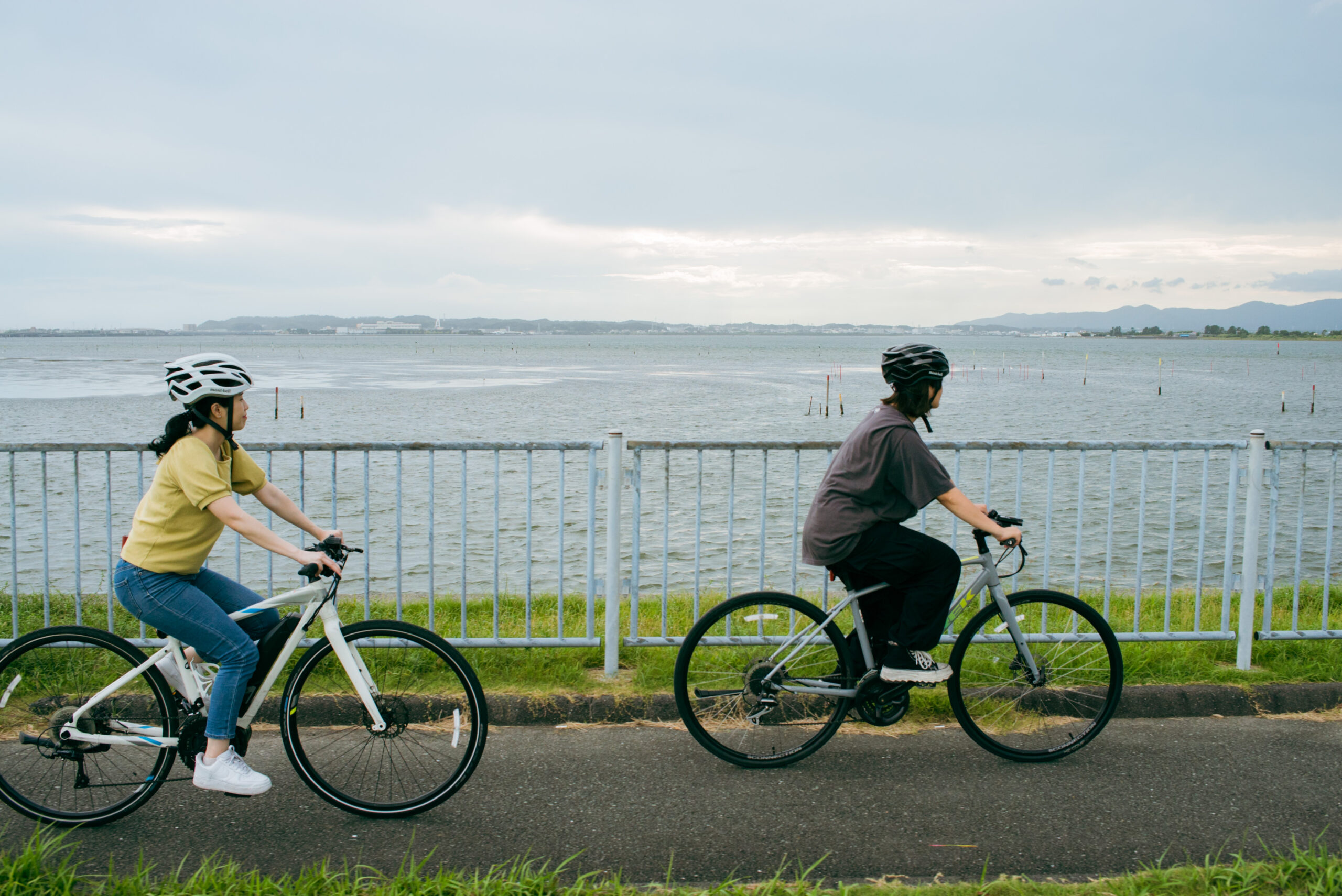
Lake Hamana’s shores are dotted with bicycle rental shops, and the well-maintained Lake Hamana Cycling Course circles the lake, spanning roughly 67 kilometers. Cyclists can enjoy the ever-changing scenery and lapping waves while pedaling along, spurred on by the pleasant weather and lush greenery.
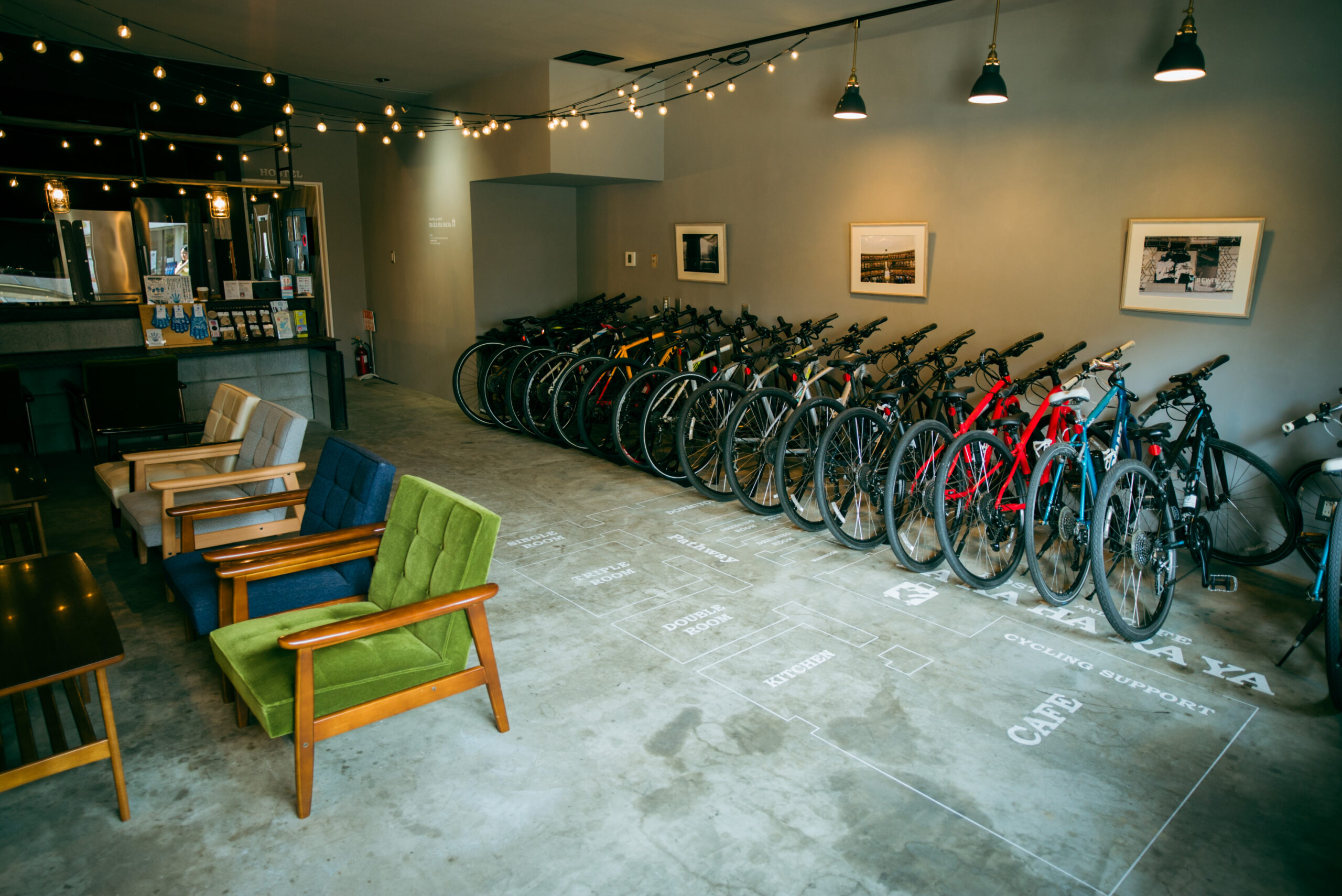
For this trip, we chose our bikes at Hamanako Cycle. Just a 2-minute walk from Washizu Station, this pro-bicycle shop has a wide range of options, including road bikes and electric bikes. They also run the Nakaharaya Hostel and Café, a cyclist-friendly youth hostel and cafe, and host paid tours for visitors.
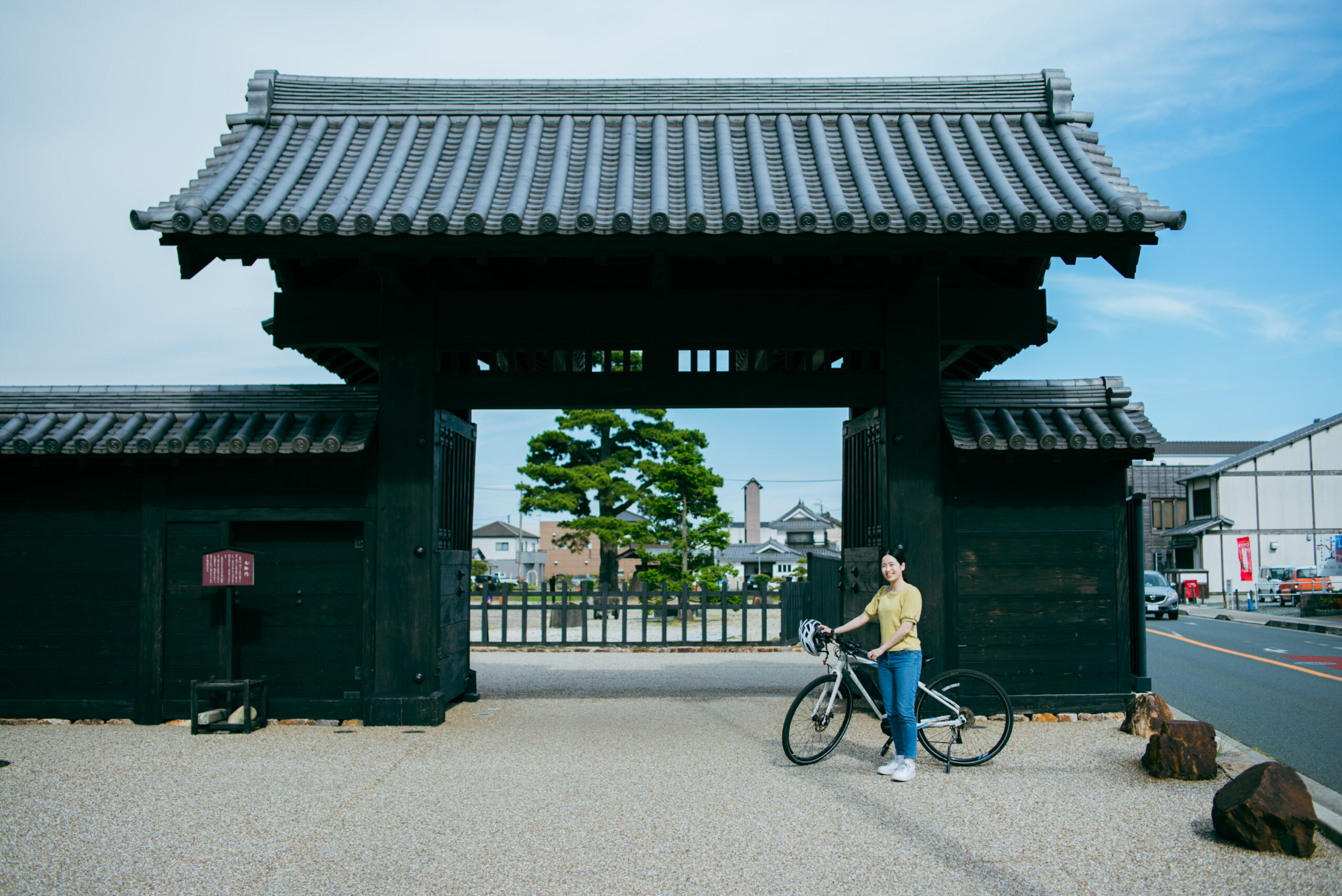
After readying our bicycles, we set off around the lake, heading towards Bentenjima and Kanzanji Onsen. The blue sky dotted with white clouds and the gentle breeze made for a blissful day out. Along the route, we stopped at a bunch of attractions like the Arai Barrier Ruins, Japan’s sole surviving ancient checkpoint. These barriers were taxation and inspection points established at key junctions during the Edo Period (1603-1867). We decided to turn back at the Nakanoshima Bridge, but you can continue on to complete a full circuit of Lake Hamana in about 6 hours. Just be sure to plan your route carefully, and consider your fitness level.
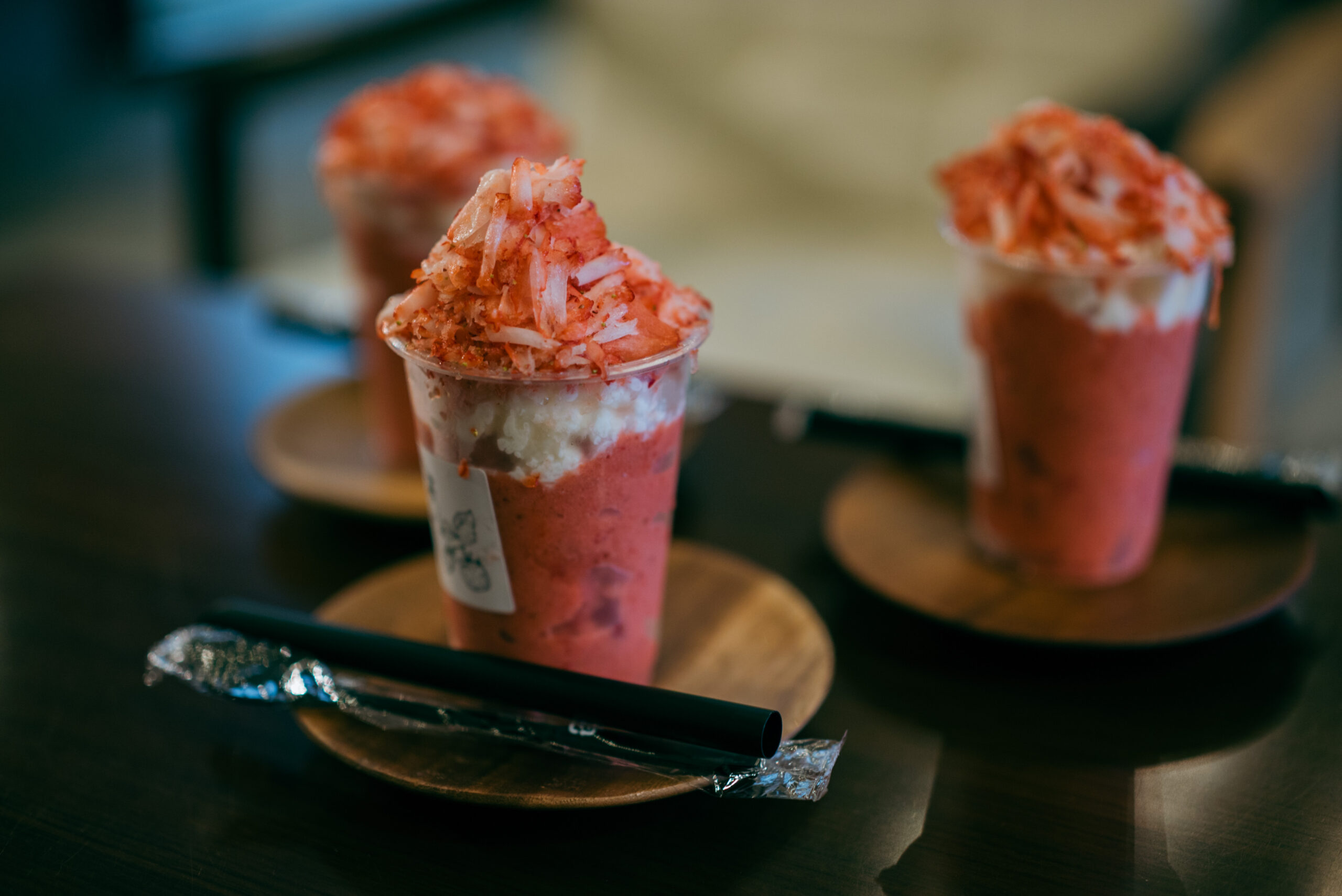
Upon returning to Hamanako Cycle, we treated ourselves to their signature Special Strawberry Smoothie, whose sweet and sour blend and icy coolness was the ideal treatment for our tired muscles.
Dinner: Oyster Kaba Bowl at Hamanabo
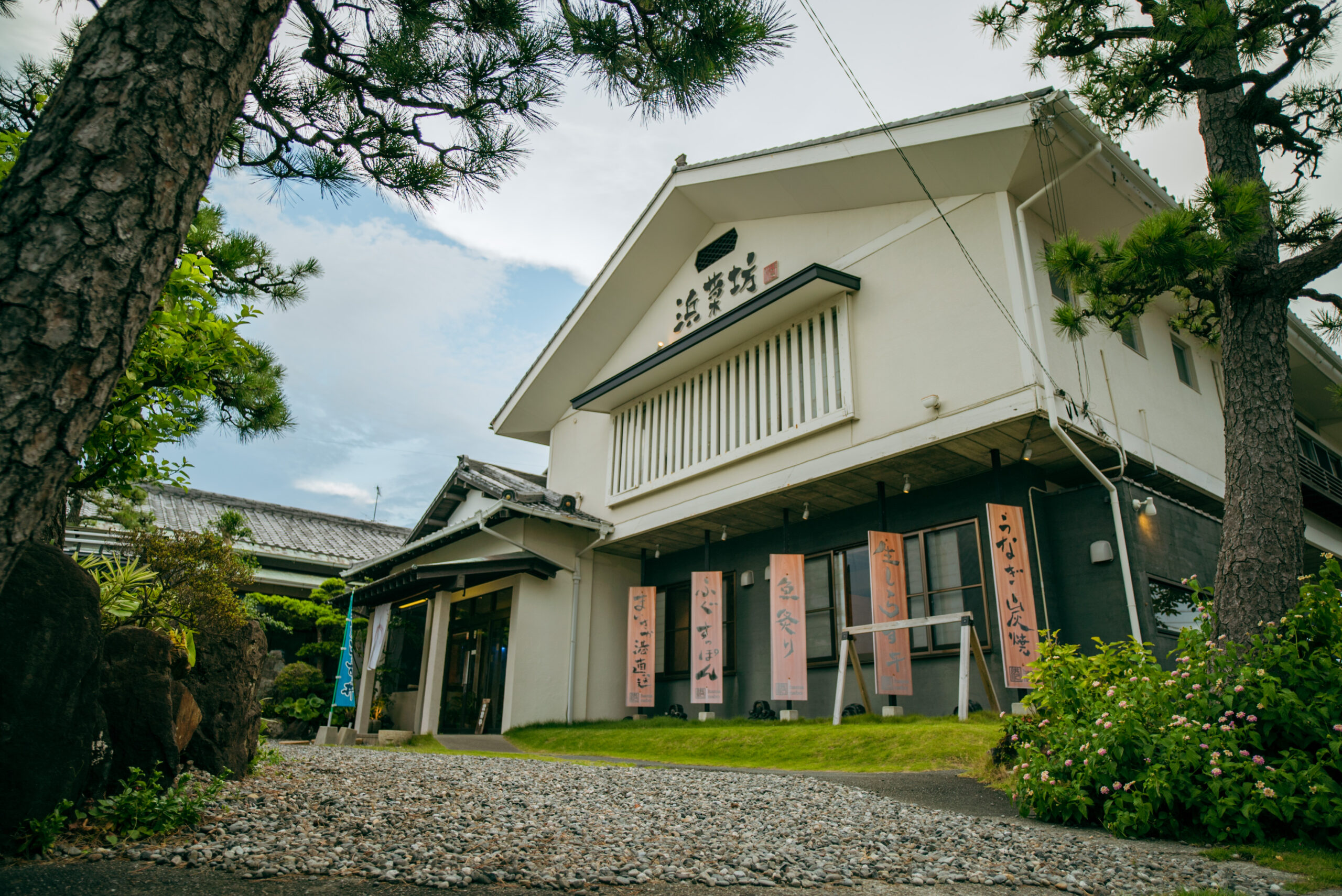
Hamanabo is a Japanese restaurant on Bentenjima specializing in fresh Lake Hamana ingredients. Their signature dish is the Oyster Kaba Bowl, available only in winter. This enticing bowl is packed with bulky Lake Hamana oysters and nori seaweed, all cooked in kabayaki sauce, topped off with Shizuoka onions and mandarins peel for added zest. It’s a colorful, aromatic dish that encapsulates the essence of Lake Hamana’s bounties.
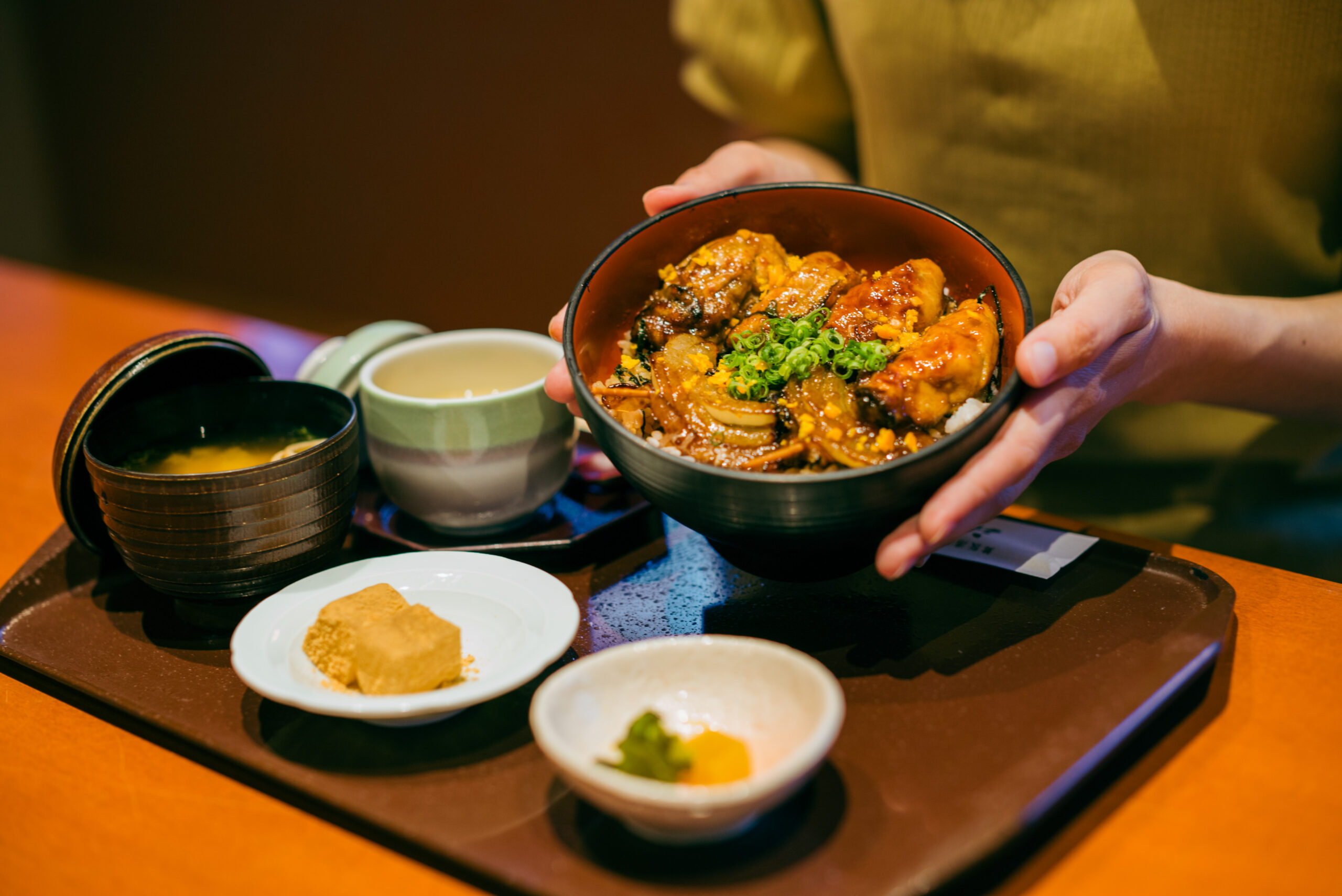
The kabayaki sauce was the perfect match for the succulent oysters. While rich, its flavor was balanced by the tangy mikan peel, letting us finish up without overwhelming our stomachs.
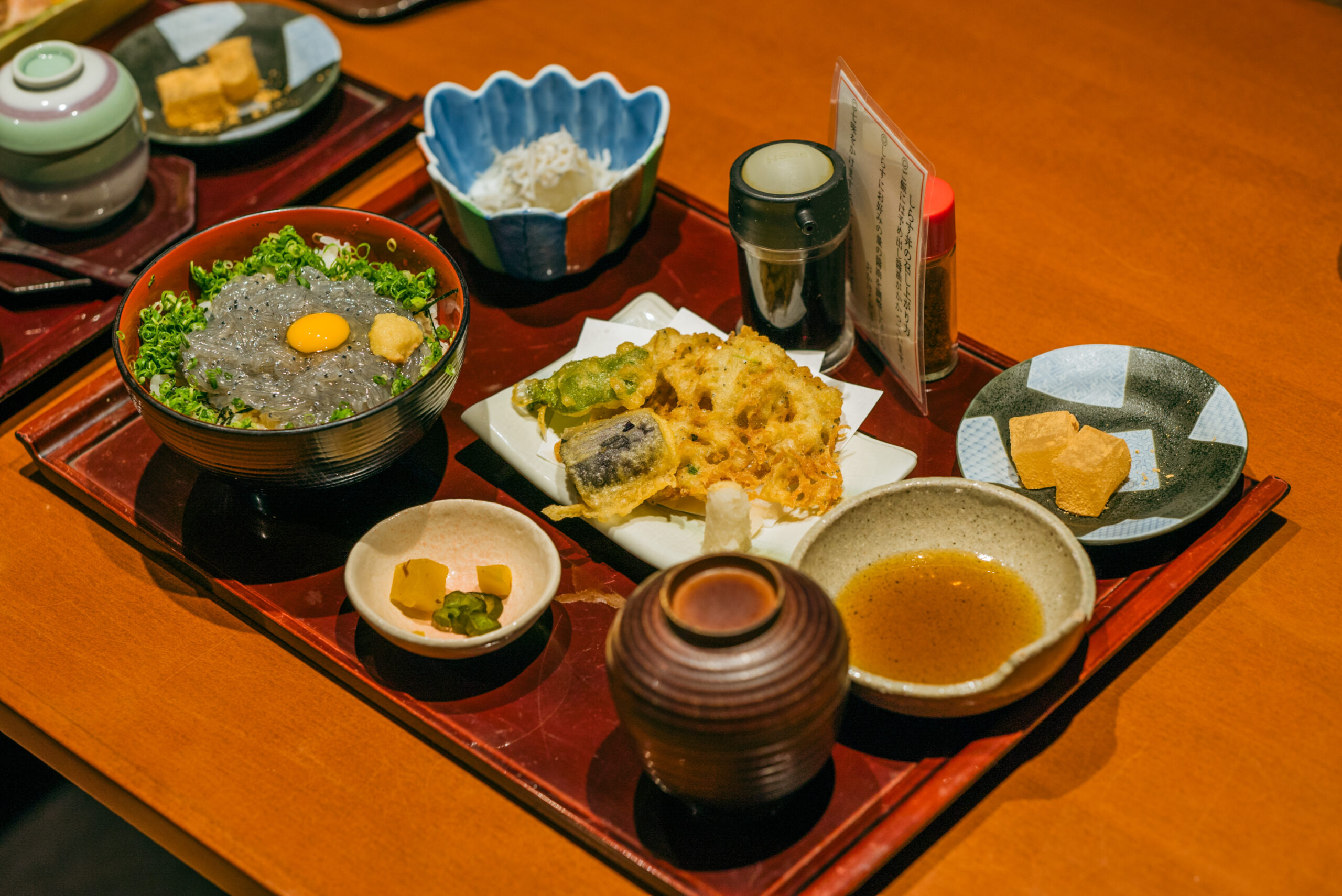
The Shirasu Sanmai Set is another favorite among gourmands, where whitebait is served three different ways: raw, as crispy tempura, and with grated daikon radish. It’s a full display of Hamanabo’s pride in its fresh and premium ingredients.
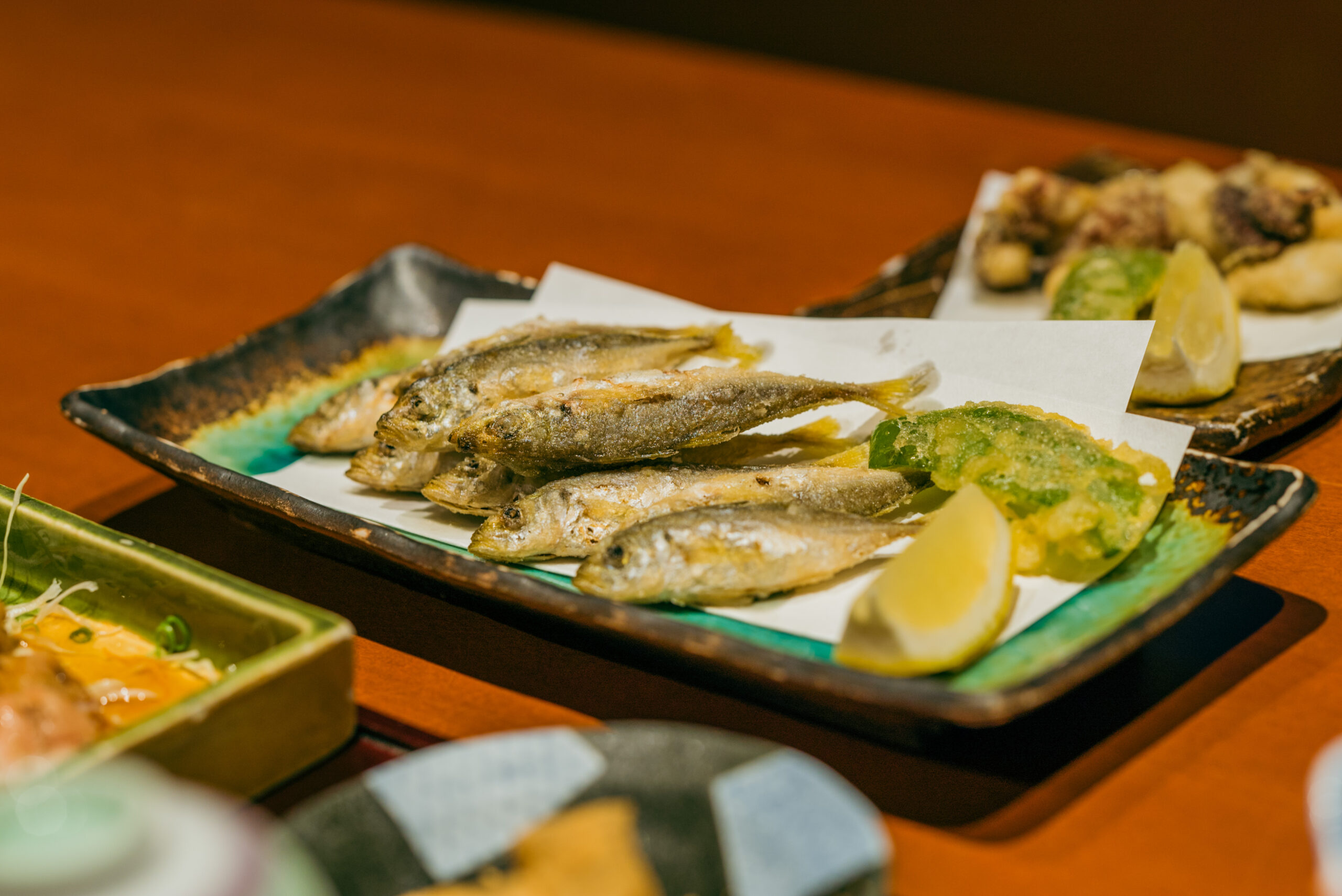
We also added two side dishes of deep-fried octopus and small horse mackerel fish, which are two other delicious Lake Hamana specialties that we hadn’t gotten around to trying.
Day 3: Lake Hamana’s Sweet and Sugary Side
On our final day in Hamamatsu, we stayed true to our gourmet theme by visiting beloved local sweets shops, then rounded off our trip at a fruit park.
Baumkuchen at Jiichiro Ohiradai Honten
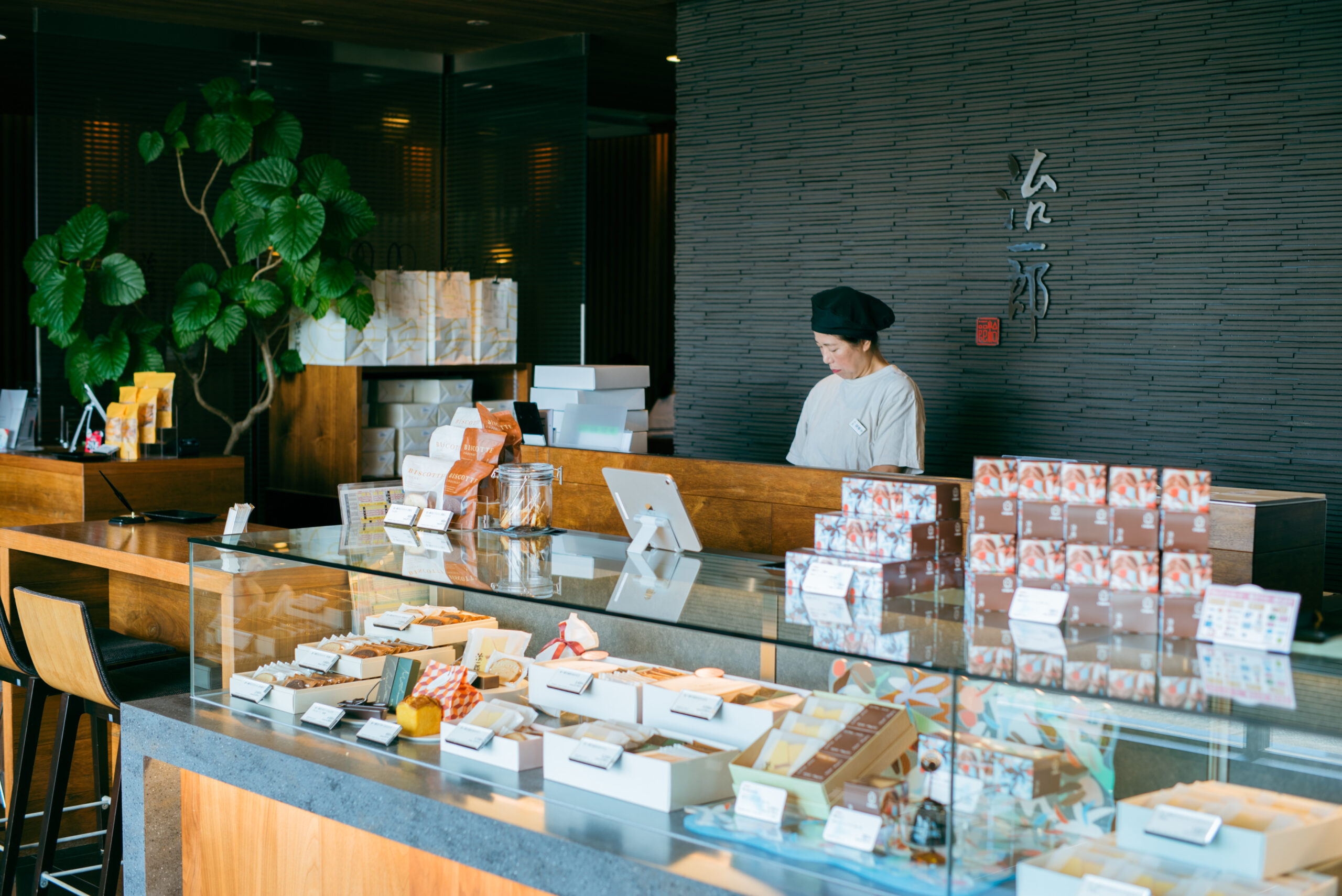
While now widely popular in Tokyo, sweets store Jiichiro is actually from Hamamatsu, and their signature Jiichiro Baumkuchen was first created here in 2002.
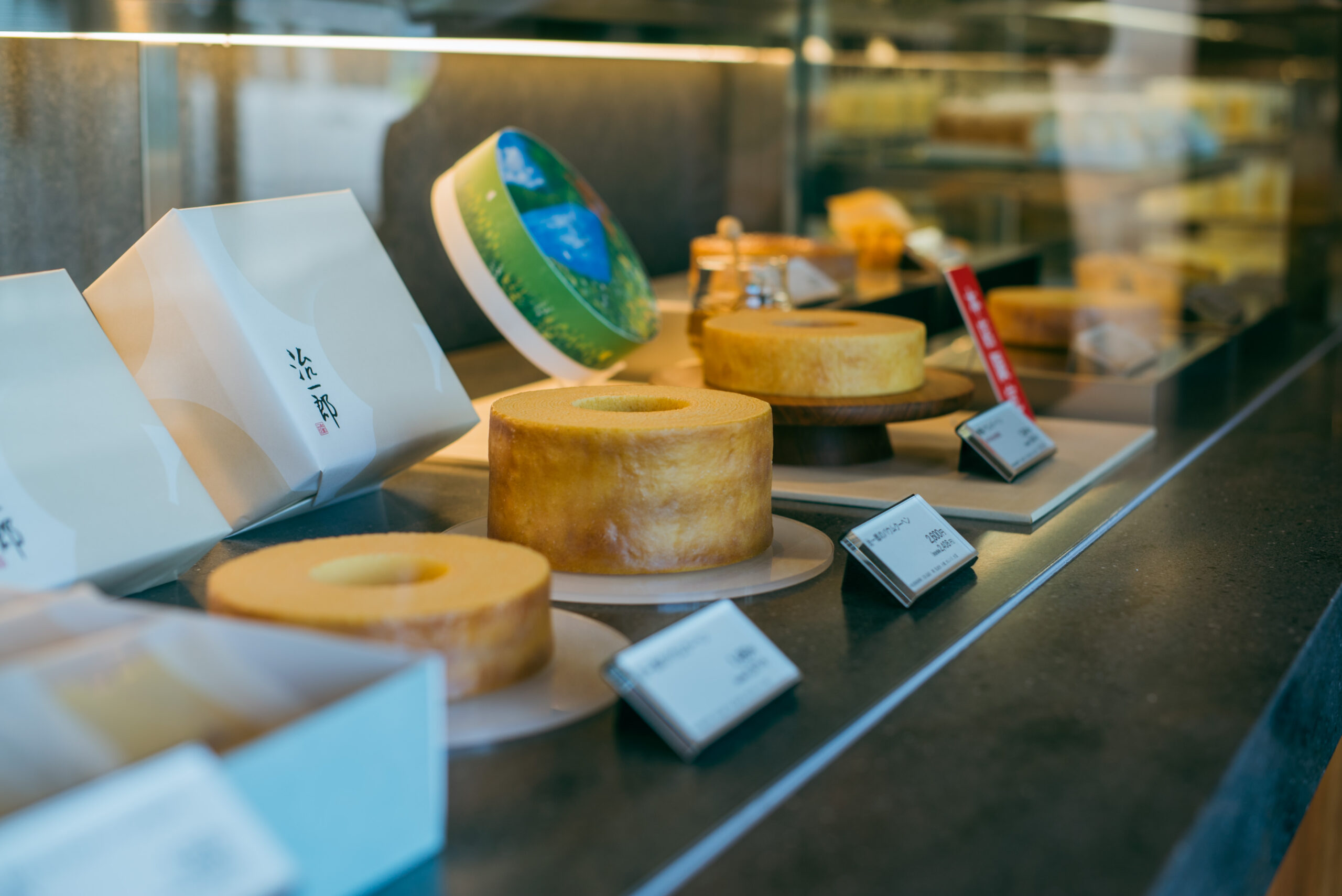
At the time, most baumkuchen in Japan were dry and unpalatable. To address this, Jichiro’s patissiers experimented tirelessly, conducting over 100 trials before perfecting a moist, richly flavored baumkuchen, so soft that it doesn’t need a beverage to wash it down. It was a huge hit, and is now a go-to treat for Japanese people of all ages.
Jiichiro’s flagship store in Ohiradai contains a spacious interior lined with beautifully packaged takeout sweets. You can stock up on baumkuchen in different sizes, and try out other popular treats like the Jiichiro Pudding, made with egg yolks and Hokkaido milk; and the Jiichiro Roll Cake, containing fresh cream.
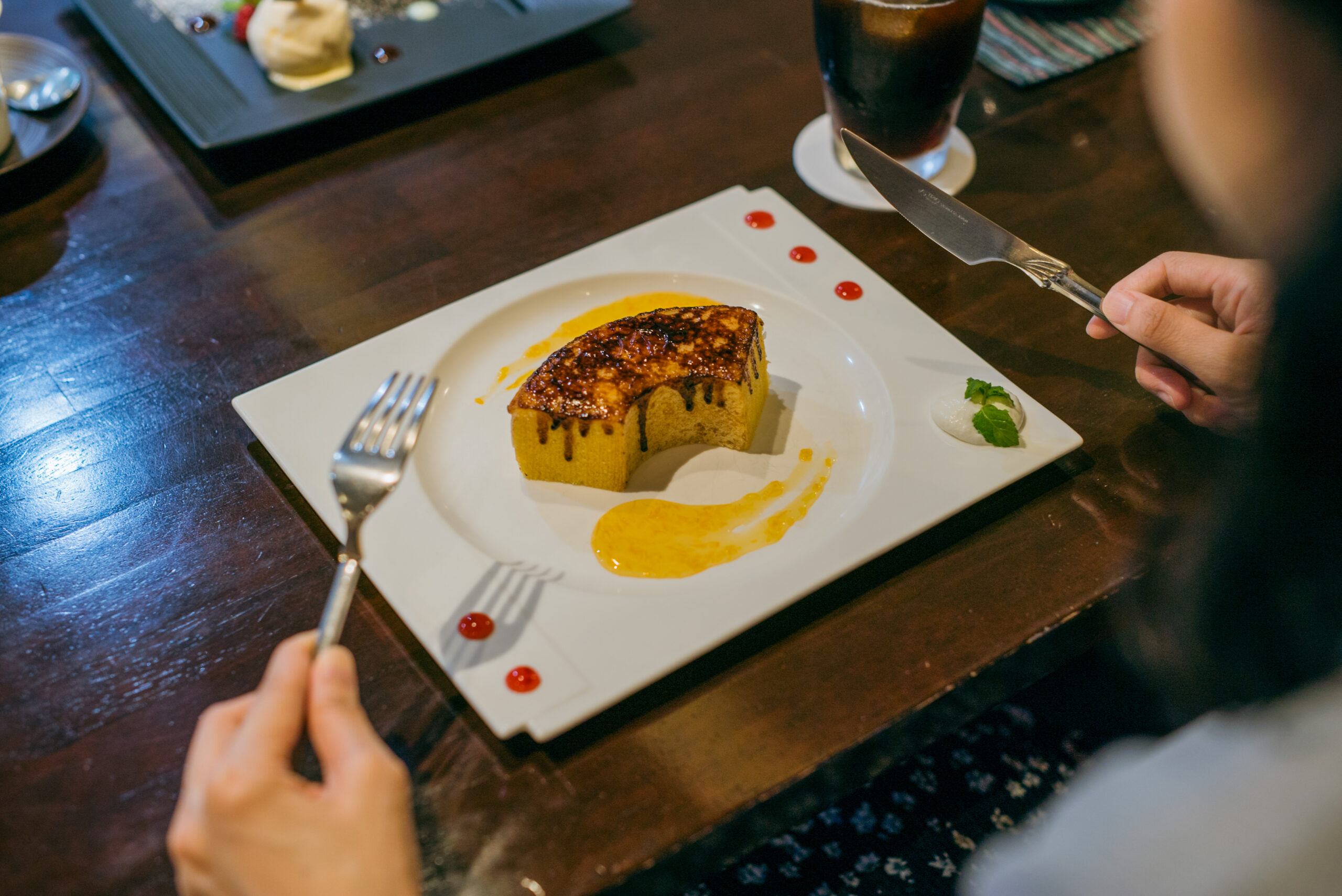
The store also has a cozy cafe for customers to relax and munch on treats like the Jiichiro Caramelized Baumkuchen or freshly baked apple pie.
Japanese Tea at Marutama Chaya
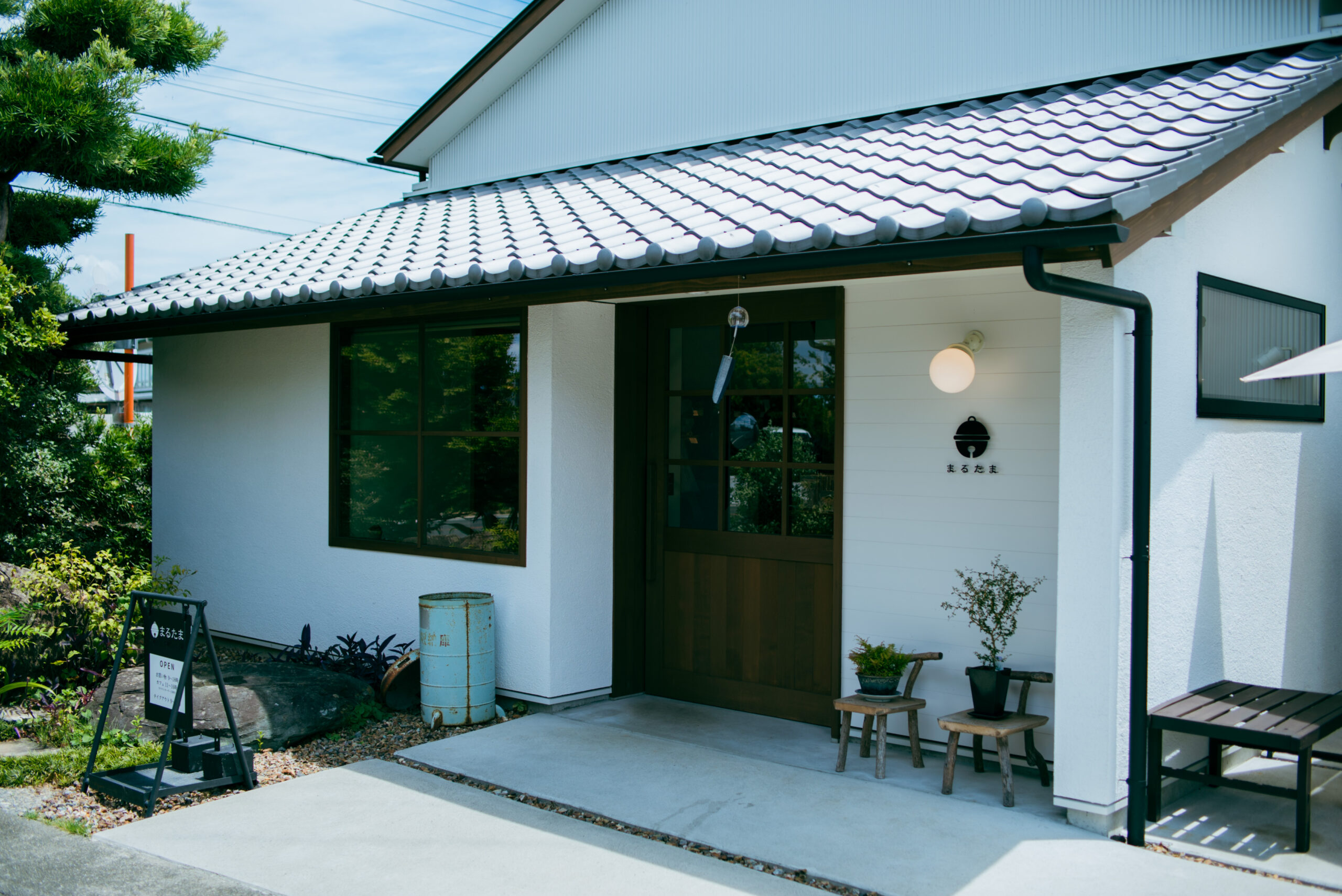
Marutama Chaya is a tea shop run by the historic Marutama Tea Company. Their philosophy centers on producing tea without herbicides or pesticides and minimizing chemical fertilizer, making products safe and healthy.
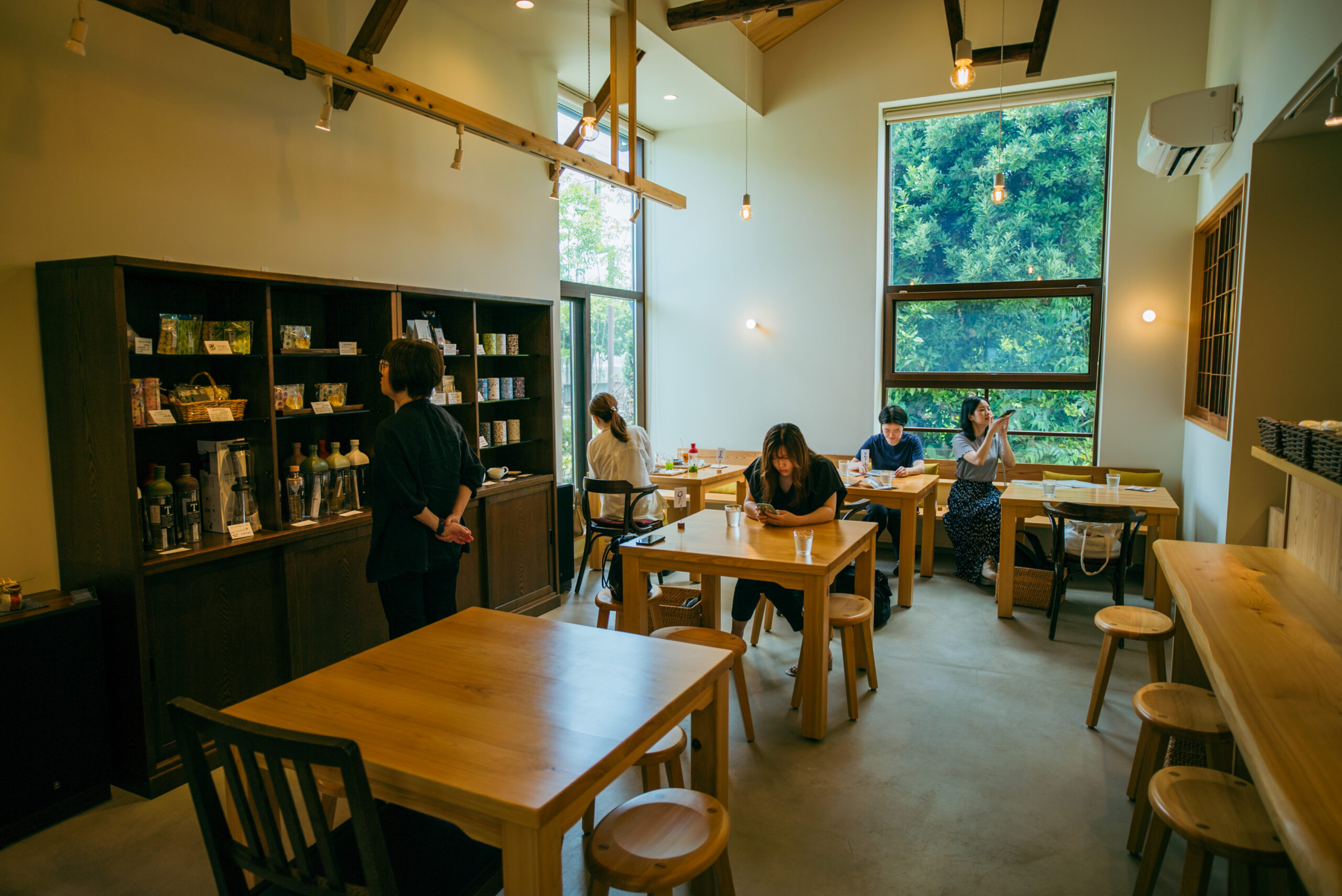
They’ve also renovated what was once a noodle drying room into a charming teahouse cafe, where we drank tea straight from their plantations while relishing the well-preserved ambiance.
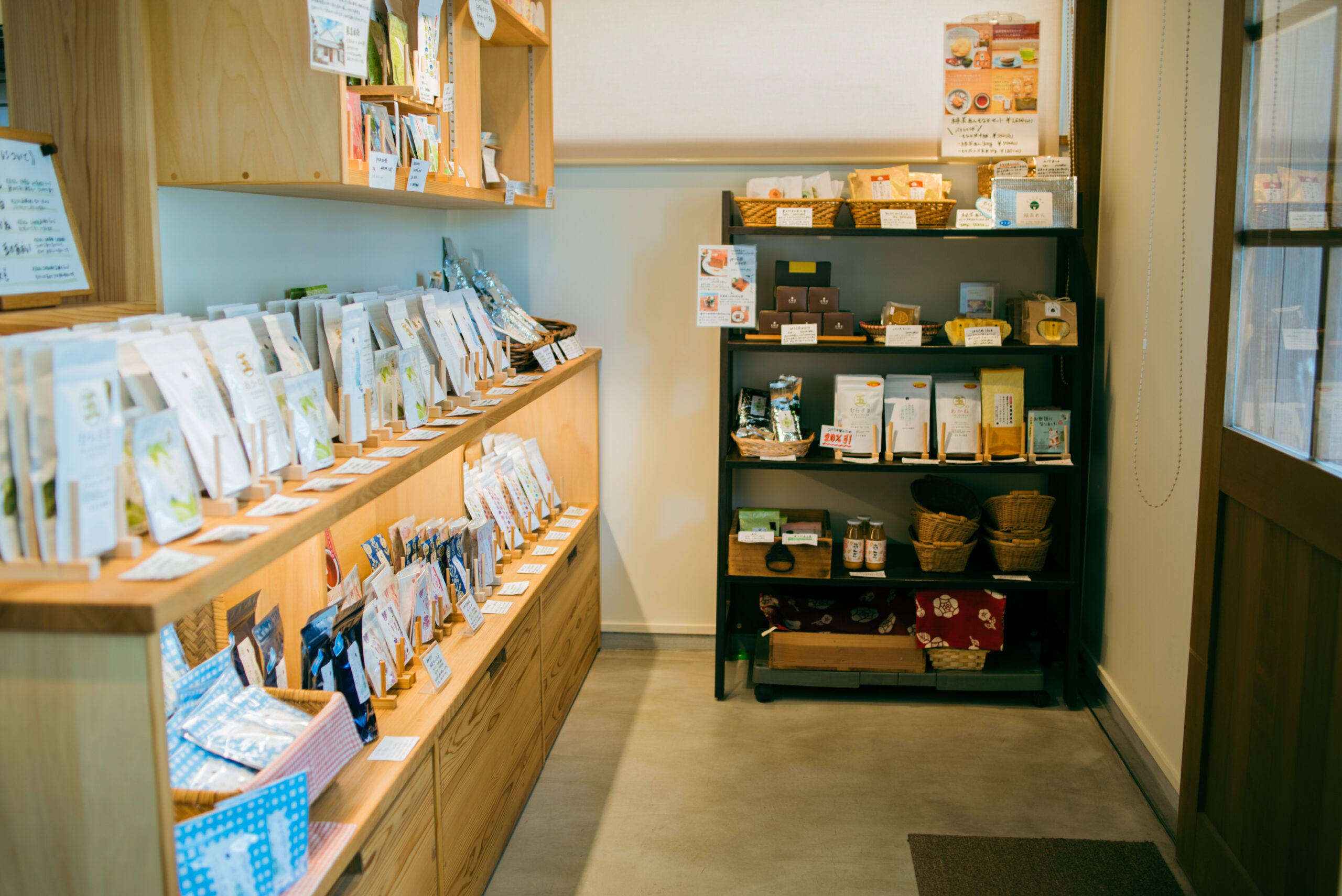
The shop also sells tea grown on their plantations and processed in their factory, including deep-steamed green tea, hojicha (roasted green tea), genmaicha (brown rice tea), and Japanese black tea, along with a selection of local tea-related products.
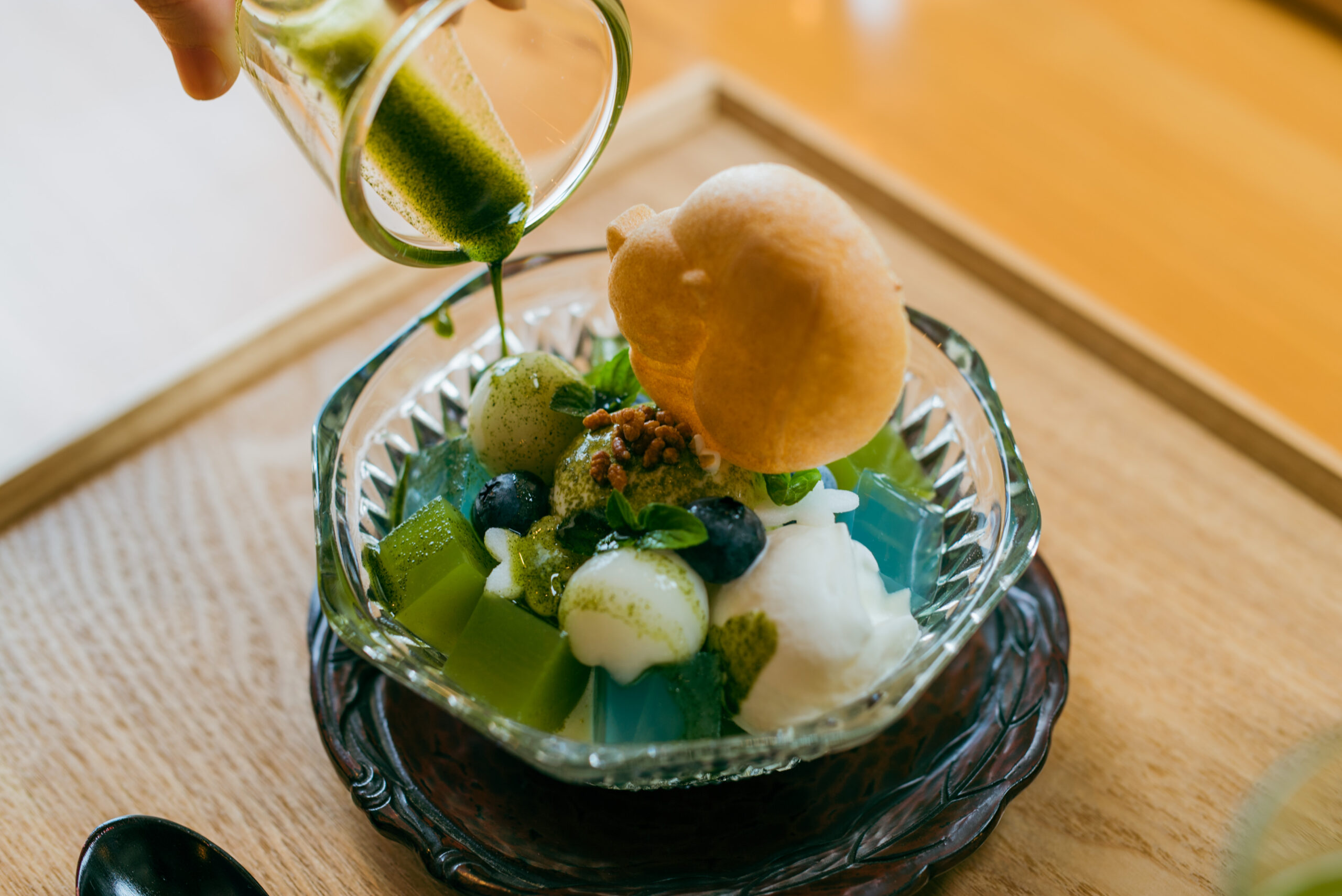
The cafe menu changes seasonally to highlight the best of the period. We opted for the Summer Green Tea Anmitsu Set, a refreshing twist on a traditional Japanese dessert combining green tea-flavored bean paste with agar jelly made from “Tama no Tokiwa” tea leaves, producing a feast for both the eyes and taste buds.
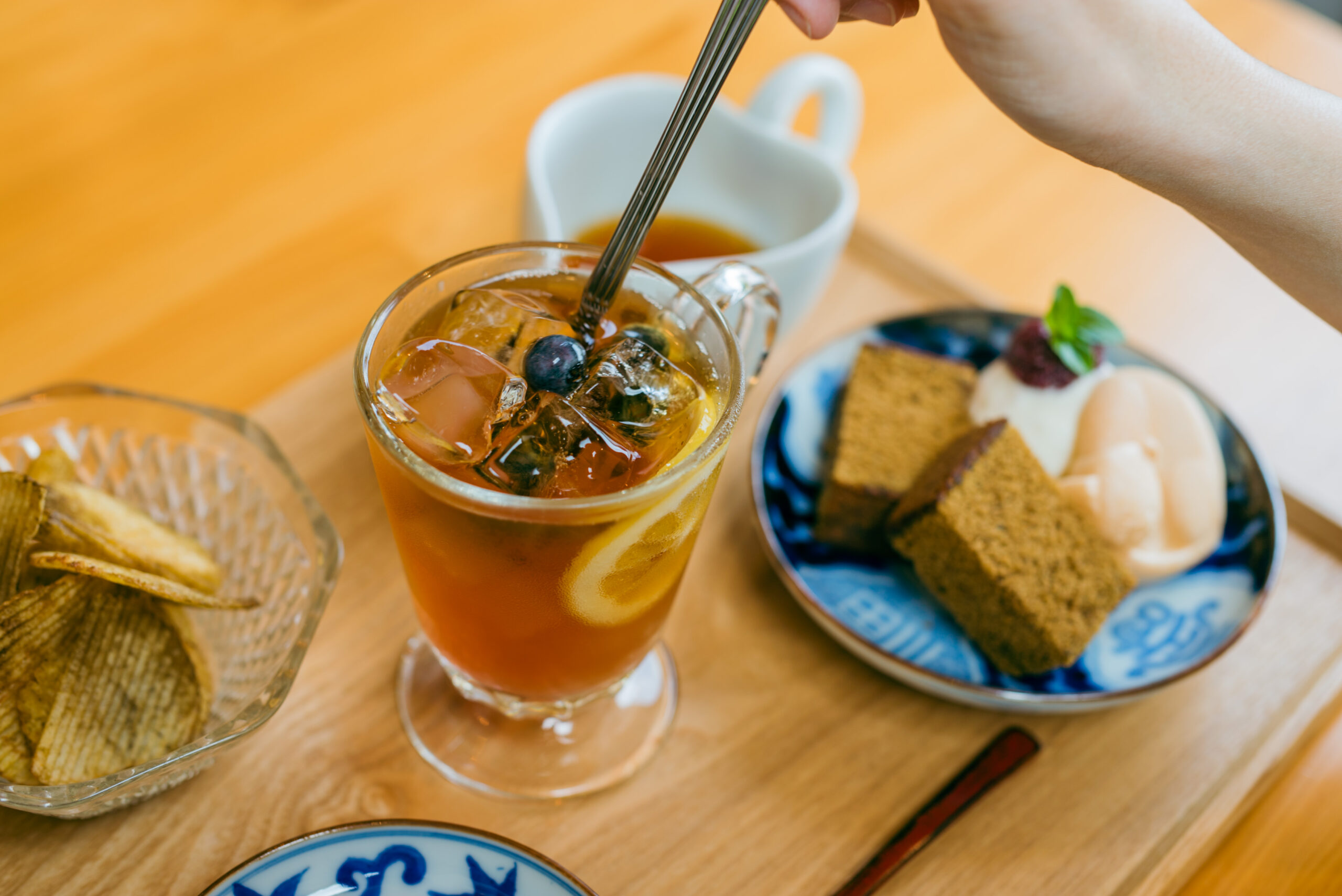
We also recommend the Mountain Peach Tea Soda, a sparkling tea that blends black tea with mountain peaches grown in the shop’s orchard. Its invigorating sweet-sour punch was an excellent match with the “monaka” wafers, black tea castella, and hojicha-flavored potato chips that we also ordered.
Scrumptious Fruits at Hamamatsu Fruit Park Tokinosumika
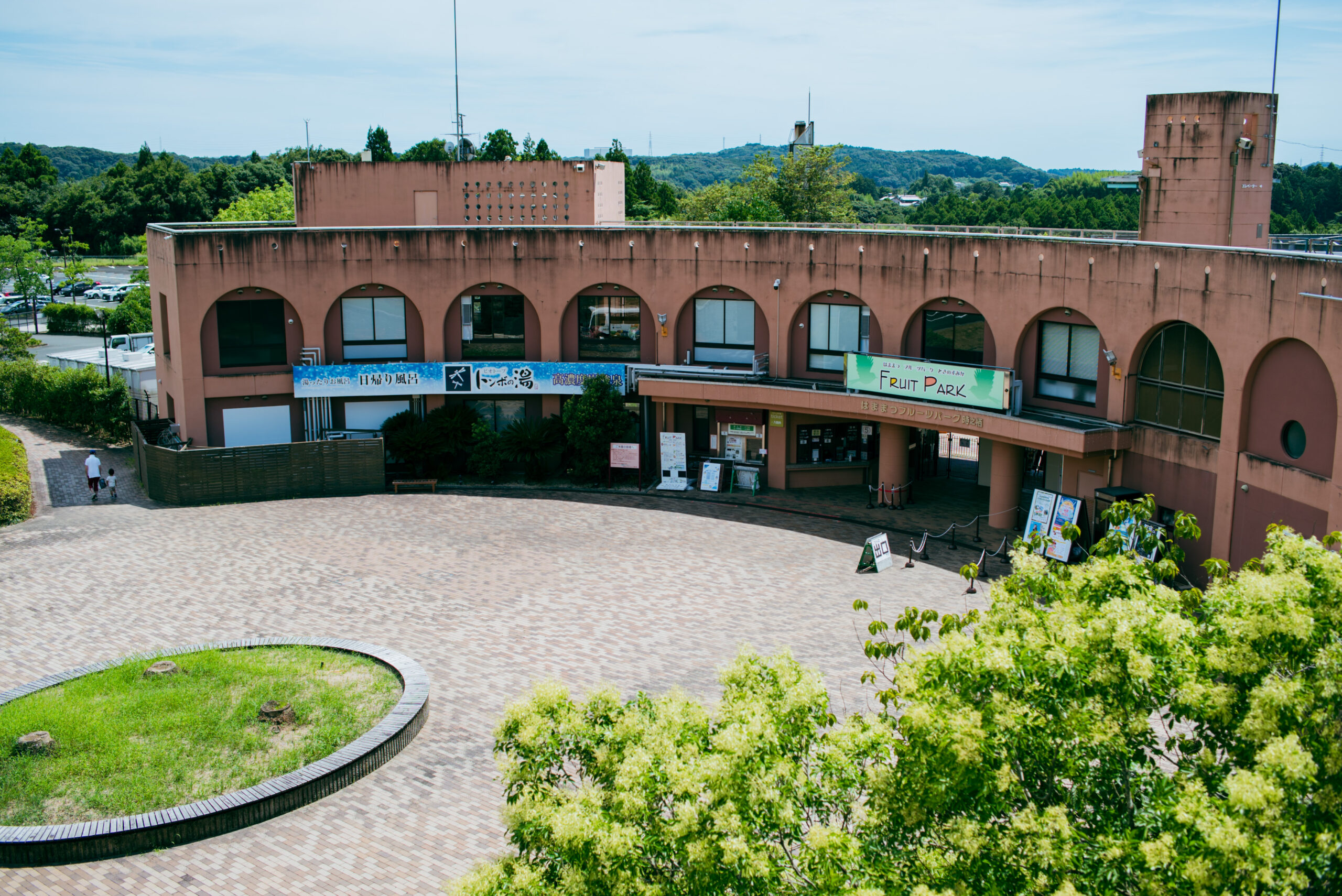
Hamamatsu Fruit Park Tokinosumika is a fruit-themed amusement park with attractions for both adults and children. It strives to show off the appeal of fruit in every possible way, from orchards to restaurants, a winery, and more.
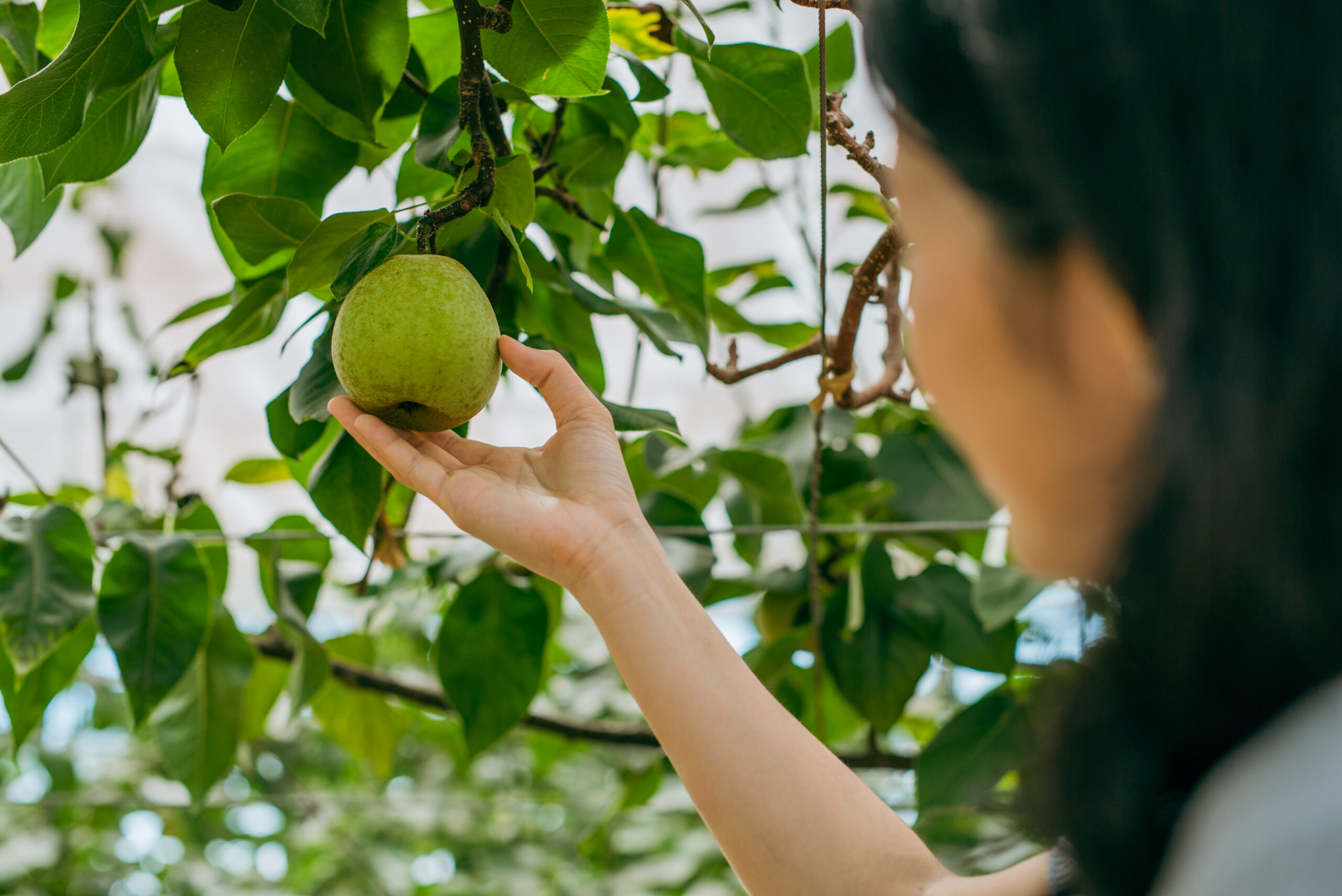
The park grows about 15 varieties of fruit, including strawberries, cherries, peaches, grapes, and apples, and has around 120 different types of fruit trees. We opted for a fruit-picking session, which is offered throughout the year. During our visit, pears and grapes were in season.
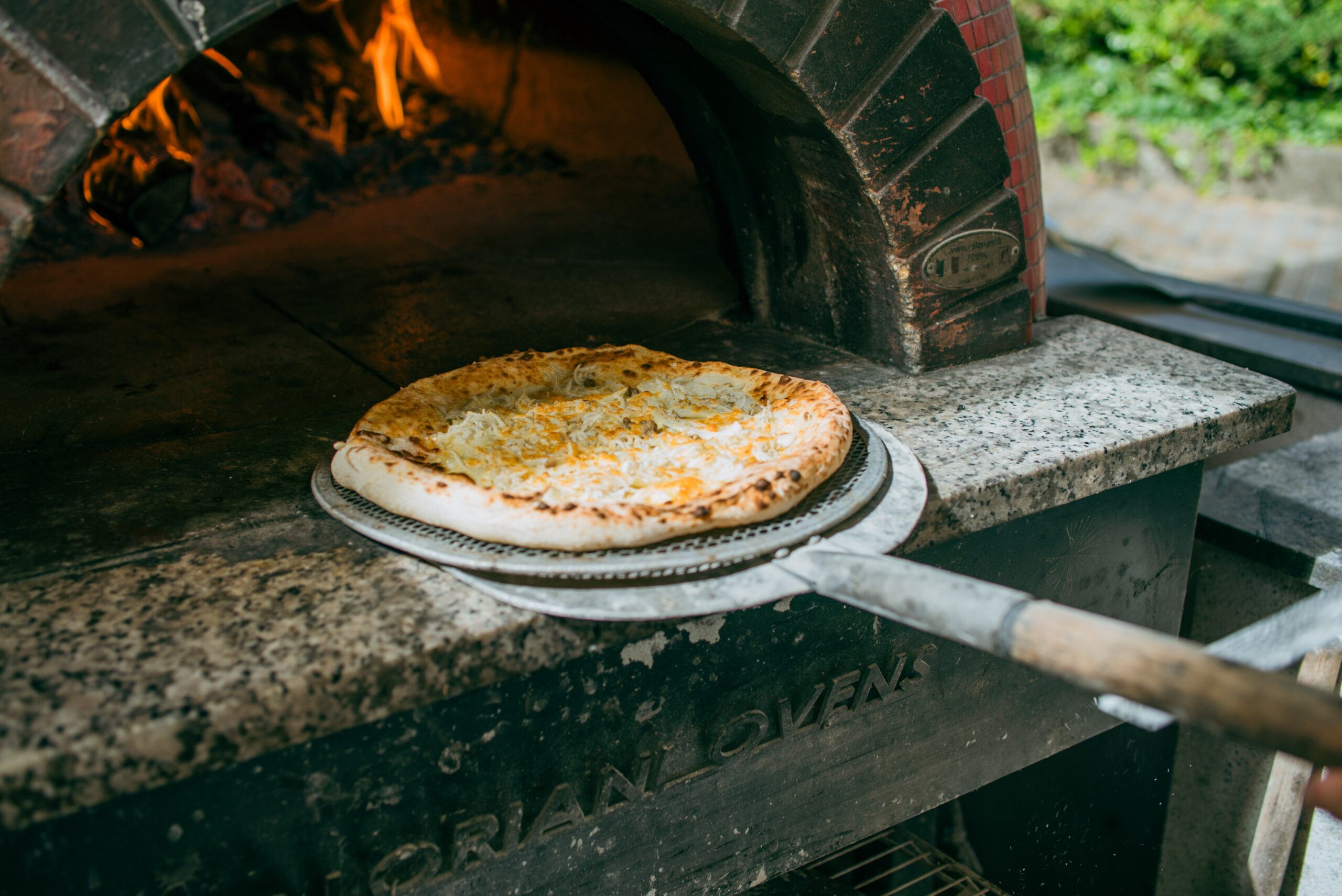
Visitors can also tuck into pizza baked in outdoor wood-fired ovens. For a Hamamatsu twist, opt for the whitebait pizza drizzled with olive oil, whose salty flavor is sure to stimulate the appetite, even on blazing hot days.
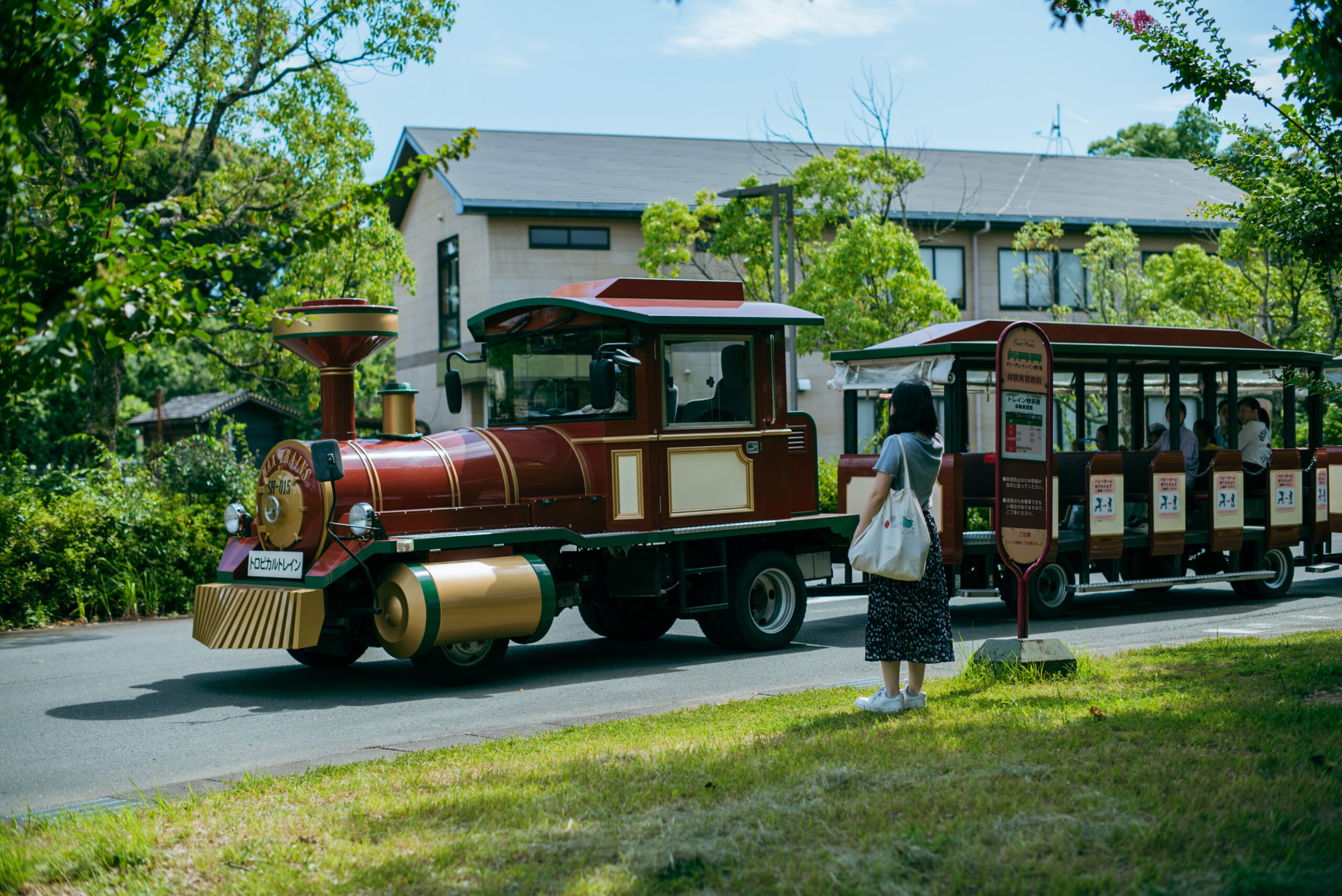
While the park spans a whopping 430,000 m², on days with too much heat or rain, you can comfortably explore via the free shuttle bus shaped like an old steam train, or by renting Segways or bicycles.
Artisanal Tea Sweets at Kogiku
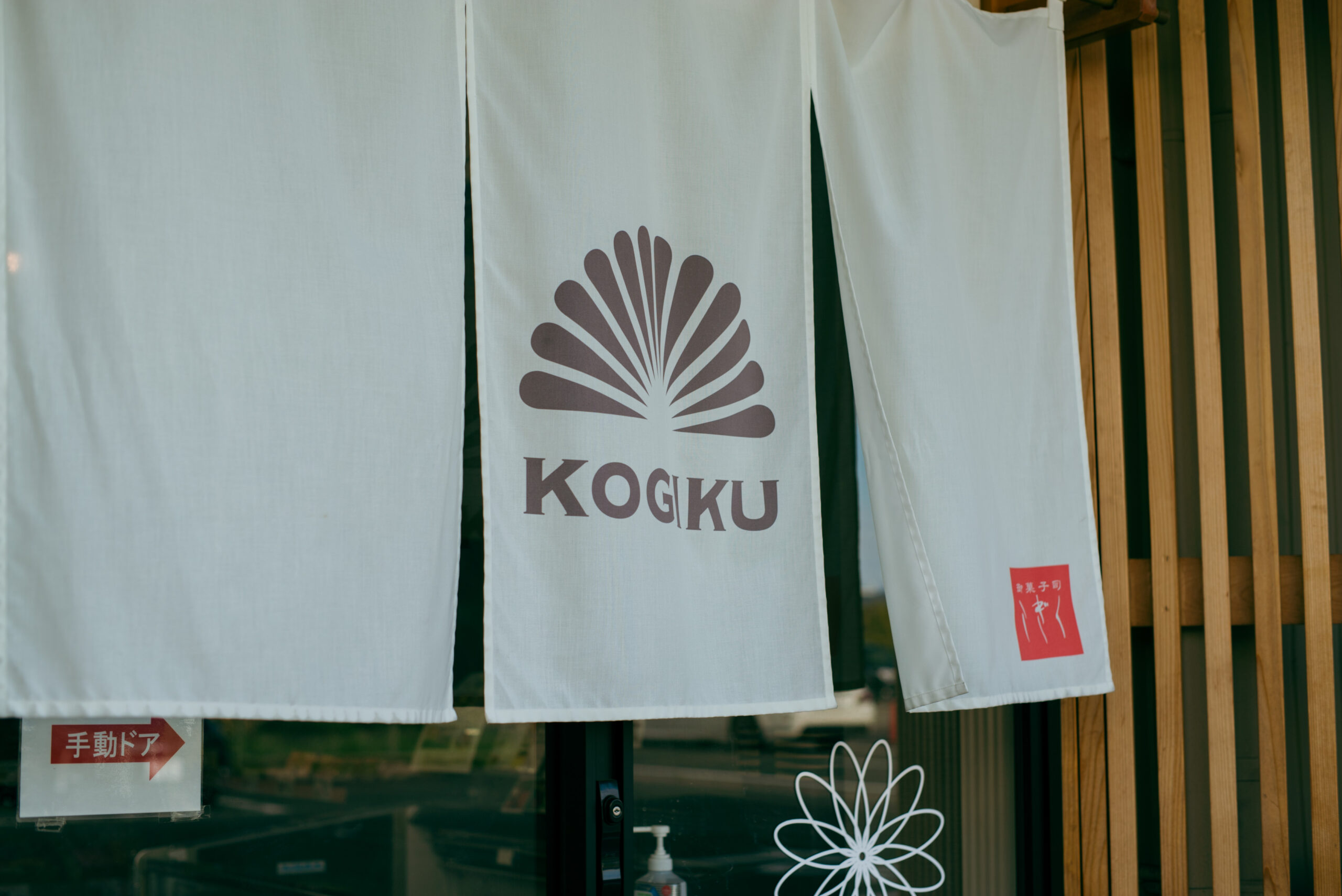
To conclude our Hamamatsu journey, we visited Kogiku, a confectionery store with a 130-year history. It specializes in traditional Japanese confections and innovative Western sweets, with a focus on creating unique flavors by hand.
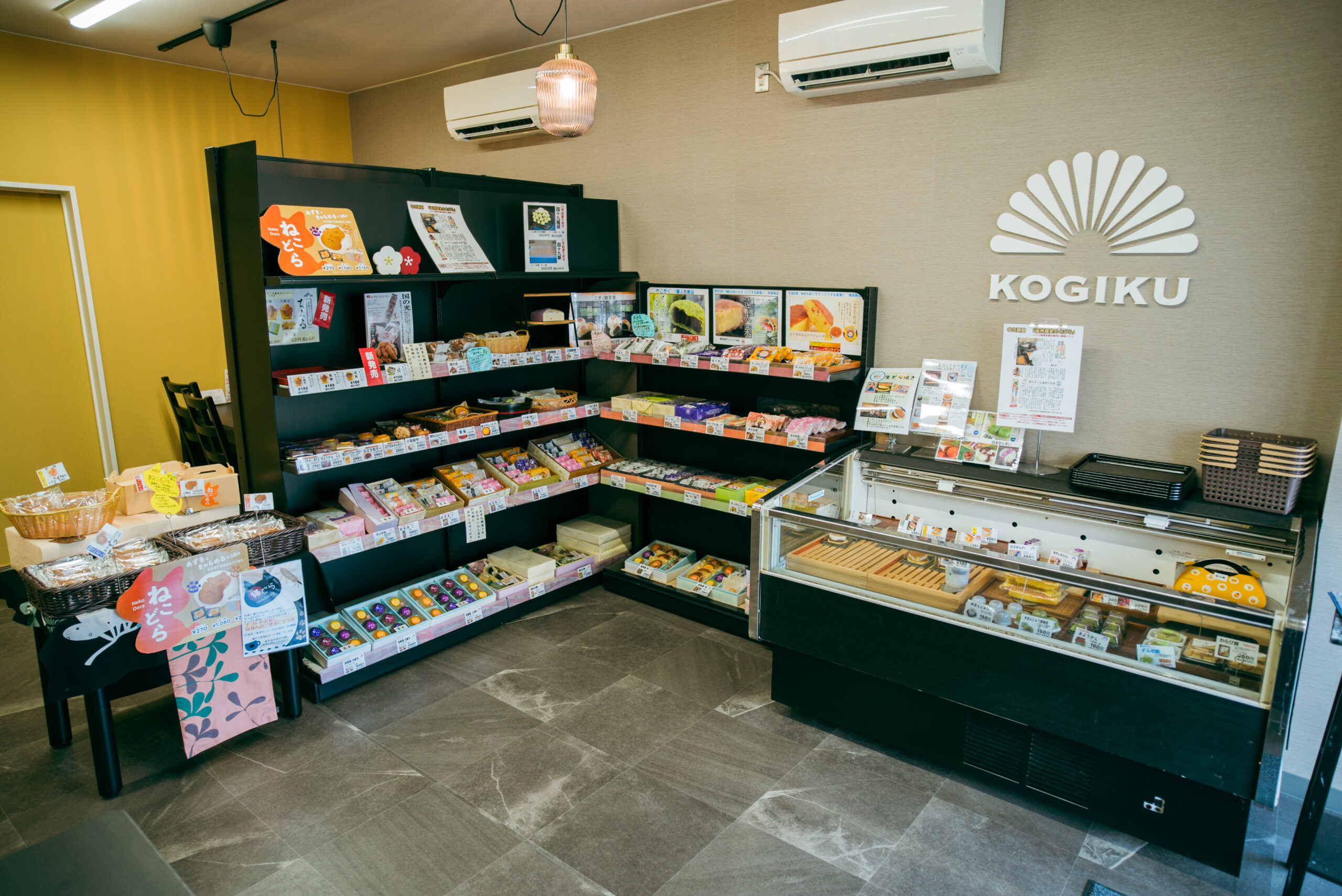
Despite its long legacy, Kogiku embraces the notion that tradition and innovation are not mutually exclusive. While preserving their heritage, they continually develop new ideas for their lineup. This has given birth to numerous Japanese sweets with a modern twist that excel in both taste and visual appeal.
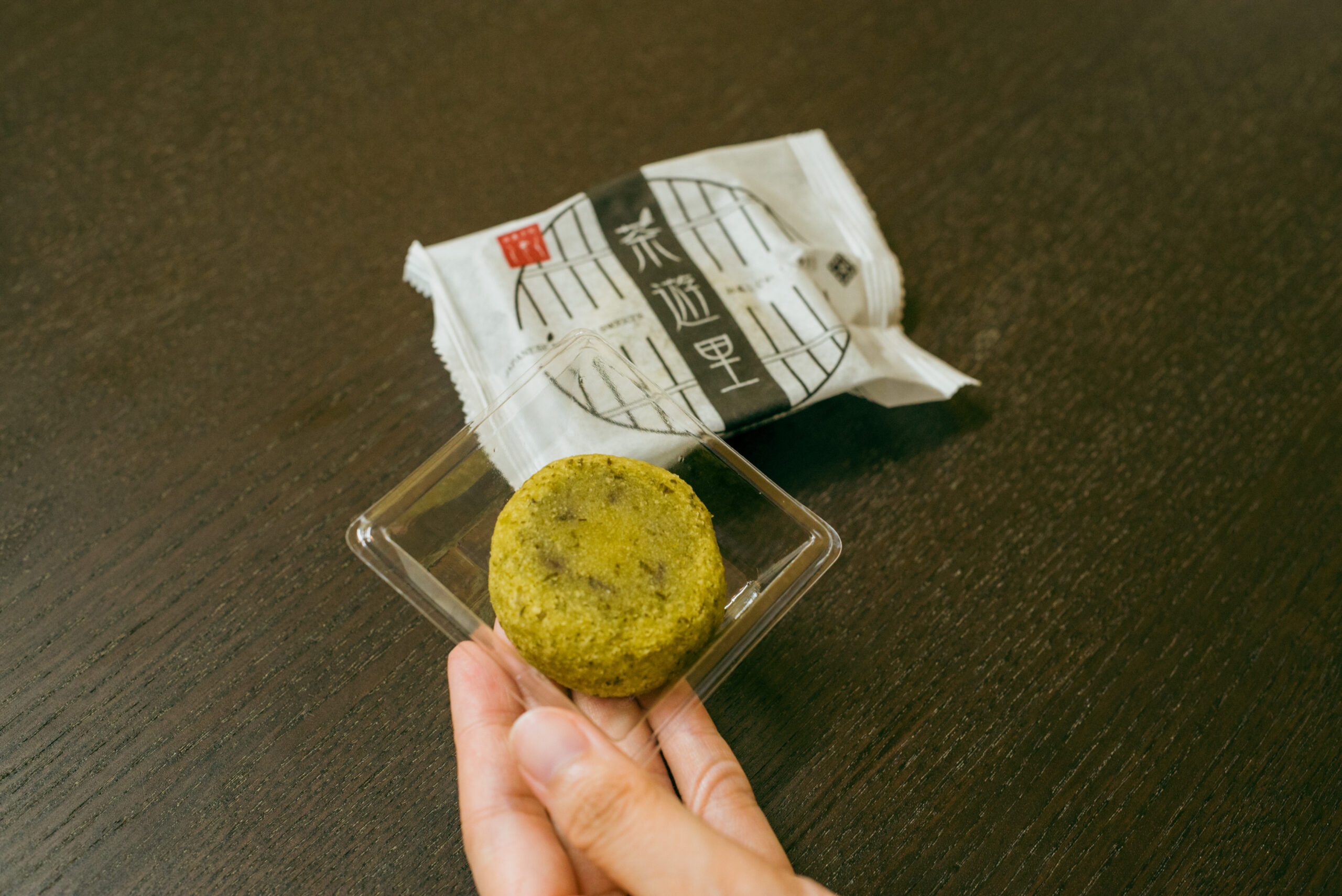
Kogiku also has a range of confections symbolizing each Japanese era from Meiji to Heisei. A standout from the Heisei Period (1989-2019) is Sayuri. It features Hamamatsu matcha with a thin, emerald-green outer layer encasing a hefty helping of red bean paste made from Hokkaido Tokachi azuki beans, yielding a soft, melt-in-your-mouth texture.
Along with takeout, Kogiku has a Japanese-style cafe space and drive-through service. We sat down and ordered the Neko Dora, a cute cat-shaped sandwich filled with ice cream and azuki paste; and the Nama Dorayaki, a classic Japanese dorayaki pancake with fresh cream and red bean paste. While exhausted after our three-day Hamamatsu journey, these adorable and delicious treats lifted our spirits, concluding our trip with a smile on our faces!
Culinary Tradition and Innovation in Hamamatsu
We hope this article has given you a taste of Hamamatsu’s diverse food and tea culture. Rather than just stuffing our faces, we joined a bunch of unforgettable interactive gourmet experiences, like a tea-guessing game, catching our own eel, sampling sweets fusing Japanese and Western flavors, and picking seasonal fruits. Whether you’re traveling from Osaka to Tokyo on the bullet train or heading from Tokyo to the Kansai region, consider making a stop at Hamamatsu to treat yourself to the city’s countless delicacies.


